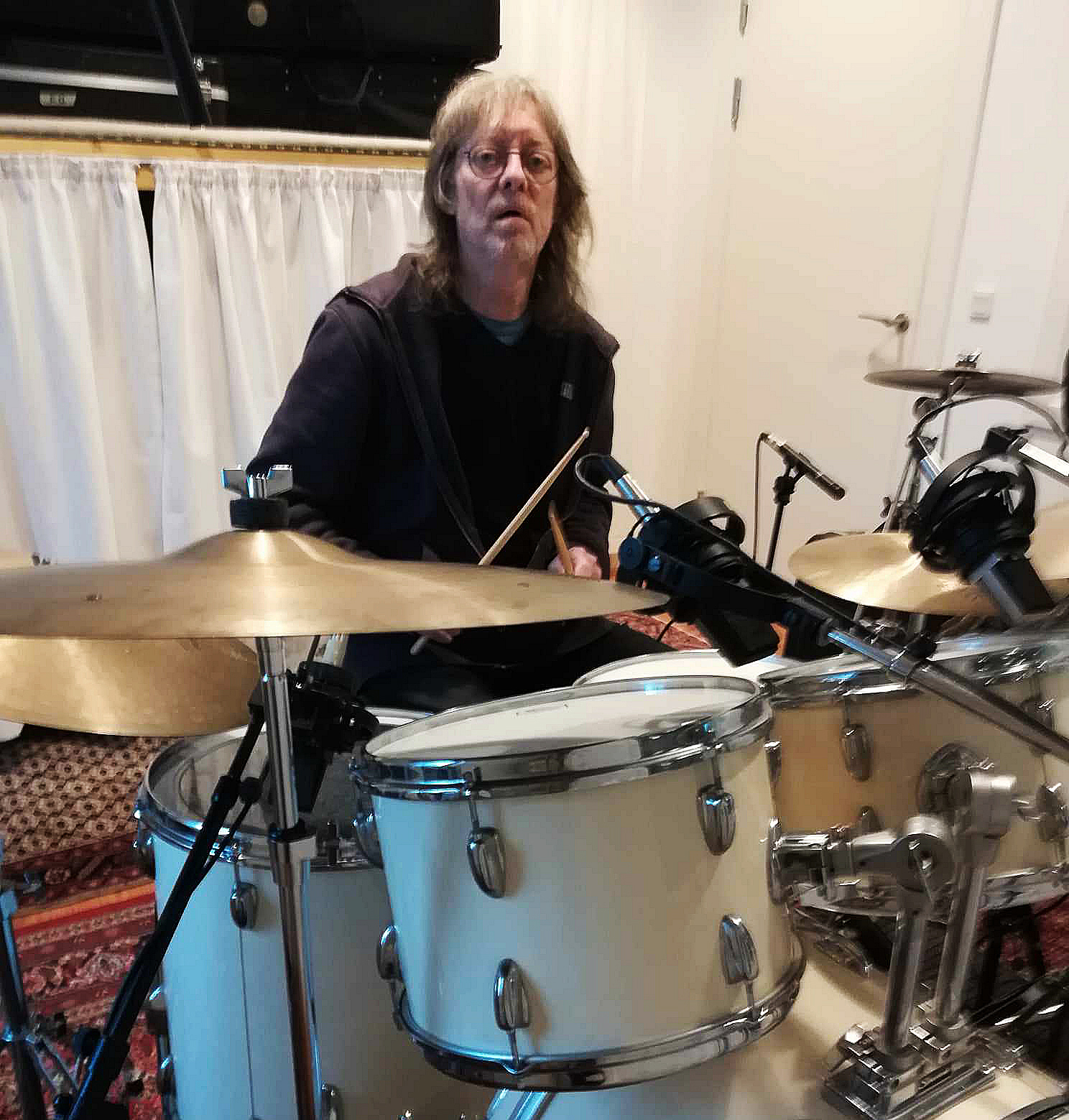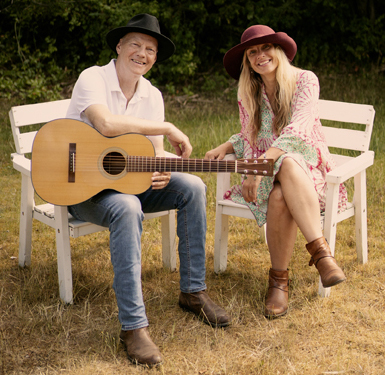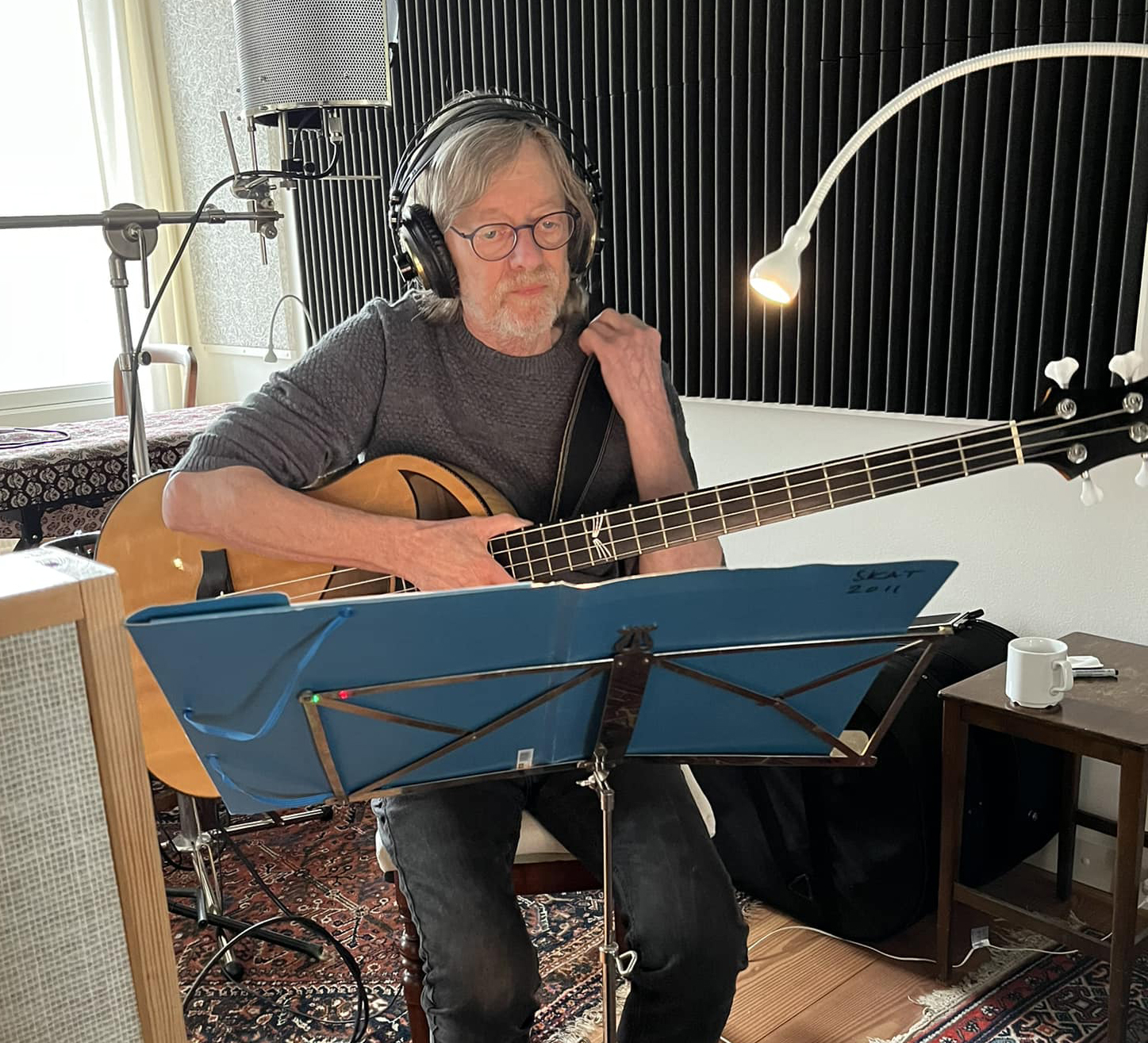ACHE Danish Rock Band Historical Picture Gallery 1964 to 1976
|
"Classical" ACHE from 1964 through 1976, presented backwards in time.
This webpage focuses on the various "periods" and shared music projects of the active ACHE musicians since the very beginnings, even before ACHE was eventually formed and named, in 1968. Picture Galleries 1975-1981, 1981-2019, 2019-2022 and 2023 till the present are also available - see links at page bottom. ACHE Gallery first publicized in Summer, 2022. Narratives, scannings, photo editing & HTML coding by Torsten Olafsson. |
Finn Olafsson's Website - Torsten Olafsson's Website - Claus Rasmussen's Danish Rock History Website: Alrunen
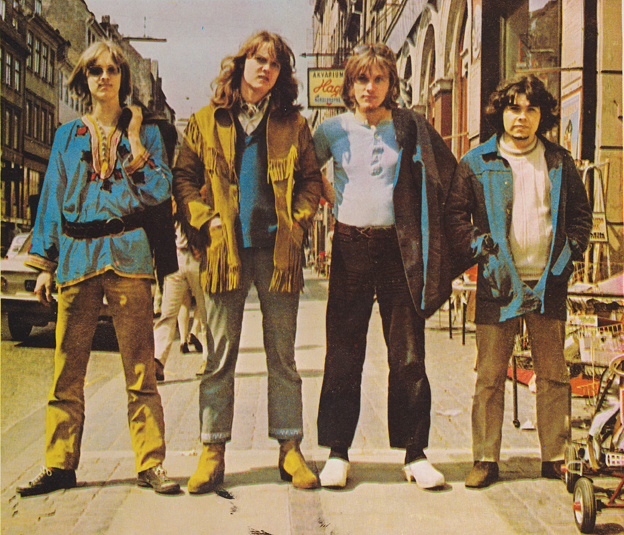
ACHE Rock Band in Central Copenhagen, Denmark, Early Summer 1970
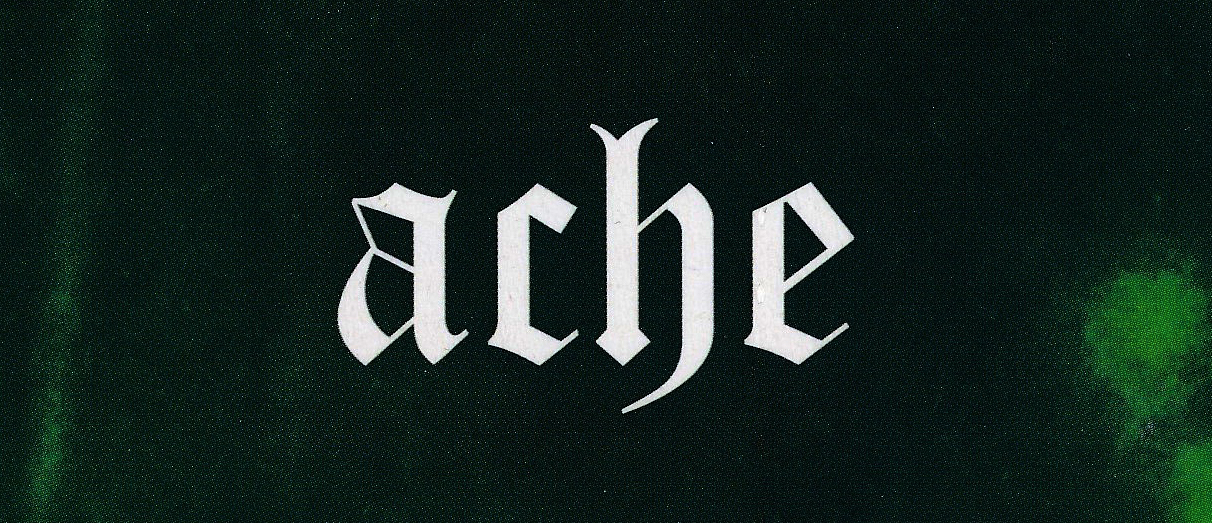
ACHE Rock Band Green Man Logo, 1971
1976: CLASSICAL ACHE - The 1st Re-release
of "De Homine Urbano" & "Green Man", Double-LP & MC
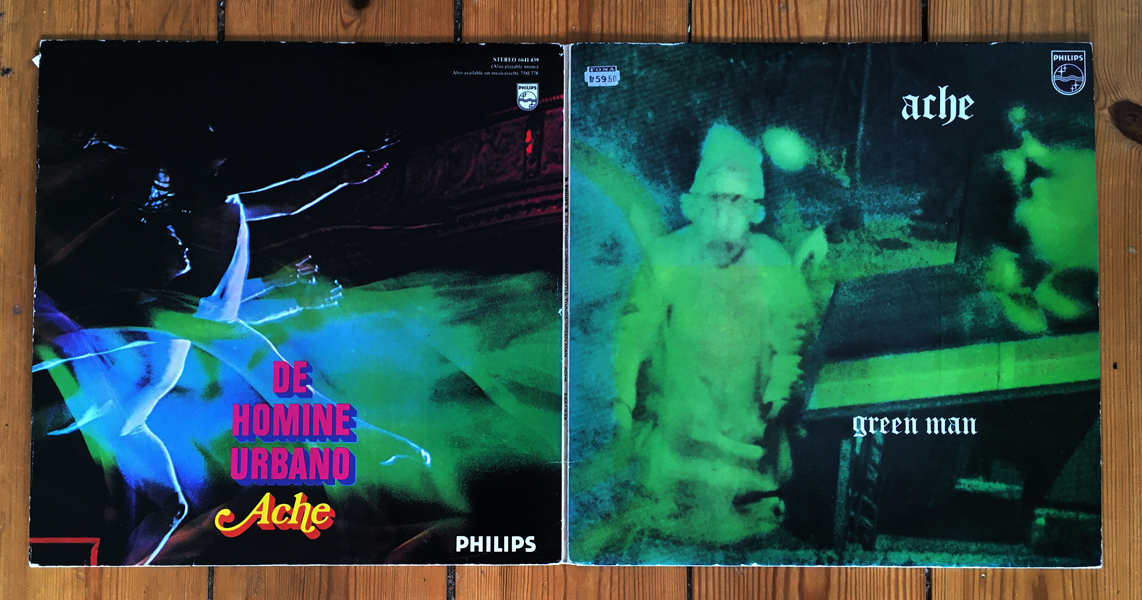
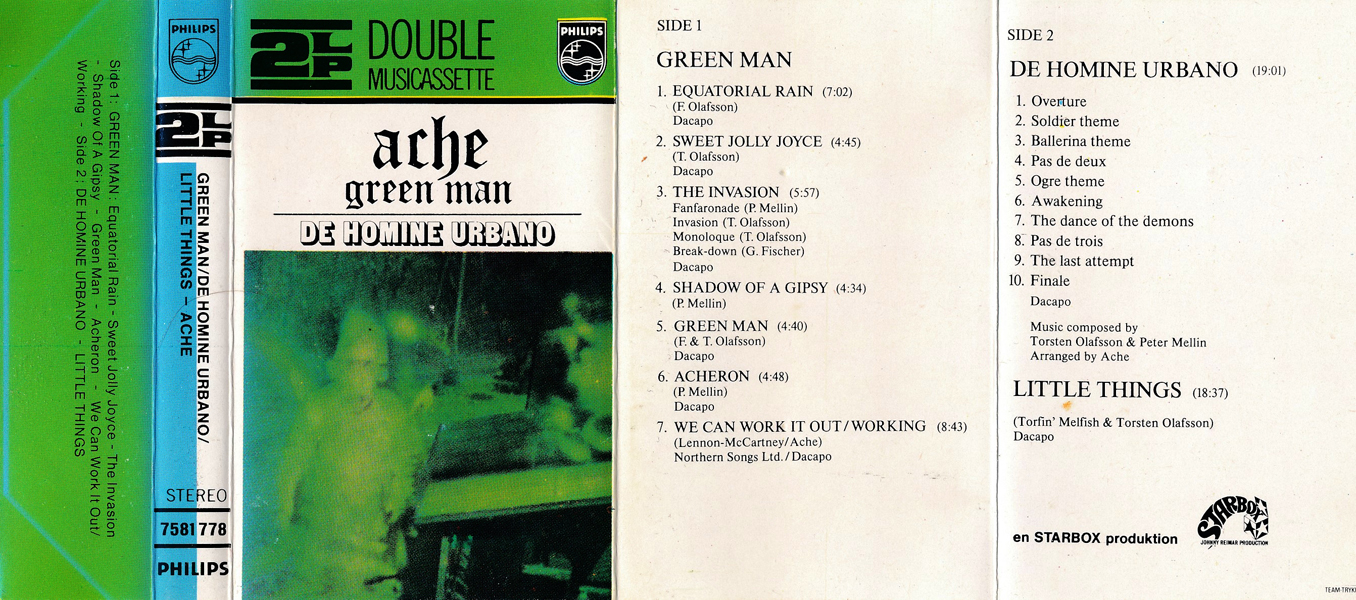
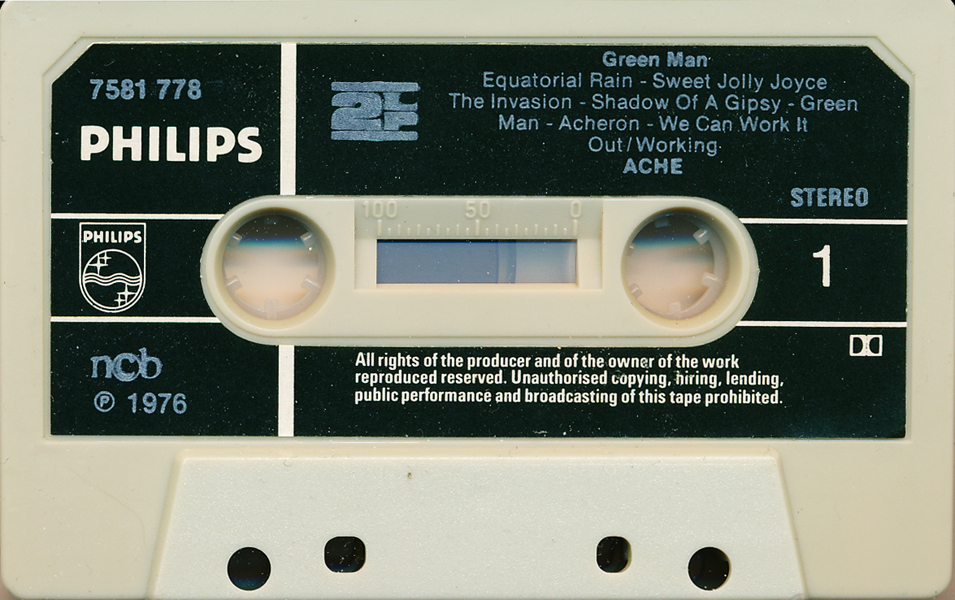
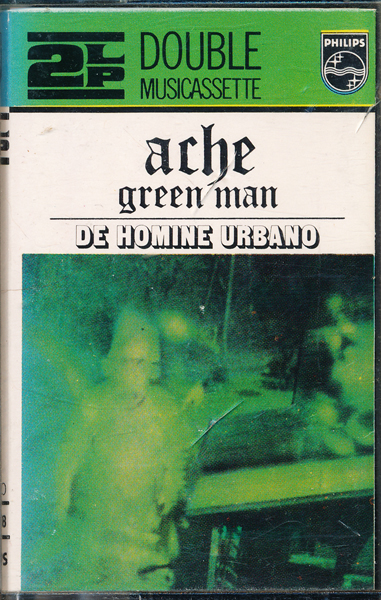
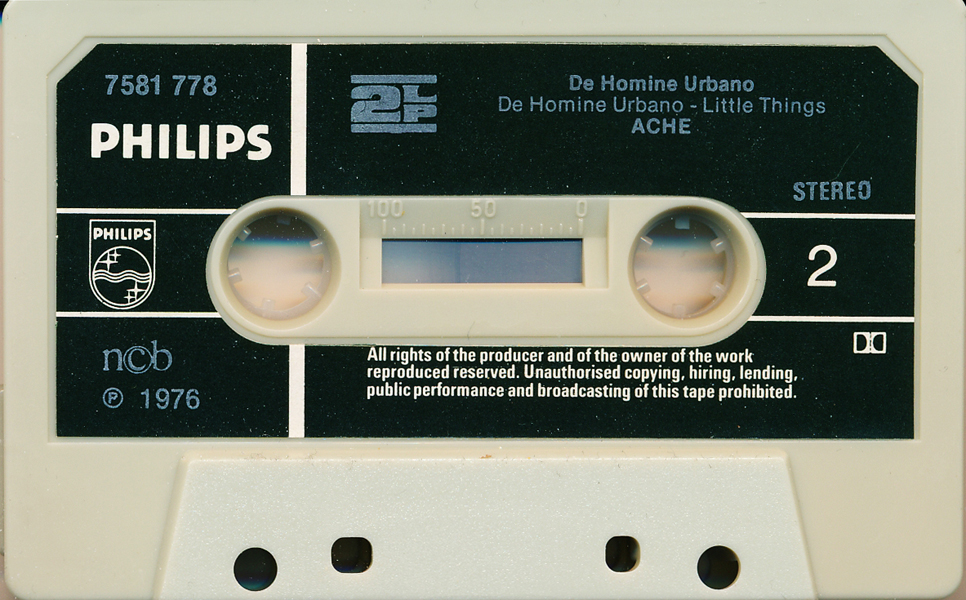
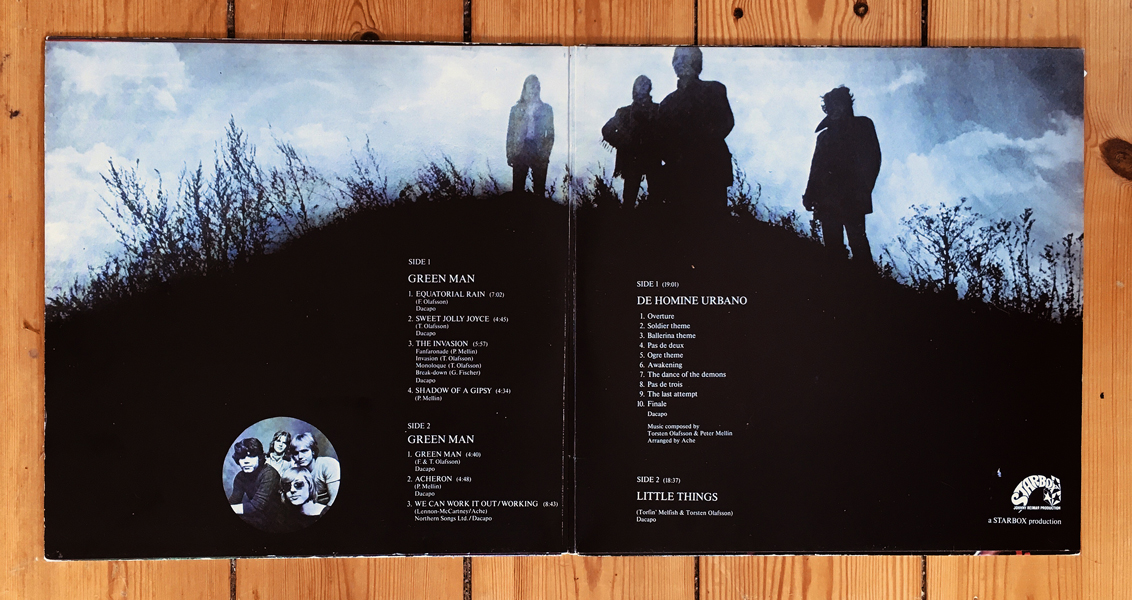
|
In 1976, producer Johnny Reimar's then music production firm Starbox
prompted PHILIPS to re-issue both "De Homine Urbano" and "Green Man" on separate vinyls
but as a "double album" as well as on one MC/music cassette.
For reasons still unverified, the company happened to confuse and swap the two labels on the first LP, so that the LP record side with the "De Homine Urbano" music on it carries the "Little Things" music - and vice versa. That "mistake" was later repeated at least once, f.i. in Autumn 2000, when Universal Music Denmark had taken over the master rights and re-issued the two albums, for the first time on CD. |
1972: ACOUSTIC ACHE
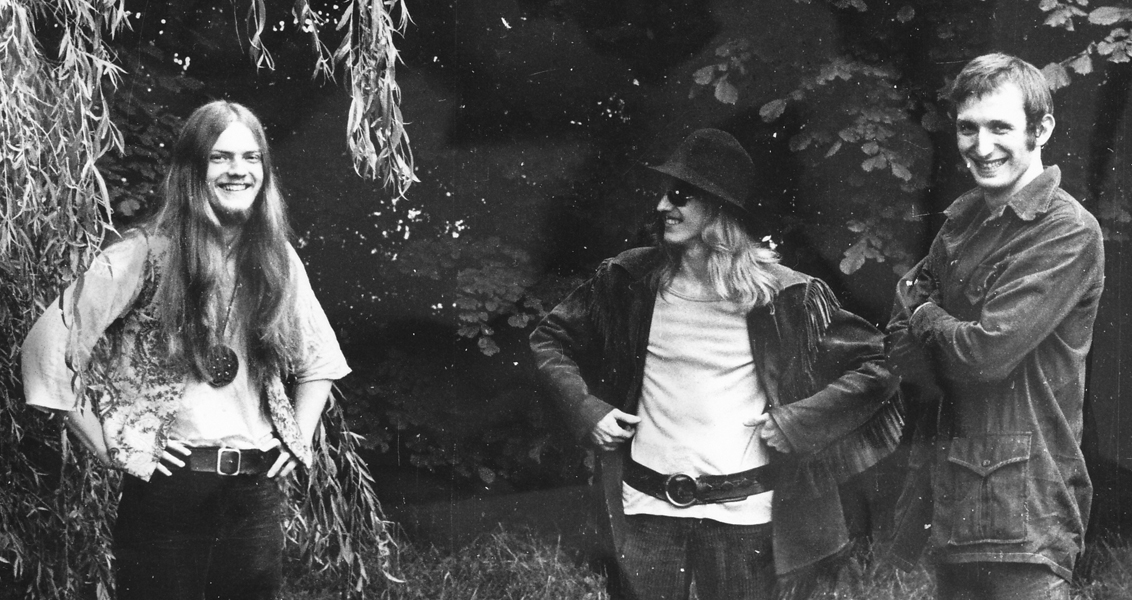
ACOUSTIC ACHE line-up from the left: Finn Olafsson, Torsten Olafsson, Andrzej Kosciuk
|
This quite short, but really intense experiment took place when, around New Year 1972, Finn and Torsten
had moved to the countryside SW of Copenhagen to live in an old rented, cosy farm house.
In friendly and creative company with Polish singer and violinist Andrzej Kosciuk - then also a film maker in his home country, they created new music for acoustic guitars, vibraphone, piano, percussion, and vocals - experiences that would later crystallize into Finn Olafsson's solo acoustic guitar and acoustic/electric record projects like f.i. "Savannah", 1976, "Acoustic Guitar", 1980, "Elements", 1981, and more recently: "Music From North Sealand", 2011. |
MID-1971: The SILVER RECORD & The LAST "CLASSICAL ACHE" CONCERT ...
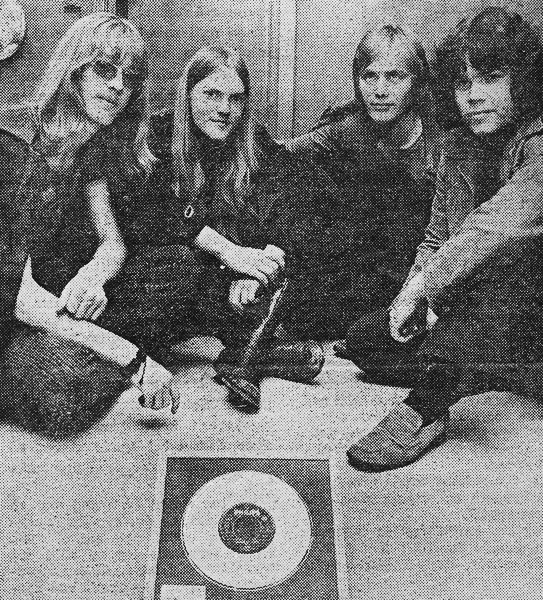
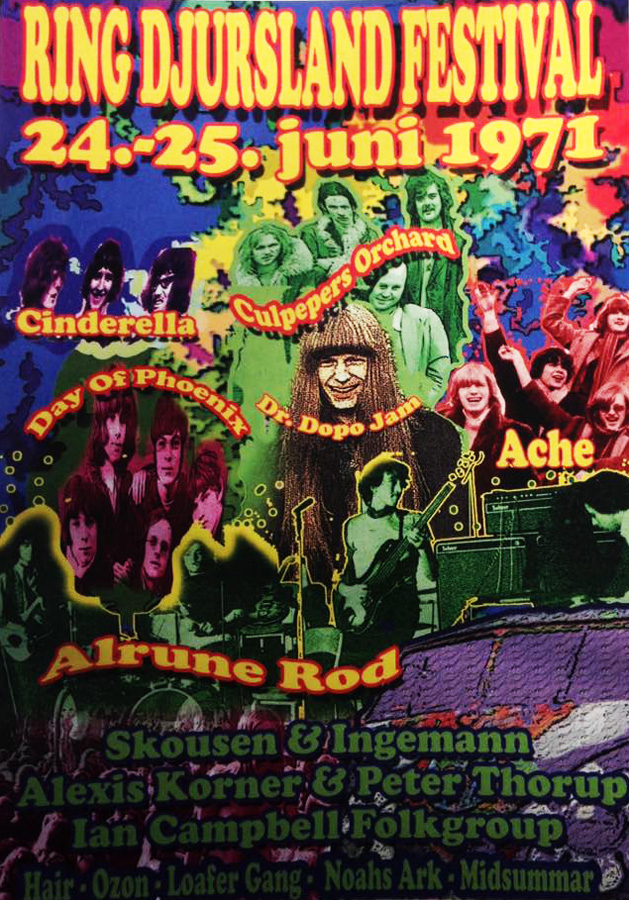
|
On June 17, 1971, ACHE was honoured with a Danish "Silver Record" for the sales of many 25.000 copies sold
of the now quite respected "Shadow of a Gipsy" song that was recorded one year previously: In Early Summer, 1970.
Around the very same day - in mid-June, 1971! - PHILIPS finally released ACHE's second LP album, "GREEN MAN", after more than half a year of "holding it back" after it had been recorded and mixed as early as in mid-November, 1970 ... Only one week later, on June 25, 1971, the original ACHE musicians: Finn, Peter, Glenn, and Torsten, performed together for the very last time at a rock music festival in mid-Eastern Jutland in Western Denmark. End of story, or - just ... maybe, or ... ? |
1971: CLASSICAL ACHE - The CONCERTS
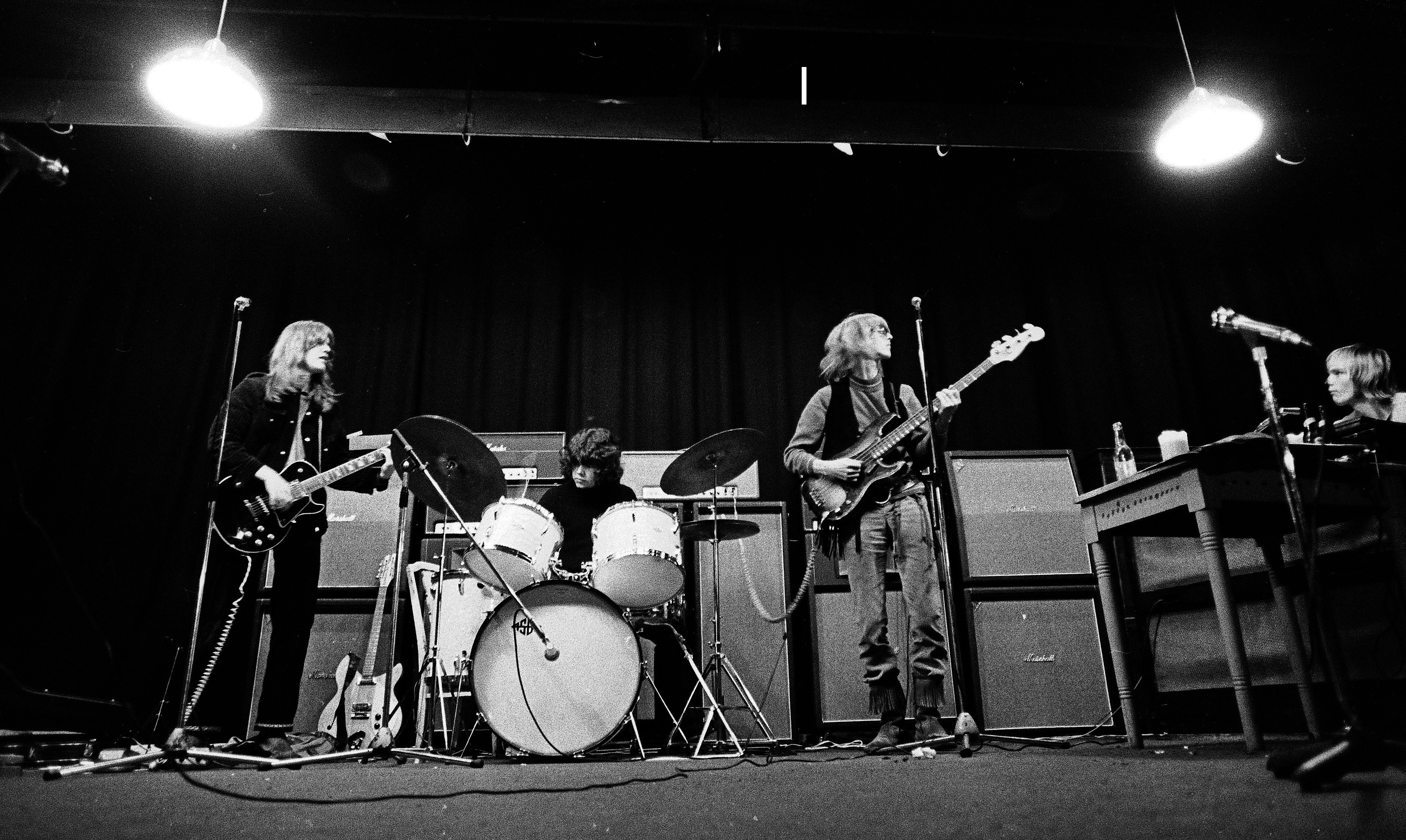
Finn Olafsson, Glenn Fischer, Torsten Olafsson, Peter Mellin,
rehearsing for the Ache Rock Theatre in early 1971.
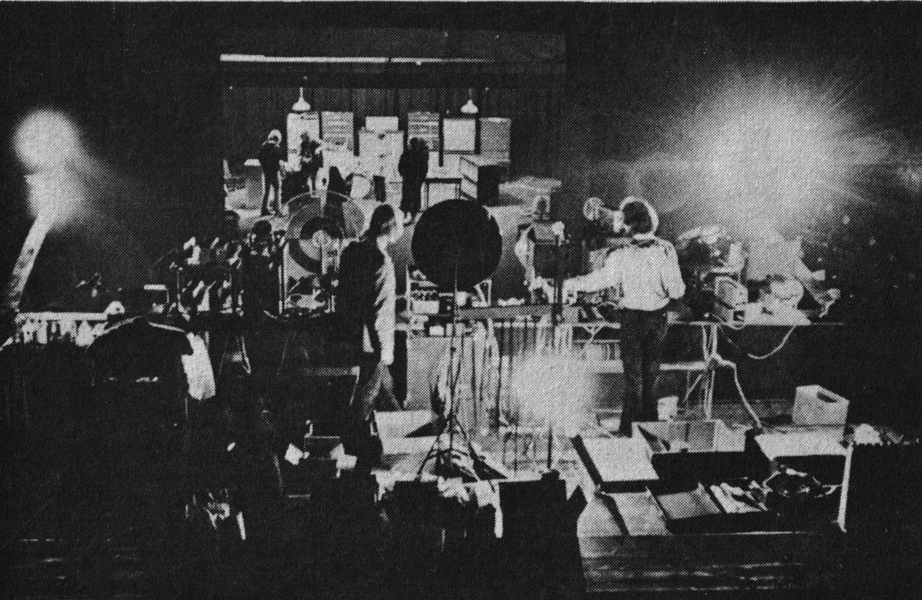
The psychedelic lights group LYSHOLMORTENSEN, formed by brothers Svend-Aage Mortensen & Børge Mortensen,
rehearsing with ACHE for the ACHE ROCK THEATRE multi-media stage show in early 1971 Copenhagen.
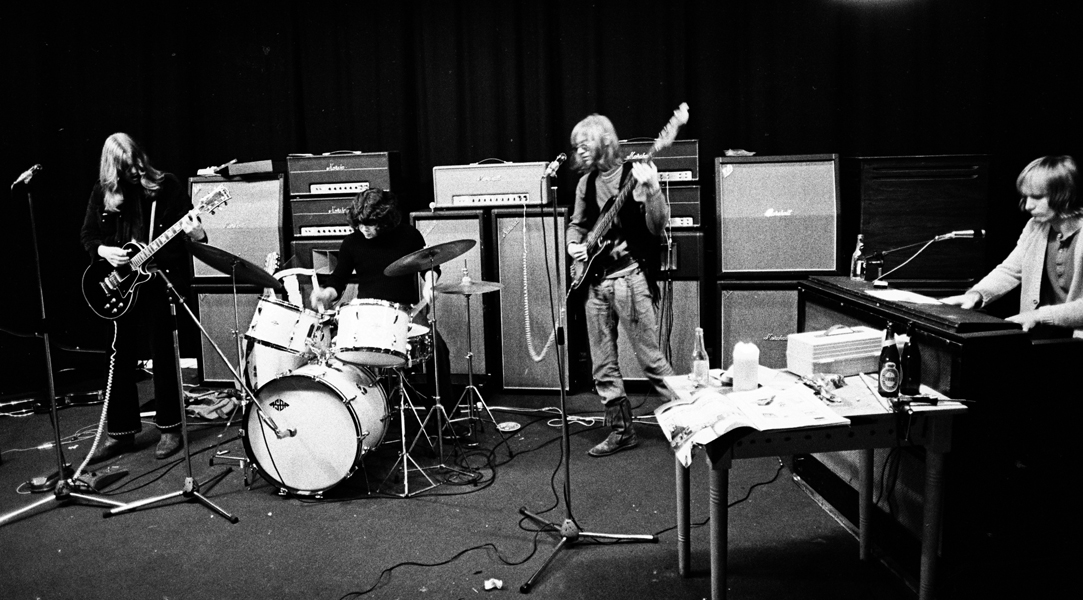
Finn Olafsson, Glenn Fischer, Torsten Olafsson, Peter Mellin, rehearsing for the Ache Rock Theatre in early 1971.
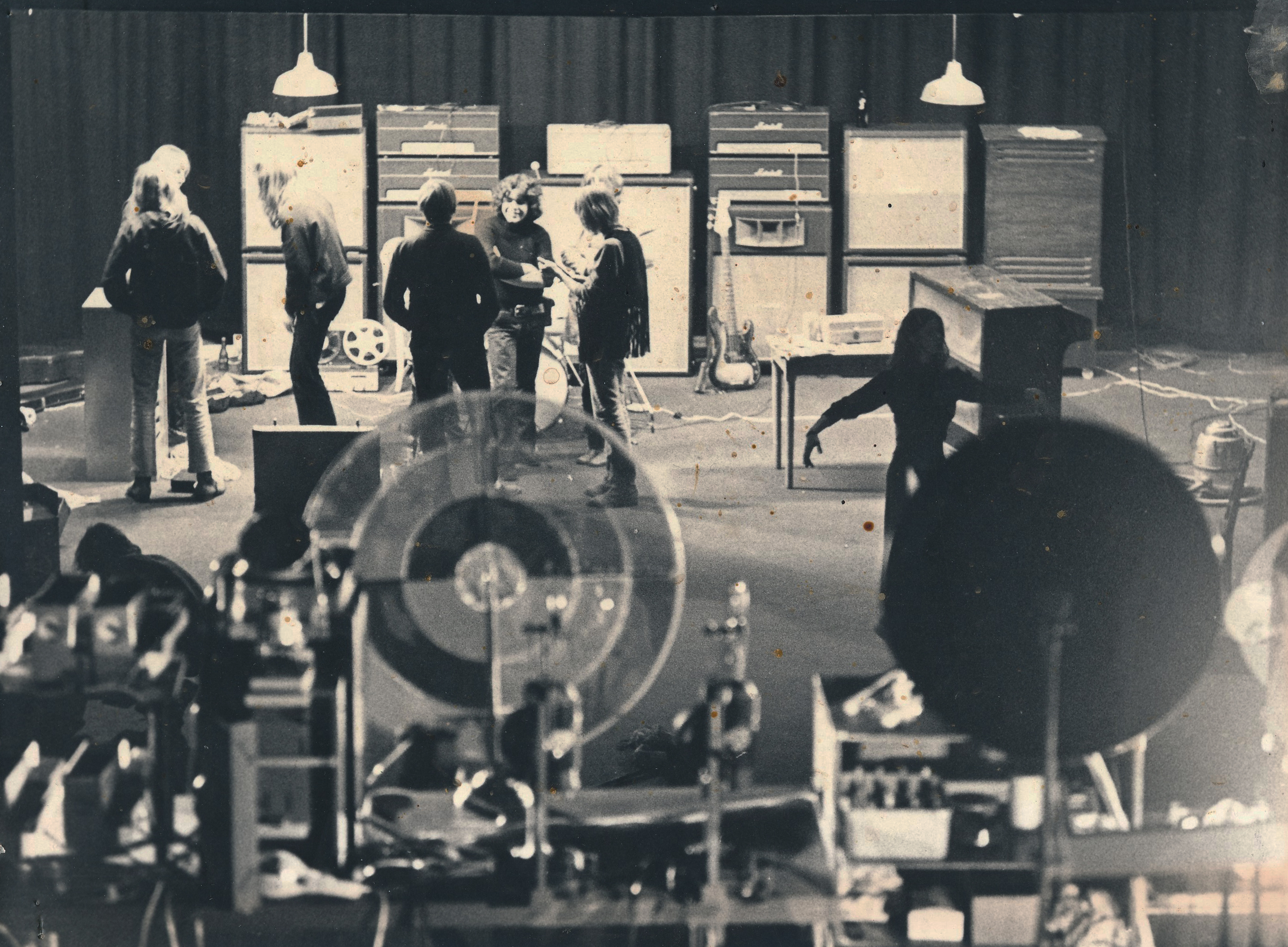
To the right, in front of Peter Mellin's M3 Hammond organ, you see Hungarian ballet dancer Judith Horvath warming up.
1970-1971: The 2nd LP ALBUM: "GREEN MAN"
featuring Glenn Fischer, Torsten Olafsson,
Peter Mellin, Finn Olafsson
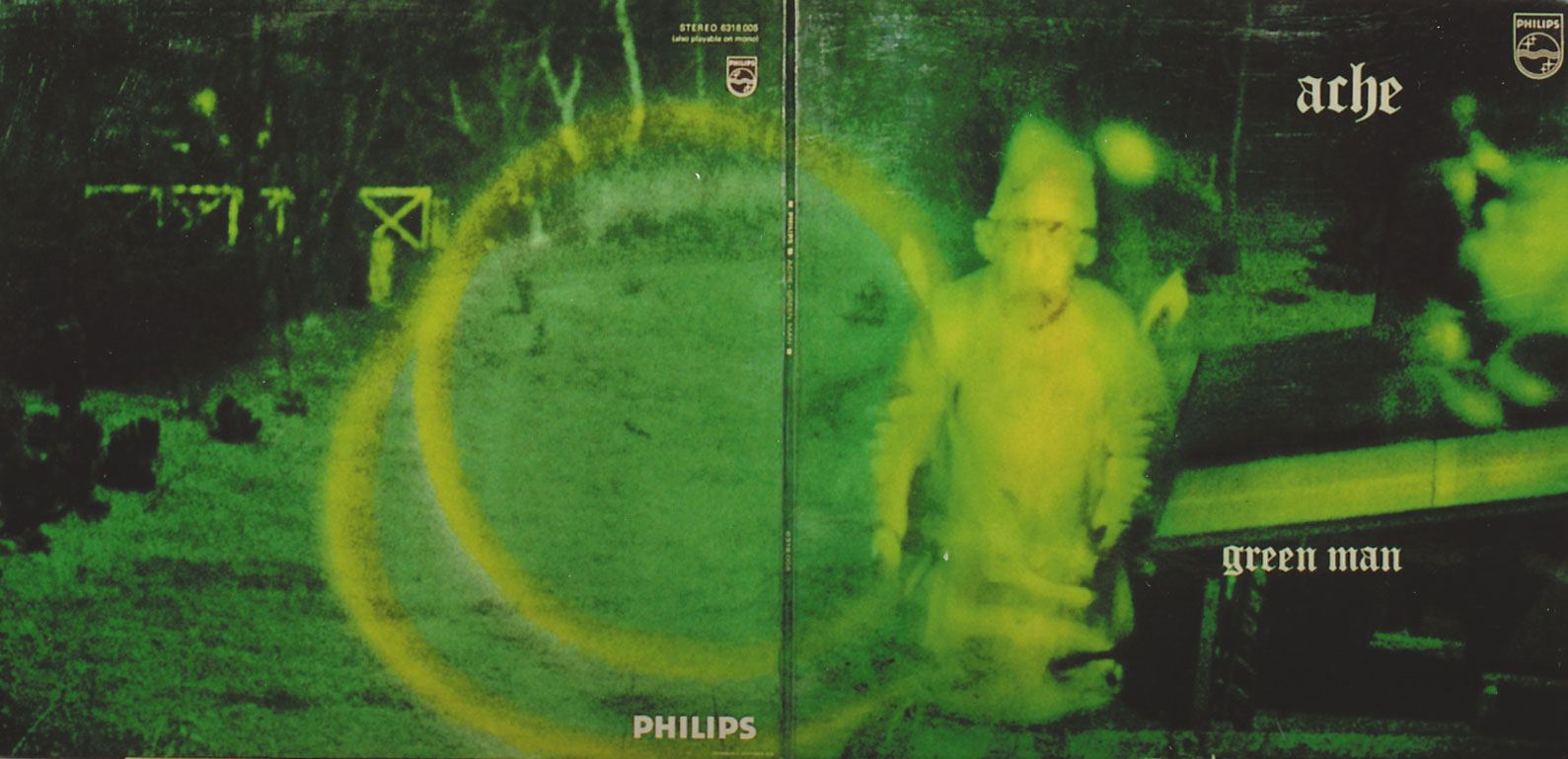
"Green Man", 1971, 2012 Esoteric Recordings, UK, remastered CD re-issue
1971 "Green Man" gatefold cover perfectly reproduced for CD in 2012
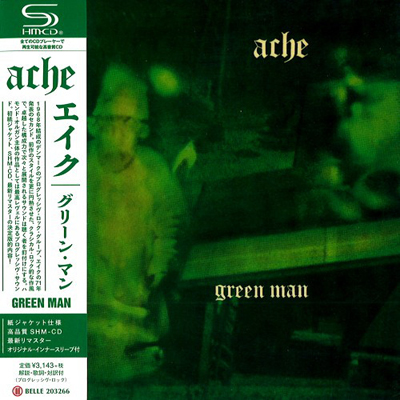
"Green Man", ACHE's second LP vinyl album, 1971
Belle Antique, Japan. Released as remastered CD on March 25, 2020.
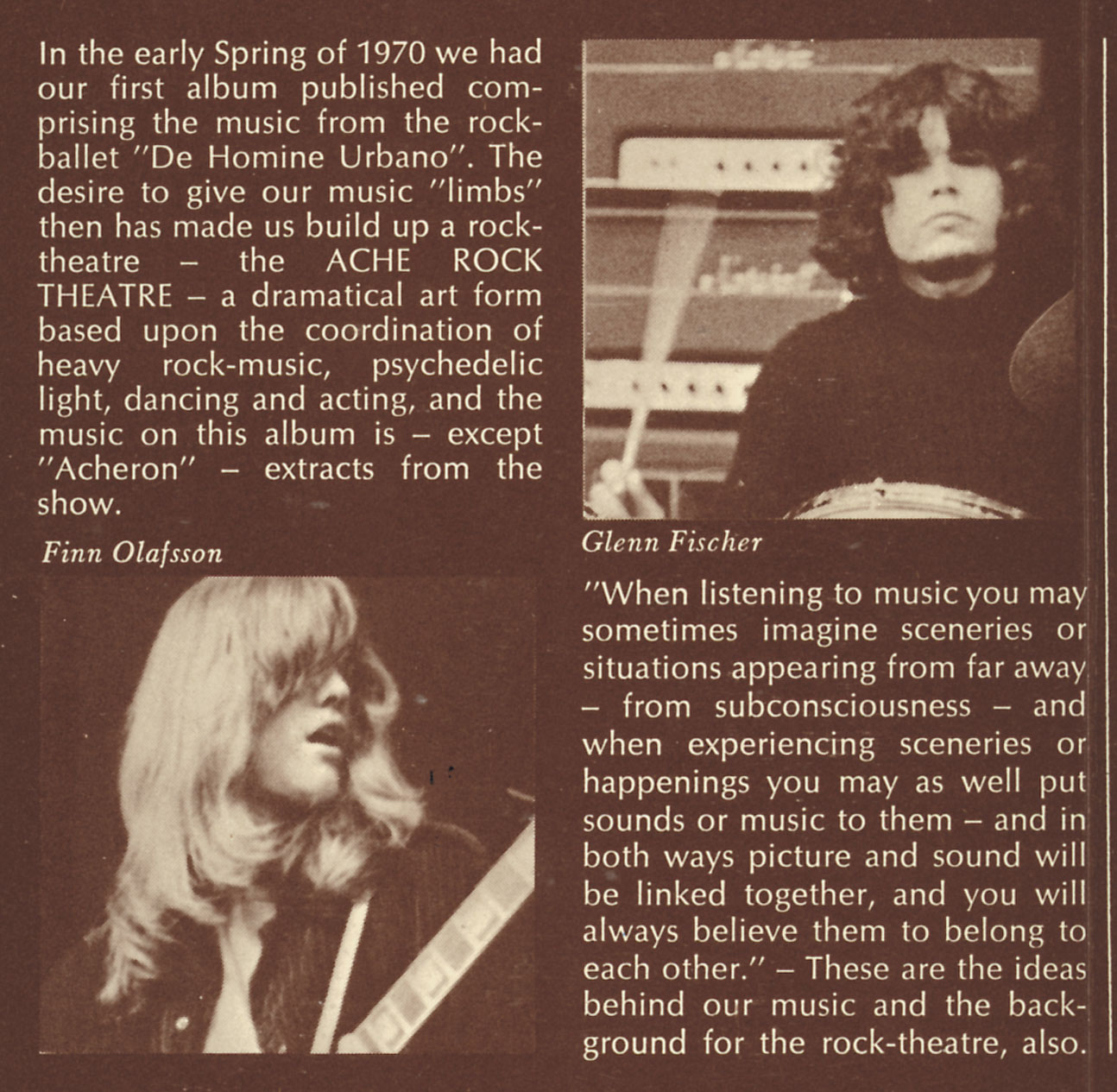
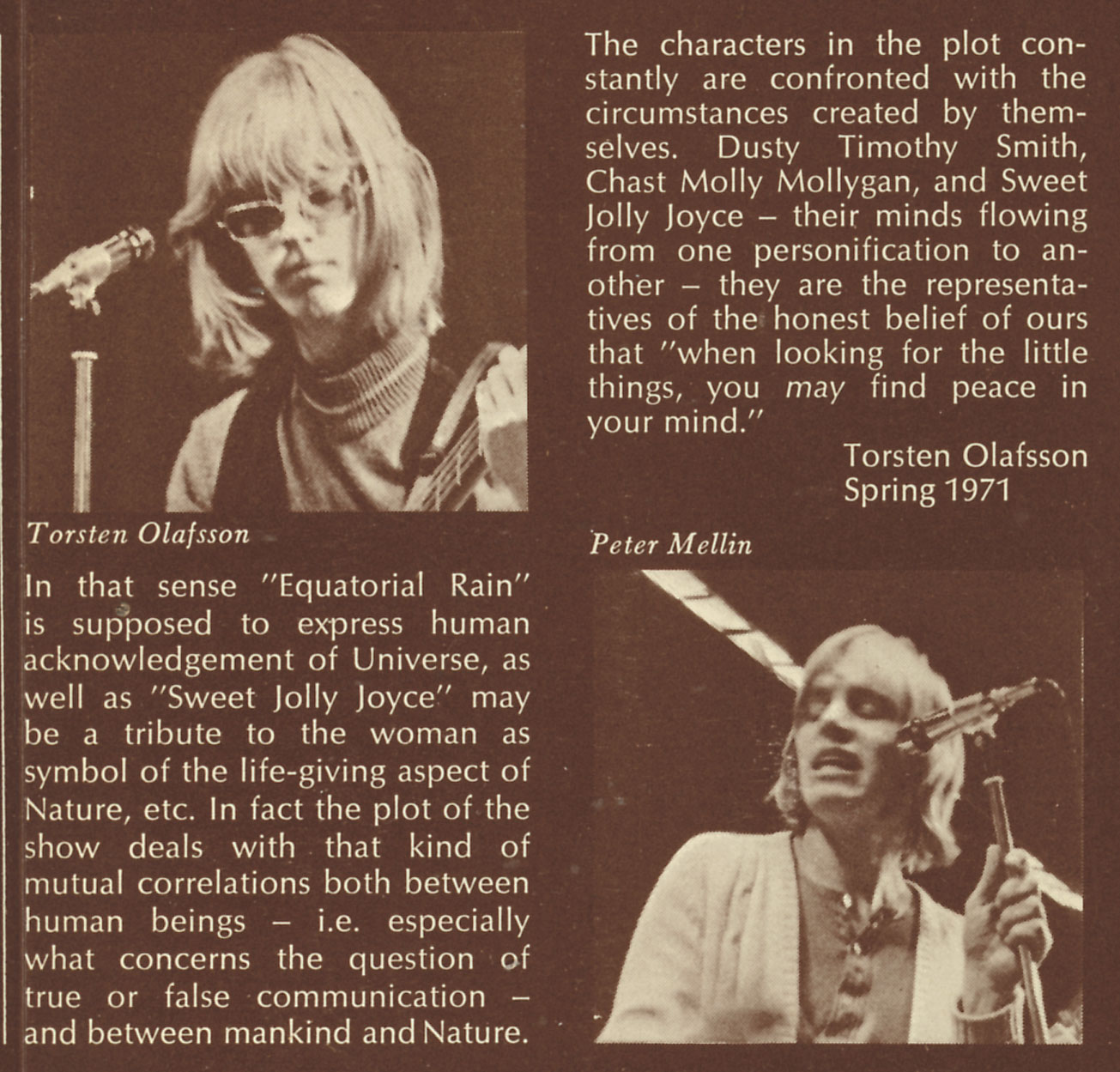
Center section of the 1971 "Green Man" four page gatefold cover, pages 2 and 3.
Designed by Johannes Mølleskov and Torsten Olafsson, 1970.
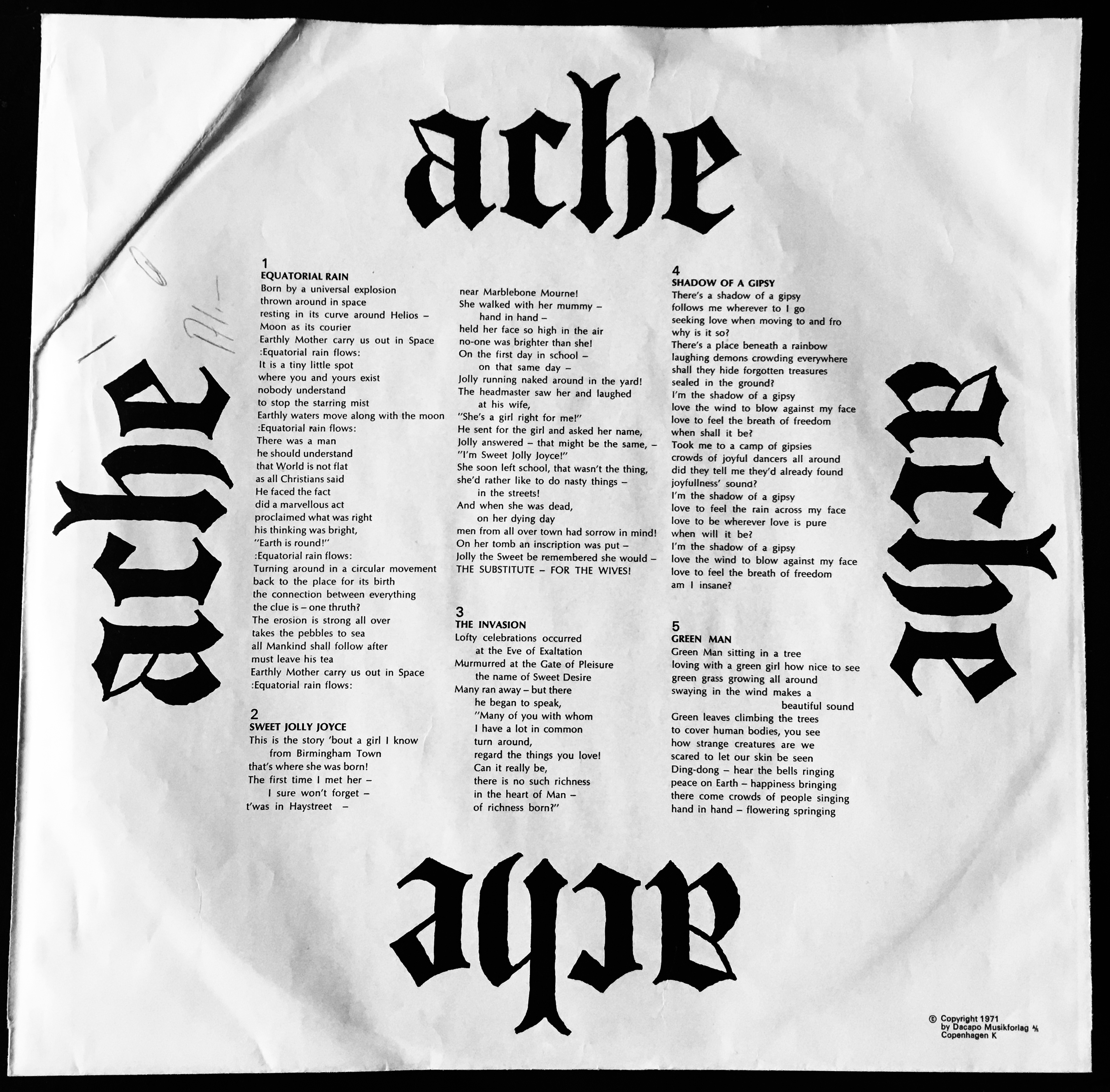
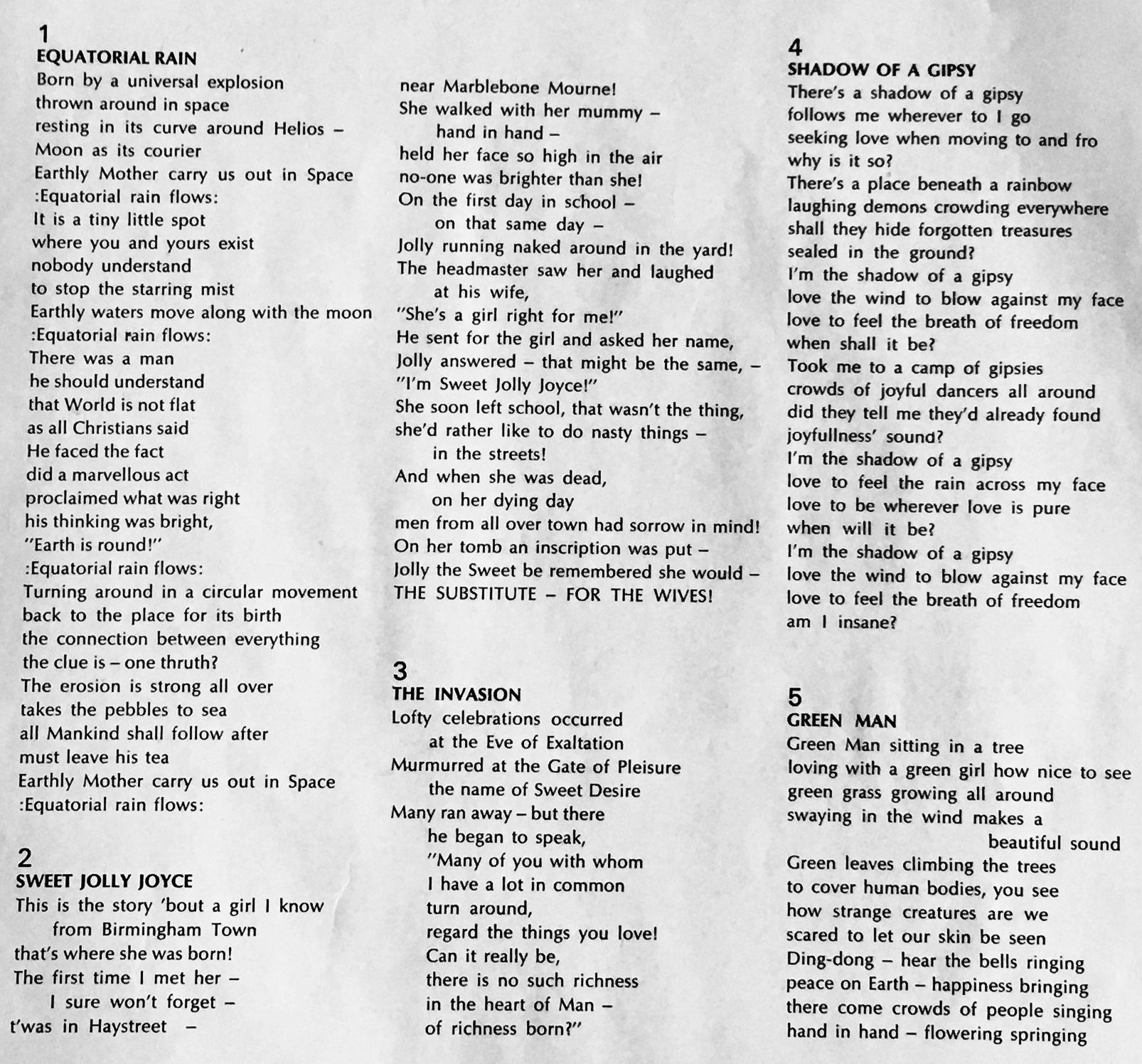
Lyrics by Torsten Olafsson © Dacapo Musikforlag A/S / Warner/Chappell Music Inc.
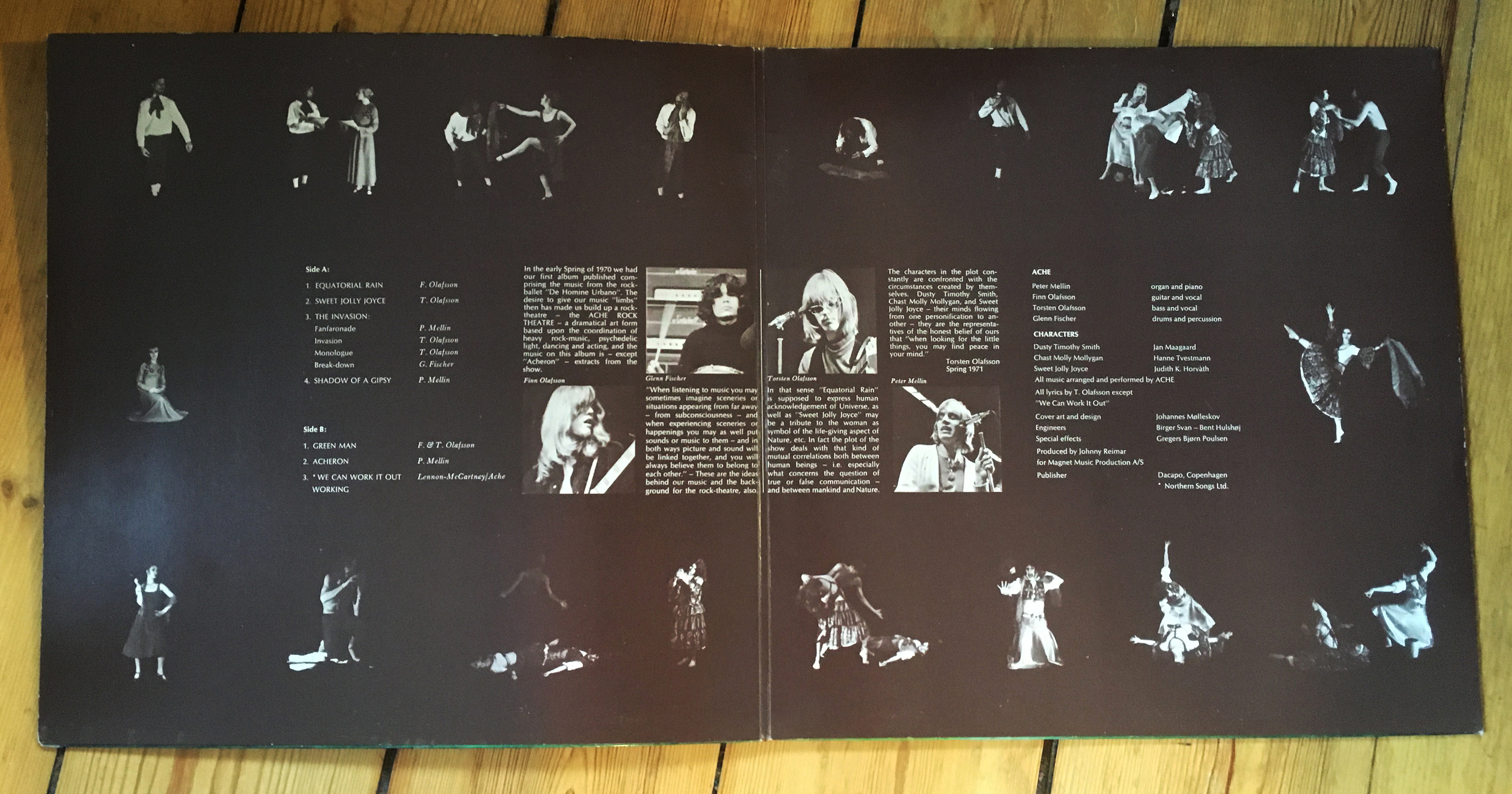
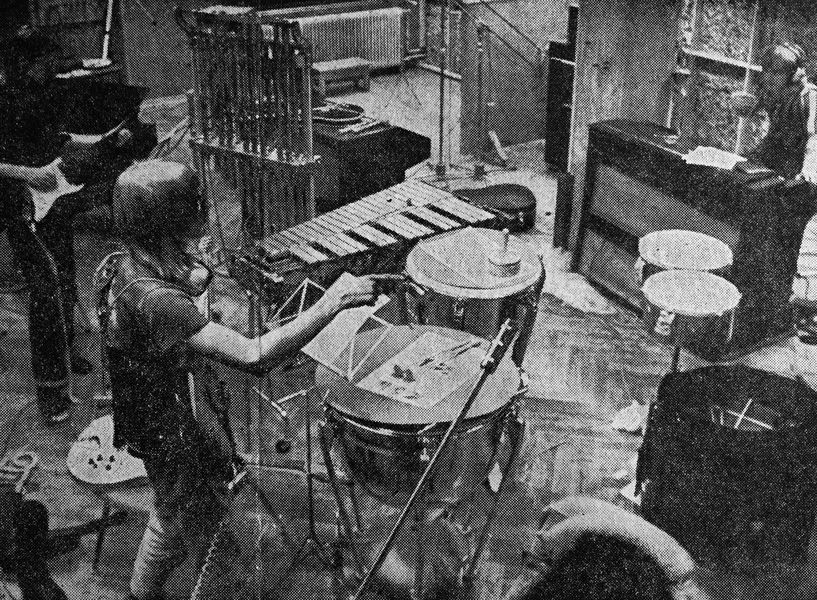
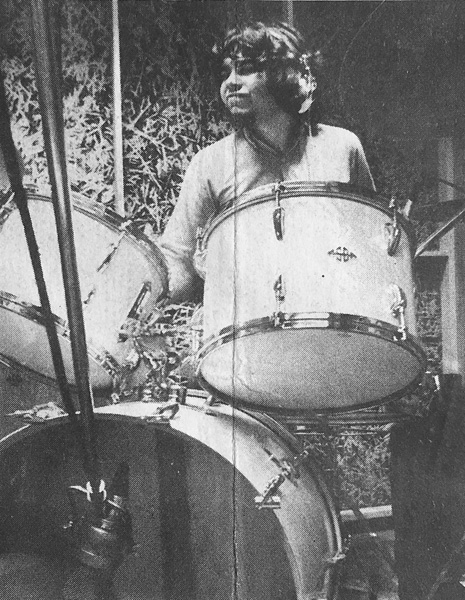
|
The "Green Man" album was recorded in the Metronome Studio A, Copenhagen, in only 3 days, namely on November 9, 10 & 12, 1970, then possibly mixed on the 13th.
Photos from the left: Finn Olafsson, Torsten Olafsson, Peter Mellin, Glenn Fischer. For this recording session the following additional instruments were rented: A C.F. Martin D-18 steel-string acoustic guitar for the "Green Man" intro, played by Finn. A mini cembalo ("spinette") for the "Green Man" intro, played by Torsten. A set of tube bells for the "Sweet Jolly Joyce" outro, and a pair of concert timpanies for the "The Invasion" intro, both played by Glenn. A vibraphone for a solo in "Acheron", played by Peter. A pair of timbales for the rhythm part of "Working" ("We can work it out"), played by Glenn. Peter Mellin played his magnificent original HAMMOND M3 organ with a 147 Leslie and Metronome Studio A's own STEINWAY grand piano. Glenn played his ASBA drum kit with two side toms and Zildjian cymbals. Finn played both Fender Stratocaster, Rickenbacker and Shaftesbury electric guitars amped by a full Marshall stack with a 100 watt Marshall lead top. Torsten played his mid-1960s Fender Precision electric bass guitar, amped by a complete Marshall stack like Finn's. The "Green Man" album was produced by Johnny Reimar for Nordisk Polyphon/PHILIPS. Sound engineer in charge was Birger Svan assisted by studio technician Bent Hulsrøj. |
1970: CLASSICAL ACHE - The CONCERTS
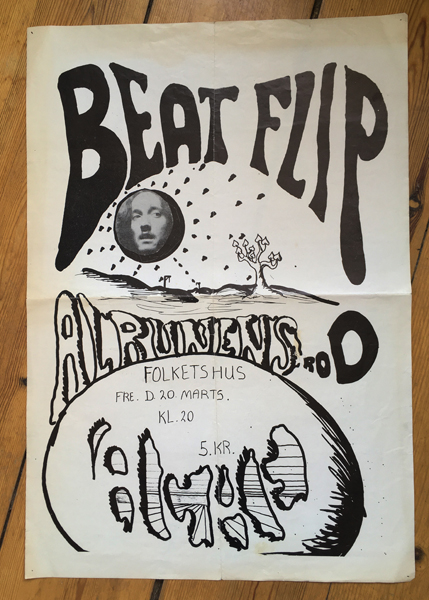
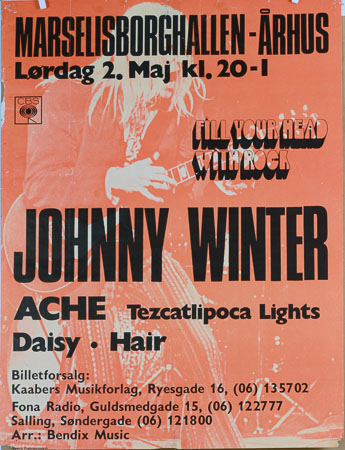
ACHE related concert posters, 1970:
Left: On March 20, 1970, ACHE performed together with ALRUNENS ROD,
a.k.a. ALRUNE ROD, at the local North Sealand town Elsinore venue
FOLKETS HUS, "The People's House". Original A3 size poster in T.O.'s possession.
Right: May 2, Marselisborghallen/The Marselis Castle Arena, support gig for Johnny Winter
Source, right, online poster collection by Claus Rasmussen, Denmark: https://koncertplakater.melipona.org/plakateralle/ &
http://koncertplakater.melipona.org/index2.html?fbclid=IwAR2ENz9uL5Ue1bIJF3AvHlv-S1EBfQTyTjomhnxQlD9jSLsY1iHu8wNYYcU
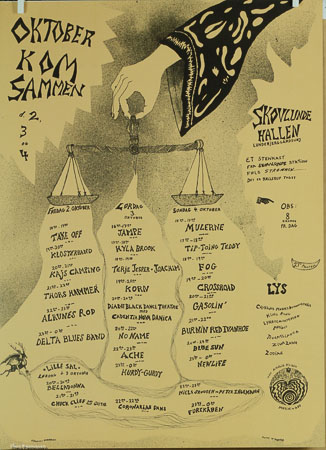
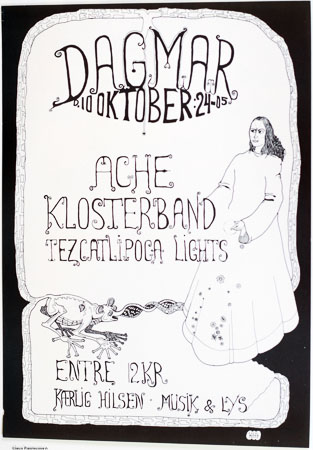
ACHE related concert posters, 1970: October 3: Skovlunde Sports Arena, Copenhagen Supurb Area
October 10: Dagmar Movie Theatre, C. Copenhagen, "Midnight Session"
Source, online poster collection by Claus Rasmussen, Denmark: https://koncertplakater.melipona.org/plakateralle/ &
http://koncertplakater.melipona.org/index2.html?fbclid=IwAR2ENz9uL5Ue1bIJF3AvHlv-S1EBfQTyTjomhnxQlD9jSLsY1iHu8wNYYcU
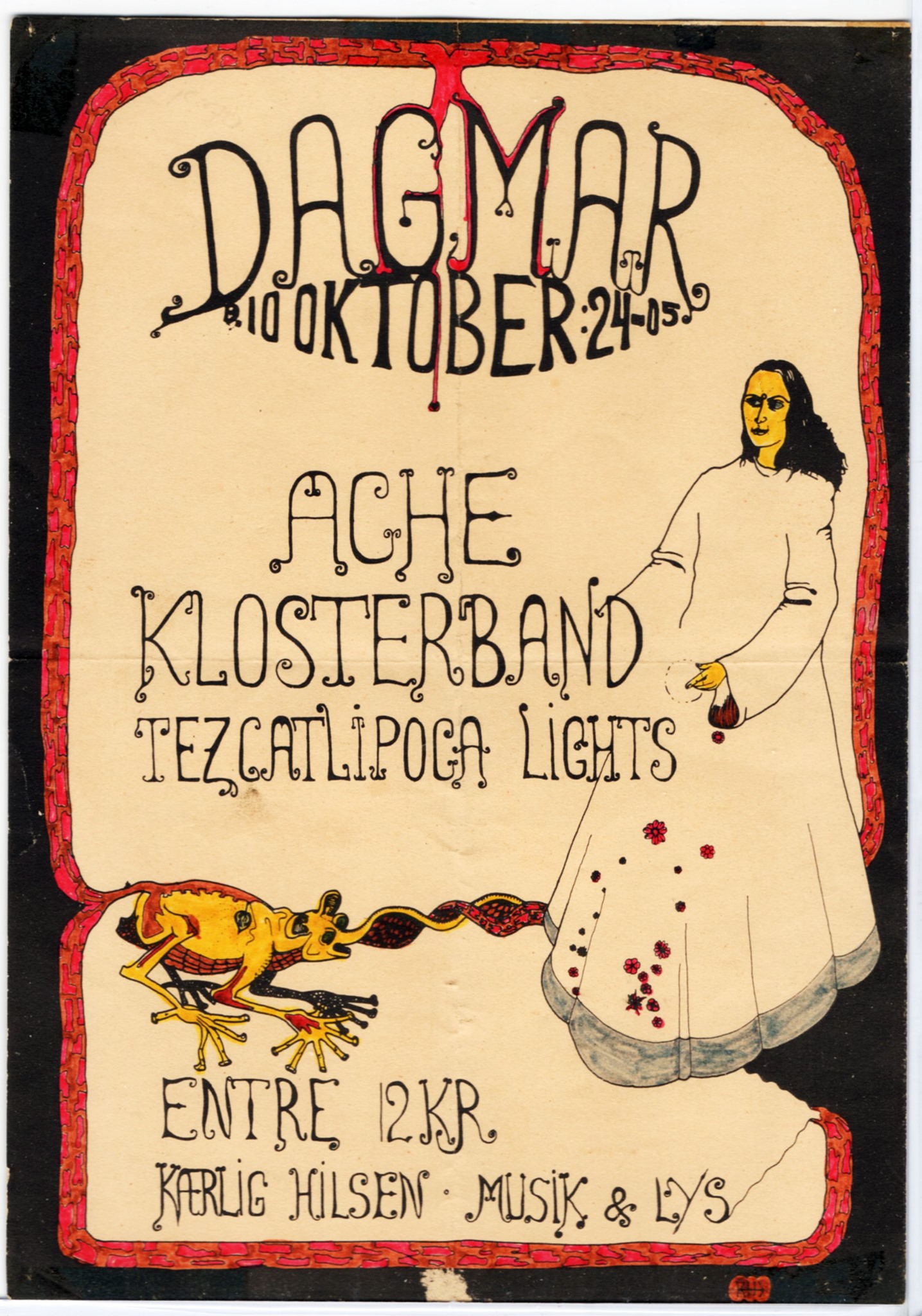
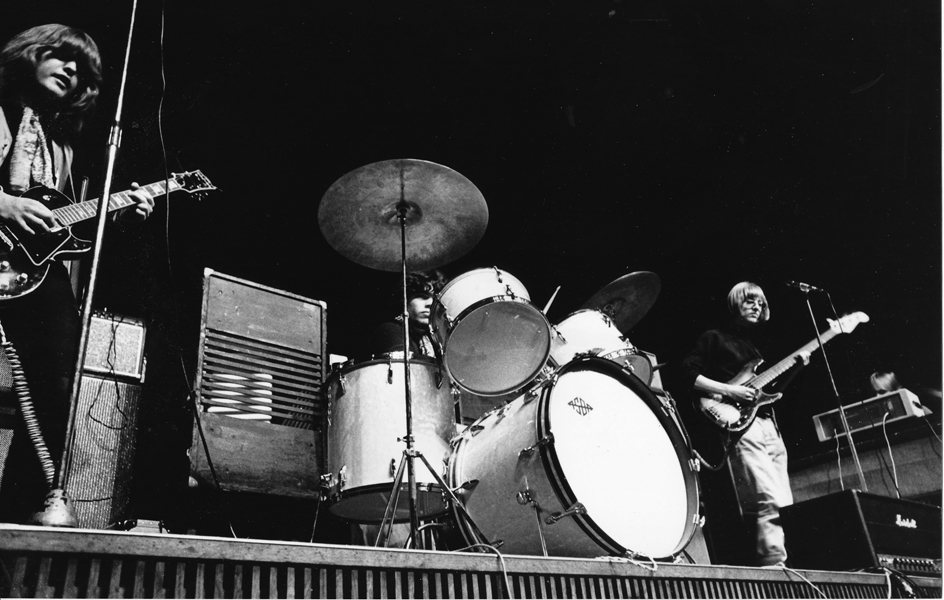
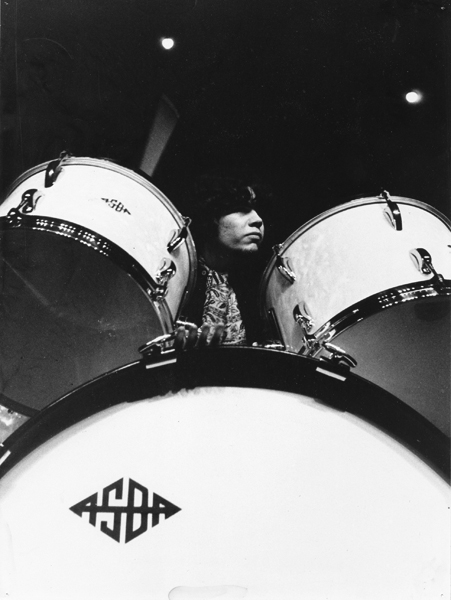
Finn Olafsson, Glenn Fischer, Torsten Olafsson - Glenn behind his new ASBA drum kit, mid-1970.
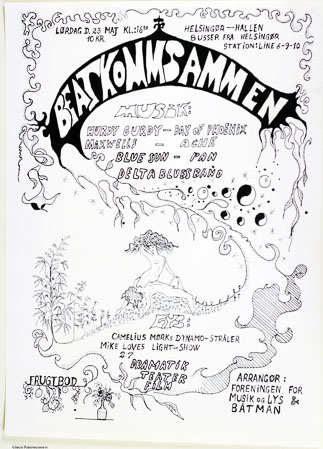
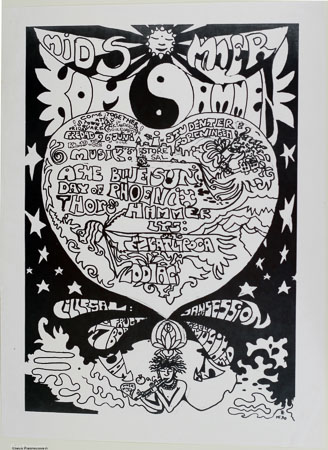
ACHE related concert posters, 1970:
May 23: Elsinore Sports Arena, North Sealand - June 26: The Copenhagen University Student Union Main Hall
at H.C. Andersens Boulevard, C. Copenhagen
Source, online poster collection by Claus Rasmussen, Denmark: https://koncertplakater.melipona.org/plakateralle/ &
http://koncertplakater.melipona.org/index2.html?fbclid=IwAR2ENz9uL5Ue1bIJF3AvHlv-S1EBfQTyTjomhnxQlD9jSLsY1iHu8wNYYcU
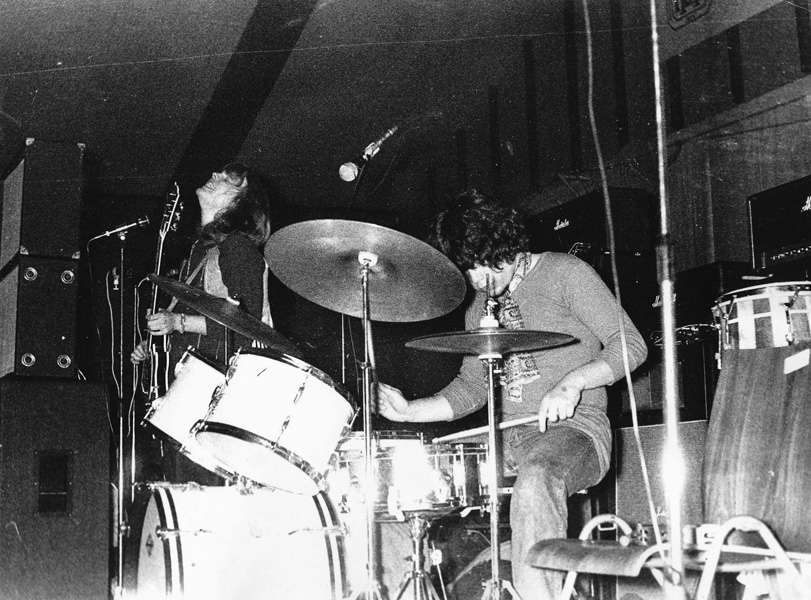
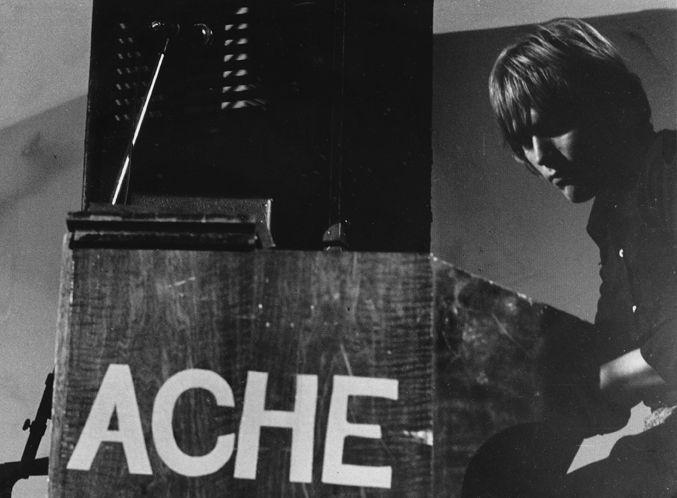
Finn Olafsson, Glenn Fischer & Peter Mellin - live on stage, mid-1970.
FALL 1970 - CLASSICAL ACHE - The "GREEN MAN" ALBUM PERIOD

Torsten Olafsson, Finn Olafsson, Peter Mellin, Glenn Fischer - in central Copenhagen in Early Summer, 1970.
Printed in the youth magazine "GO" in June 1970. Photo by Steen Kærsgaard
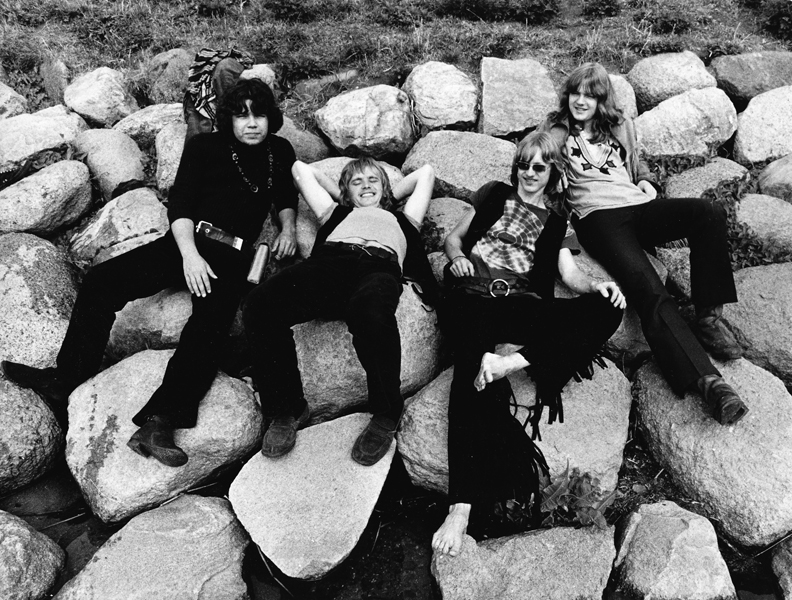
Glenn Fischer, Peter Mellin, Torsten Olafsson, Finn Olafsson
EARLY SUMMER 1970 - CLASSICAL ACHE - The "SHADOW of a GIPSY" SINGLE PROJECT
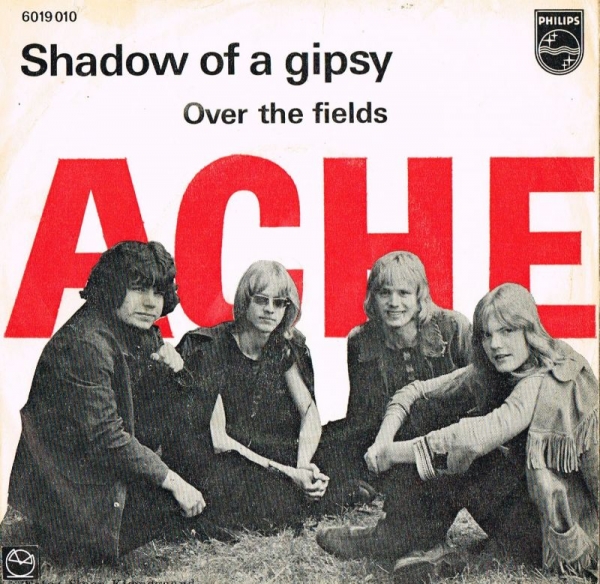
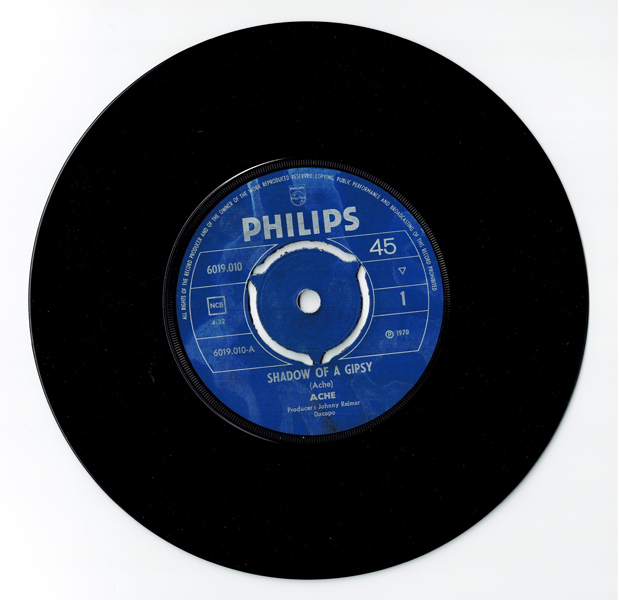
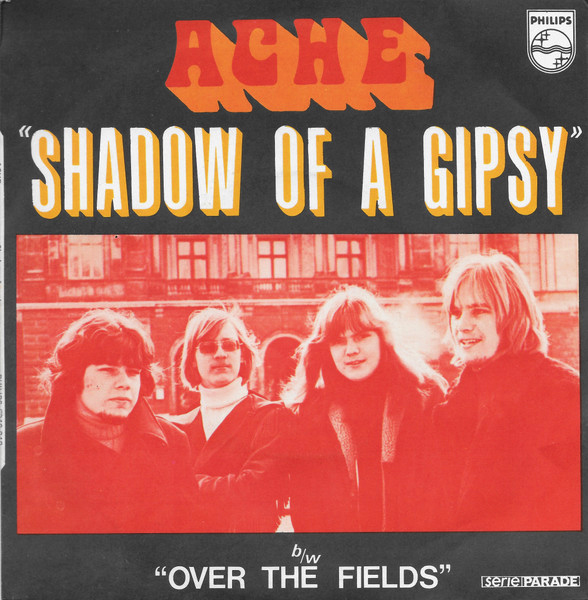
ACHE 1970: The Danish and French cover versions of the "Shadow of a Gipsy" single
|
THE "SHADOW of a GIPSY" STORY:
CHAPTER 1 - The BACKGROUND: 1968-1969 - The ROCK BALLET "DE HOMINE URBANO"/"HOMO" Since the earliest beginnings, just after New Year in 1968, ACHE's musicians favoured improvising and arranging ideas that just "came" to each of the four youngsters when they were exploring their respective instruments at home, or rehearsing together, as it happened, over and over again. They shared a wide variety of backgrounds and experiences in both Danish songs, classical music, blues, jazz, pop - and early "prog rock", and "heavy rock". One of their very first projects was the creation of the almost 20 mins. long suite titled "Little Things" that was, finally, recorded for their first LP album the year after, in October, 1969. Already in the mid-Summer of 1968, they began to jam over the four bass notes a-c-b-e. Because the note 'b' in Danish is actually named 'h' - in order to distinguish it from that of 'b flat' - "A-C-H-E" inspired to naming the band's signature work and always opening number back then: 'Acheron', and the band even also chose their official "brand" name to be that of "ACHE". Next, in the fall of 1968 followed the quite dramatic work "Anders Ands Begravelse", "The Funeral of Donald Duck", that in February 1969 led to ACHE's actual national breakthrough as a true symphonic progressive rock band when the DR, the Danish Broadcasting Corp., enabled a studio recording on February 10, that was aired nationwide on February the 15th. The very concrete result of this radio music performance was that Royal Danish solo dancer Peter Schaufuss was recommended by music journalist Torben Hoyer to contact ACHE to invite them to compose the music for a "beat ballet", later referred to as a "rock ballet", that he was planning to create. ACHE promptly accepted the challenge. A synopsis for a "plot" was soon agreed upon, and over the next couple of months the music began to take shape: All ideas were tried out and arranged in ACHE's practice room and finally arranged to be recorded during the Easter Week of 1969, early April. The finished music for the ballet music that was now titled "De Homine Urbano" was then recorded and mixed - in but one single day! - in the early Summer, sponsored by the Danish production company Nordisk Polyphon and produced by Johnny Reimar in the Metronome Studio A in Copenhagen. Studio engineer was Birger Svan, assisted by technician Bent Hulsrøj. End of story, or - just ... maybe so, or ... ? |
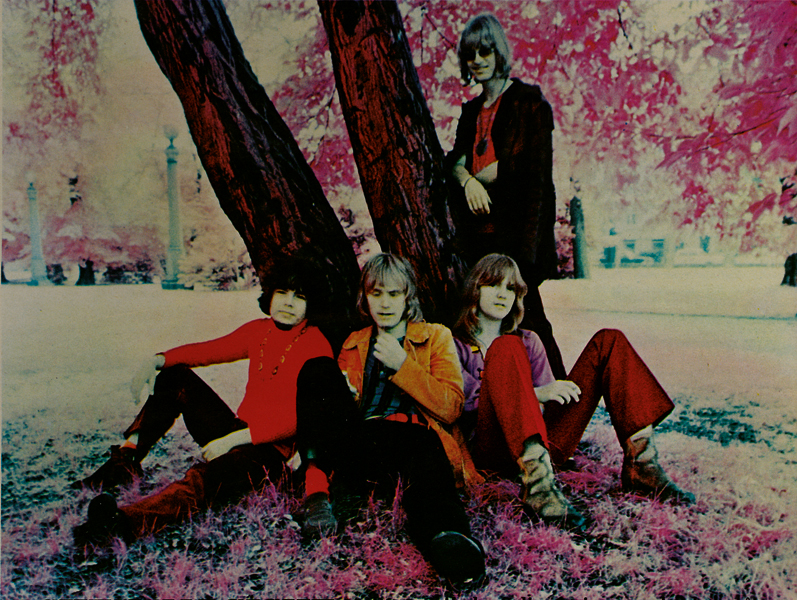

ACHE 1970: Glenn Fischer, Peter Mellin, Finn Olafsson. Standing: Torsten Olafsson.
Photo published in "Vi Unge" youth magazine: ZAP News, taken in a Copenhagen park in Late Summer, 1970.
Below: Nov. 17, 2024, snapshot by Classical Danish Rock History researcher and collector, Danish entomologist
Claus Rasmussen, creator and editor of the website https://alrunen.melipona.org/
|
THE "SHADOW of a GIPSY" STORY:
CHAPTER 2 - 1970: ACHE's MOST PRODUCTIVE and SUCCESFUL PERIOD 1970 was perhaps the "classical" ACHE band's "best" year, in many a respect. In January, the beat ballet "De Homine Urbano"/"Homo" was premiered at The Royal Theatre in Copenhagen, choreographed by Peter Schaufuss. In February, the LP album "De Homine Urbano" was released - first in Denmark, soon afterwards in France and Germany. During Spring, new progressive rock works were composed, including "Equatorial Rain" and "Shadow of a Gipsy". June saw ACHE performing at Magasin du Nord's impressive "Young Fashion Show" on the "Plænen" stage in the world famous Tivoli amusement park in Copenhagen. In Early Summer, ACHE recorded "Shadow of a Gipsy" for a planned single, and the beatballet "Little Things", choreographed by Peter Schaufuss, with the music from ACHE's debut LP album, and produced by his father, Royal Danish solo dancer Frank Schaufuss/The Danish Ballet Academy, was staged at The New Theatre (Det Ny Teater) in central Copenhagen. On August 12, 1970, "Shadow of a Gipsy" was released, first in Denmark, soon after in France, where it was recorded as to quickly having reached "hit" ballad status. Both ACHE family relatives, friends and later earned acquaintances who visited Paris during those months have reported about impressive promotions of ACHE in public France at that time. Come Autumn, 1970, ACHE played more important concerts then ever before, and during but a few intense studio days in mid-November, ACHE recorded their second album "Green Man". On one of those intensely creative and productive days in the Metronome Studio A control room, Torsten Olafsson was shown a quite simple telex message wired from Philips, France, that informed the Danish production company Nordisk Polyphon A/S office and producer Johnny Reimar that the "Shadow of a Gipsy" single had then reached a sales of more than 40.000 copies in France, a number that did indeed have 5 digits, Torsten still clearly recalls. Such information was apparently repeated and confirmed in an official, written statement communicated via Telex from the Philips office in France, dated January 19, 1971 - based on which ACHE, in mid-June, 1971, was honoured with a Danish "Silver Record" for 25.000 singles sold. ACHE has a copy of that particular "piece of evidence" in the band's possession. |
|
THE "SHADOW of a GIPSY" STORY:
CHAPTER 3 - The TEAM CREATION of "SHADOW of a GIPSY" in SPRING 1970: ACHE's first album "DE HOMINE URBANO", on the PHILIPS label, came out in early February of 1970 and was received with impressive high acclaim. While very frequently getting together to practice, Peter, Finn, Glenn and Torsten had more and more "refined" their way of collectively creating new "musical statements" together, and one day Peter presented a new idea for a power ballad with plenty of classical, yet also sort of "spicy" Hammond organ chords that soon inspired Finn to produce a simple but heartfelt melody for the song itself, over the chord progressions. Torsten, the band's lead singer when ACHE's otherwise mostly instrumental music allowed for lyrics, intuitively felt inspired to write a quite fairytale-like poem for the verses and choruses that, eventually, was given the title "Shadow of a Gipsy". As so often before, Glenn was again the one who contributed with his well chosen inputs for a song's overall form and basic rhythmic dynamics, and he and Torsten - who had already been playing together for 2 years - created a steady backing that ended up suiting the song the very best. For the two solo verses, Finn's guitar stands out as progressive melodic rock guitar classics even today. Peter's Hammond M3 unique organ sound has hardly been reproduced ever since that day in July, 1970, when "Shadow of a Gipsy" was recorded in but one single day. Torsten sang his song to the 8 tracks recording tape in the very "first take". This was, however, the end result of several months of preceding experiments with the "potentials" of the song: ACHE, a declared "progressive" rock band, really did not like to make "commercial" music, at all - just for the money, or fame. Here, for the record: On May 13, 1970, ACHE was again invited to record new music for the Danish Broadcasting Corp., in radio Studio 11 in Copenhagen. On that day, ACHE played "Equatorial Rain" and "Shadow of a Gipsy" in quite much longer arrangements than the two have become known later on. Realizing the "commercial" potential of the gipsy ballad, however, ACHE got to serious editorial work and managed to cut down the duration from a duration of 7:30 - to only 4:40. One last note here, by the way: "Shadow of a Gipsy" was never created to be any "copy" of Procol Harum's "A Whiter Shade of Pale". ACHE's gipsy ballad features a total of 35 different chords by Peter Mellin, which may be pretty close to an actual "world record", possibly so? There's a shadow of a gipsy Follows me wherever to I go Seeking Love when moving to and fro Why is it so? There's a place beneath a rainbow Laughing demons crowding everywhere Shall they hide forgotten treasures Sealed in the ground? I'm the shadow of a gipsy Love the wind to blow against my face Love to feel the breath of Freedom When shall it be? Took me to a camp of gipsies Crowds of joyful dancers all around Did they tell me they'd already found Joyfulness' sound? I'm the shadow of a gipsy Love to feel the rain across my face Love to be wherever love is pure When shall it be? I'm the shadow of a gipsy Love the wind to blow against my face Love to feel the breath of Freedom Am I insane? Lyrics by Torsten Olafsson. Music harmonization idea by Peter Mellin. Guitar solo & vocal line idea by Finn Olafsson. Drum parts composed by Glenn Fischer. Overall arrangement by ACHE/TorFin' MelFish. Music publisher: Warner/Chappell Music, Inc. |
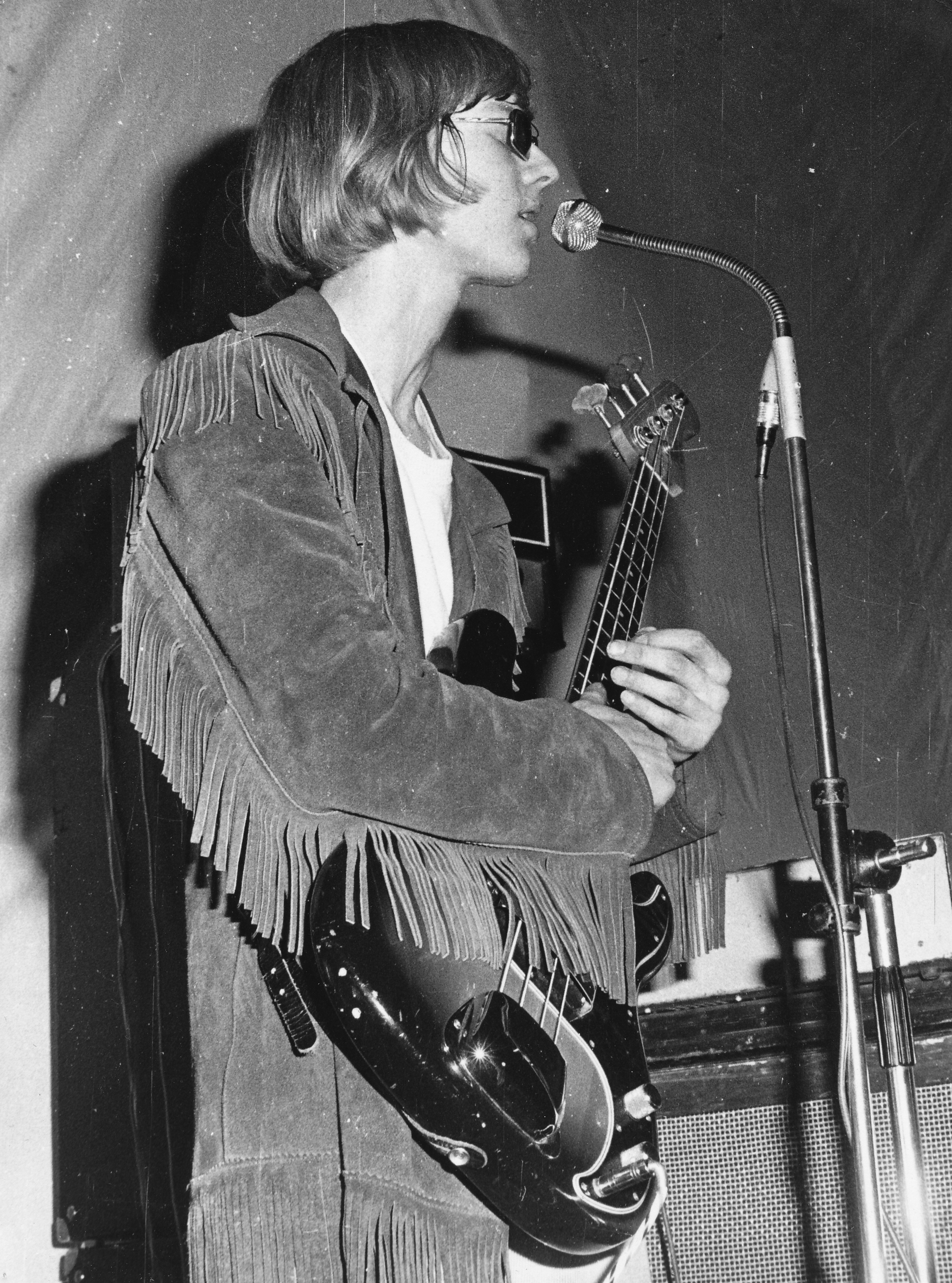
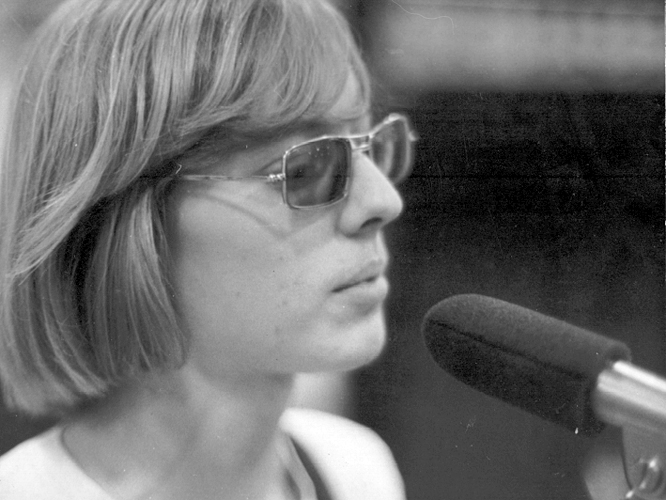
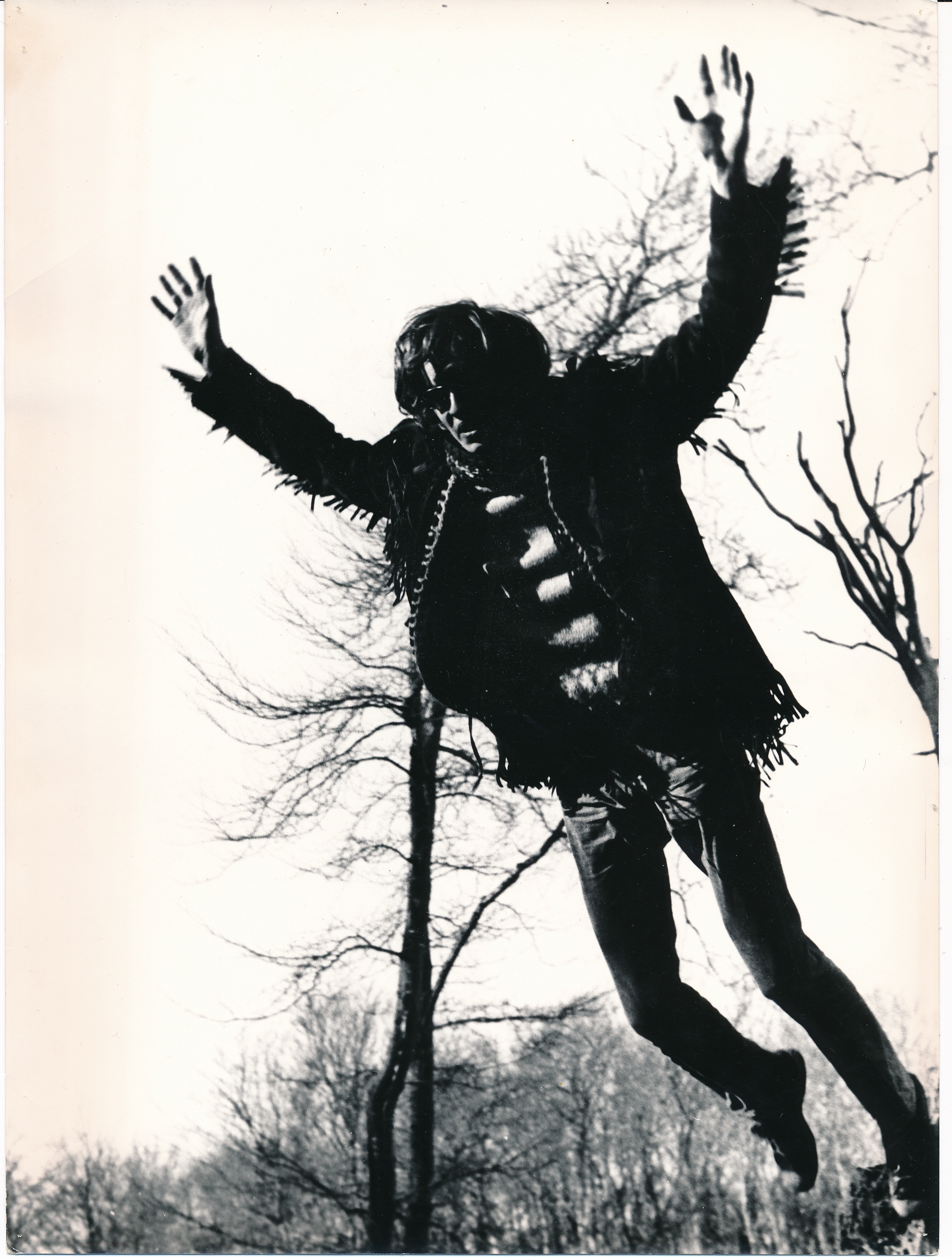
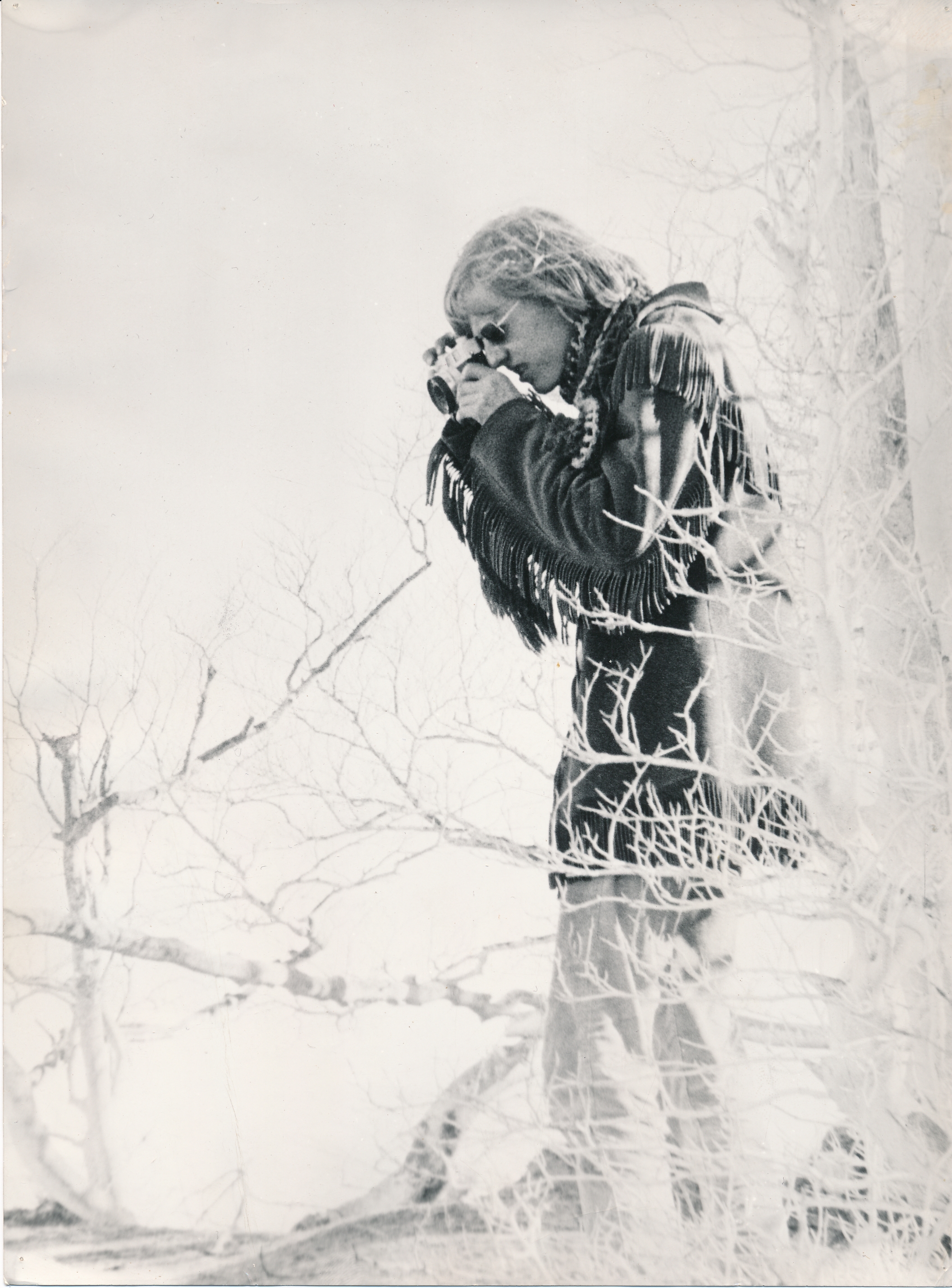
Torsten Olafsson: ACHE bassist, composer, lyrics writer and lead singer since New Year, January, 1968. Photos shown here were all taken in 1969.
|
Almost by definition, ACHE was from the very start a declared non-commercial, instrumental symphonic progressive rock band that did not originally favour vocals particularly much.
Anyhow, already since early 1968, Torsten actually supplied the band with lyrics and vocals, for example in the almost 20 minutes long suite titled "Little Things". In 1969 followed the short poem being recited in the legendary Eulogy/Words of Remembrance for the quite sinister music work "The Funeral of Donald Duck", in Danish: "Anders Ands Begravelse". Then, entering 1970, followed the lyrics for "Cry", "The Invasion", "Green Man", "Equatorial Rain" - and, of course: "Shadow of a Gipsy". |
CLASSICAL ACHE 1970 -
The PSYCHEDELIC LIGHT GROUPS that USED to BACK ACHE:
TEZCATLIPOCA LIGHT SHOW & LYSHOLMORTENSEN
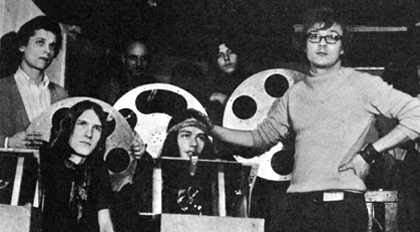
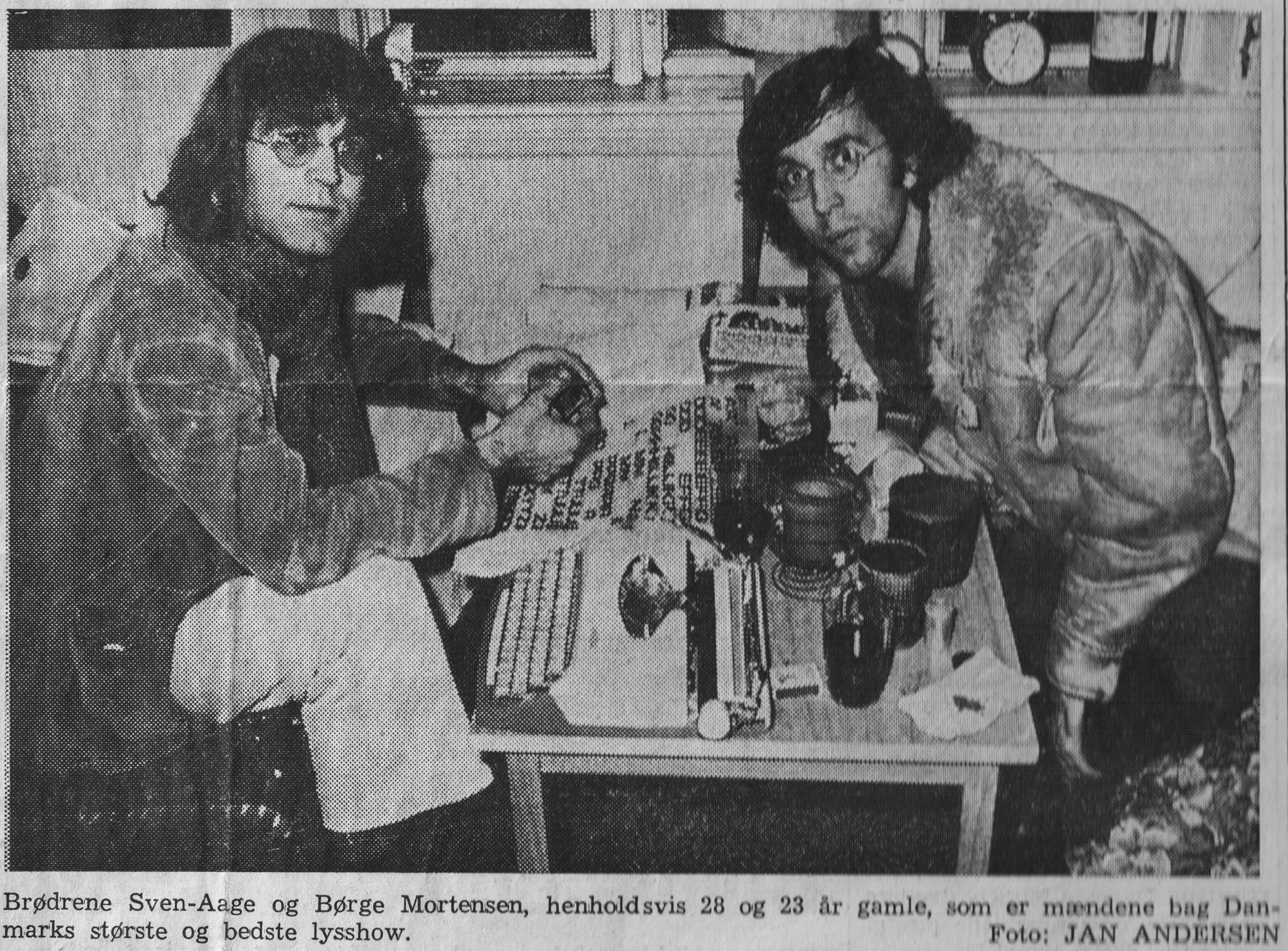
The psychedelic light show effetcs groups - Left: The Tezcatlipoca Light Show group. Right: The Lysholmortensen light show brothers.
|
ACHE ballet music and psychedelic lights history, just in short:
When, in late 1969, Peter Schaufuss (left in the picture) prepared his and ACHE's world very first beat ballet "De Homine Urbano" - staged as "Homo" - for the Royal Theatre in Copenhagen, the Tezcatlipoca Light Show created the psychedelic light effects for all the Spring, 1970, performances. Towards the end of 1970, when ACHE began to prepare for the staging of their "ACHE Rock Theatre" 1971 live show, the psychedelic light group named "Lysholmortensen" took up the challenge in the care of brothers Børge Mortensen and Svend-Aage Mortensen. The Tezcatlipoca Light Show members: Mikkel Scharff: Wet & colour slides, switch boards - Lars Christensen: Wet slides, overhead Frank Hindsberg: Wet slides, overhead - Bjørn "Mulle" Jacobsen: Wet slides Bent "Dyt" Holm: Wet slides - Rikke Haxthausen: Wet slides - Gitte: Wet slides |
1967-1971 - The HARLOWS and CLASSICAL ACHE 1967-1971 and later ...
The ROADIES/TECHNICIANS that USED to LOYALLY BACK ACHE
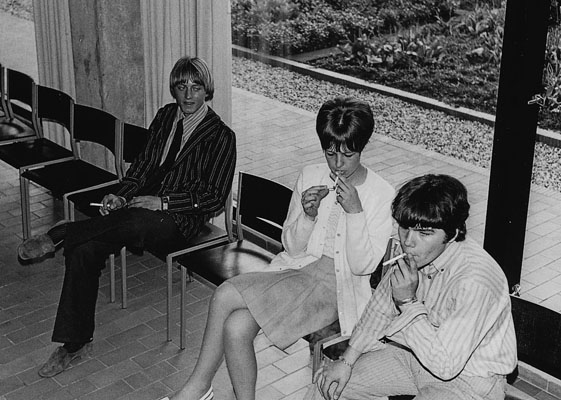
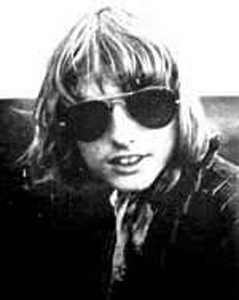
|
1969-1971: The absolutely indispensable, loyal ACHE roadies and technicians that made it all possible and worthwhile:
Left: Dan Worbs Petersen, a.k.a. "Wobber", in mid-1967, together with Harlows drummer Glenn Fischer to the right, and Glenn's enchanting girlfriend Lene, still Glenn's wife now all since of late June, 1971, in the center. Wobber, a professional carpenter, all-round skilled "handy-man", a lover of fast running motor bikes, and later also an enthousiastic, ardent speed loving ice boat racer, first assisted The Harlows, then ACHE, until ACHE disbanded in mid-1971. Right: One other dedicated road manager who worked for both ACHE, ALRUNE ROD & GASOLIN', interchangingly, was Peter Yssing, photo dated 1971. Peter has since then pursued an honourable professional career in the peacekeeping forces in Europe. |
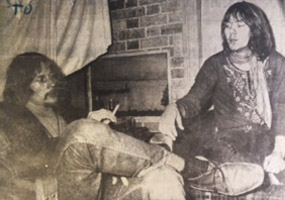
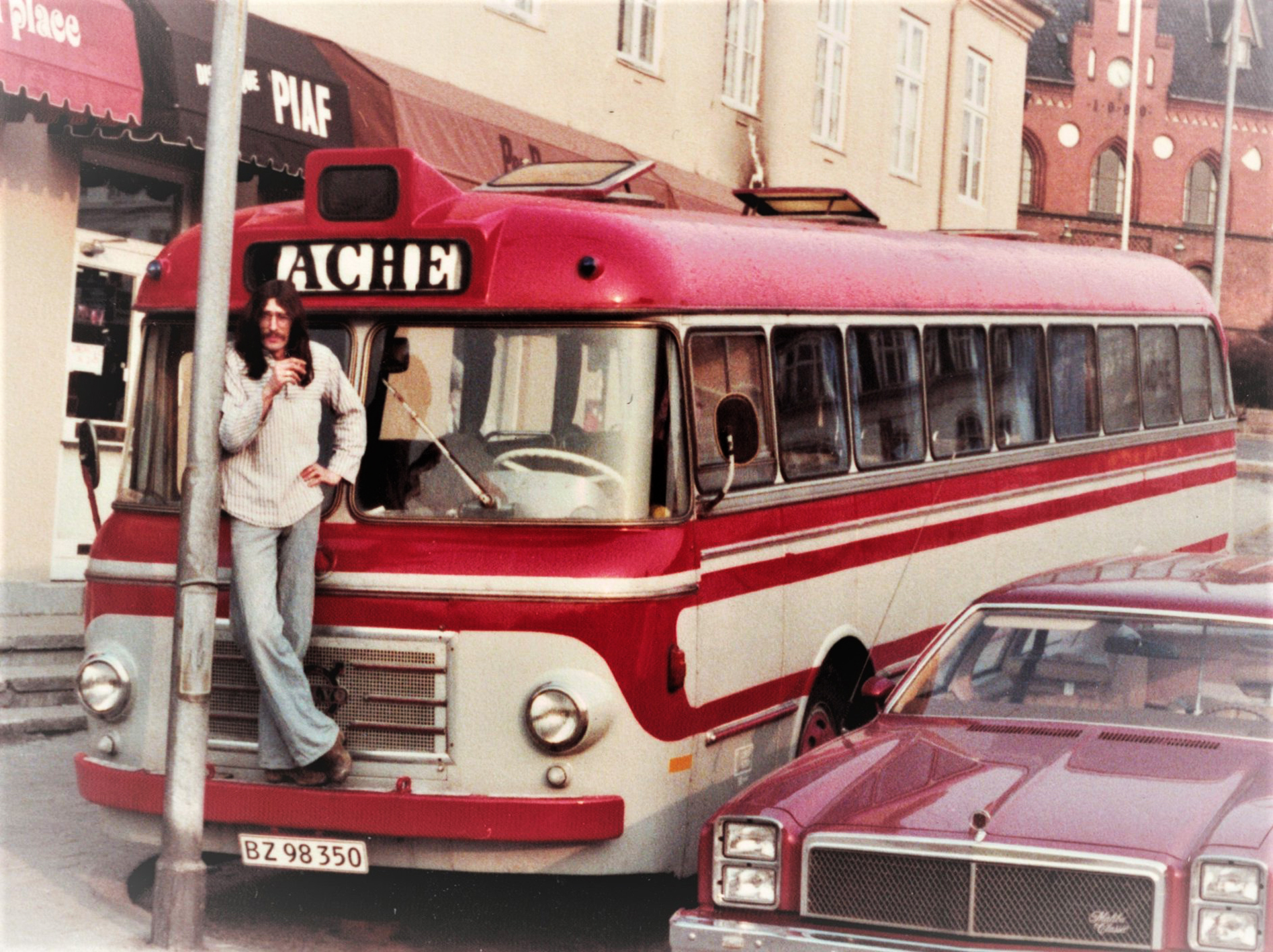
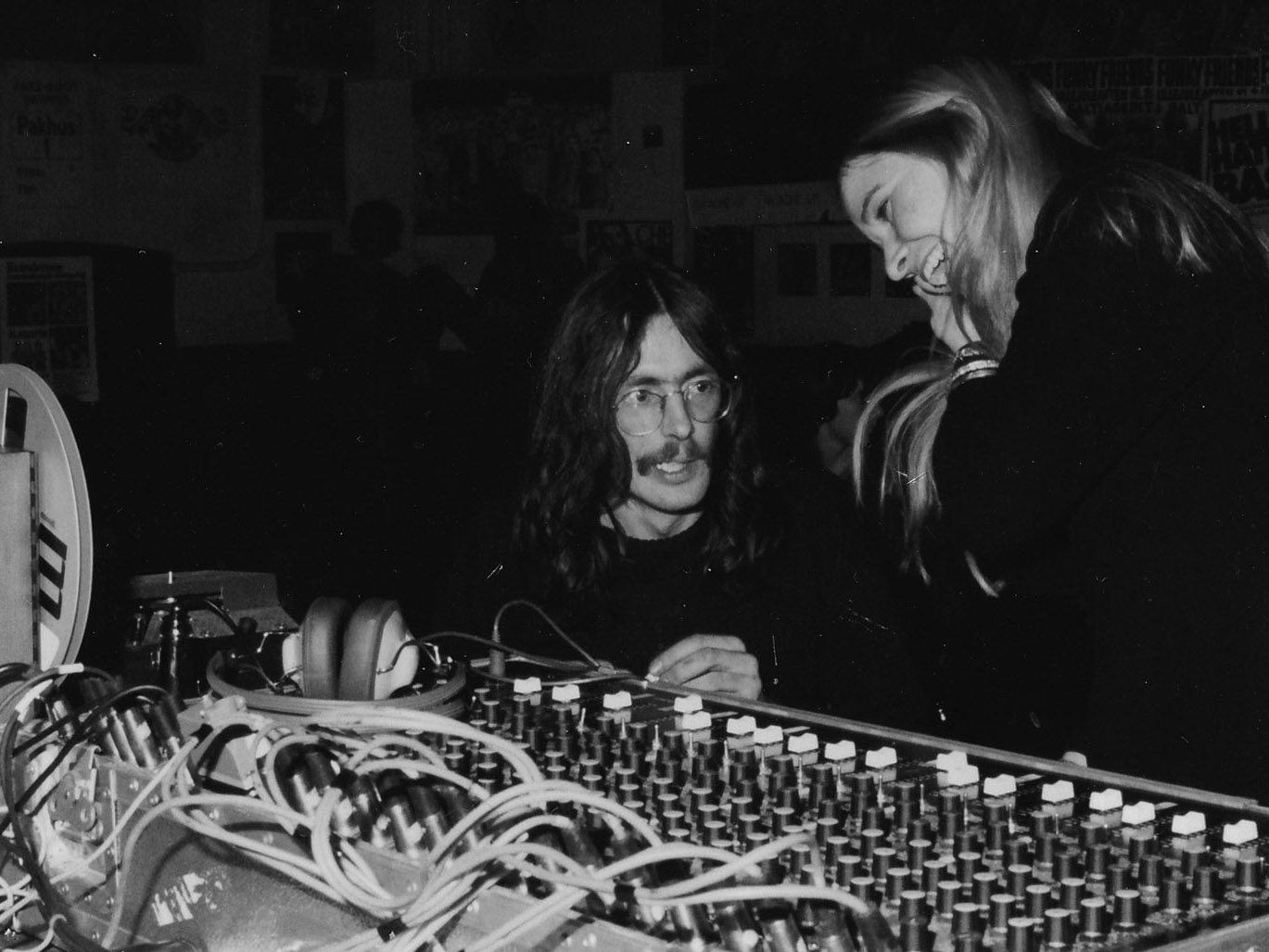
1970: Left, Roadies Jørgen and Bo in Rønne, Bornholm Island, Baltic Sea, Eastern-most Denmark,
being interviewed by the local daily newspaper Bornholmeren, late November, 1970.
|
Travelling by air for their late night concert in the city's movie cinema, ACHE's small rented private airplaine was frighteningly close
to falling down during the approach to Rønne airport.
The return trip to Copenhagen Airport in the morning, though, was so much more: no less than fantastic! Center and right: Sound engineer, road manager and band bus driver Lars Mellin, Peter Mellin's younger half brother, many years later, in 1978. The band bus, a former almost "vintage" Volvo city bus was baptized "Fru Larsen", in English: "Mrs. Larsen", of course. Lars Mellin worked with ACHE both in 1969-1970 and from early 1977 through early 1980. |
JUNE 1970: The ACHE / MAGASIN du NORD HIPPIE STYLE FASHION SHOW at TIVOLI, CPH/DK
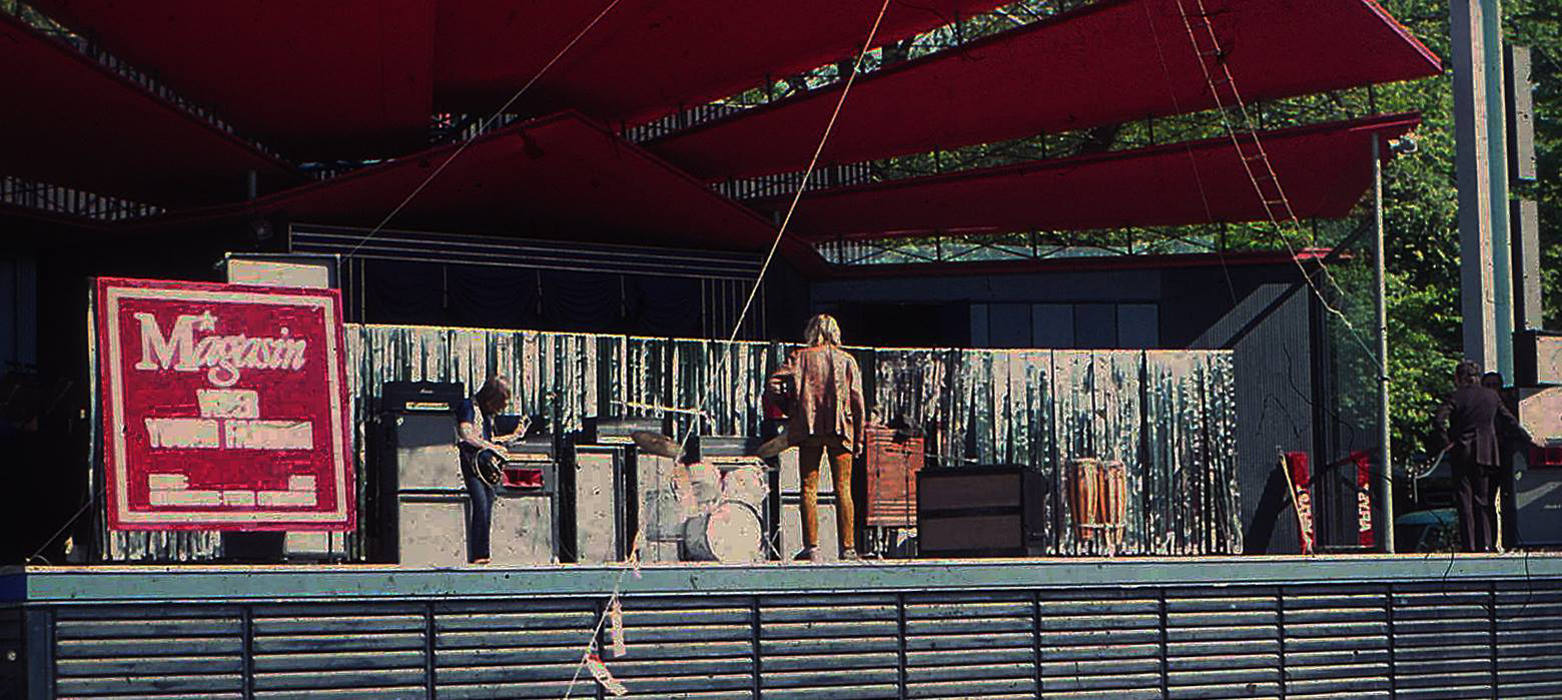
ACHE's music gear lined up on the famous Plænen concert stage in Tivoli, Copenhagen, Denmark, early June 5-13, 1970
In the picture, to the left: ACHE guitarist Finn Olafsson.
To the right, in brown leather jacket: Road manager Dan Worbs Petersen, a.k.a. "Wobber", who was then assisted by road manager
Peter Yssing in the task of garanteeing a perfect set-up and live sound.
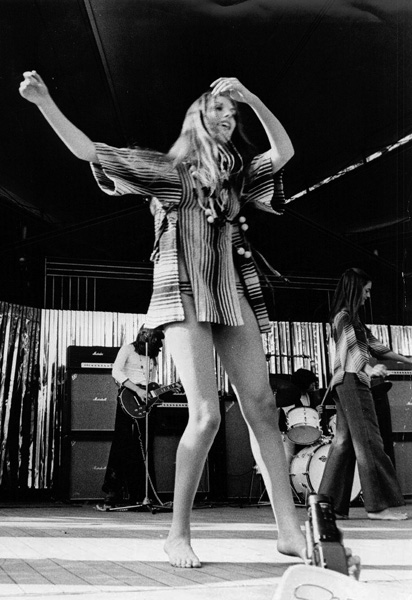
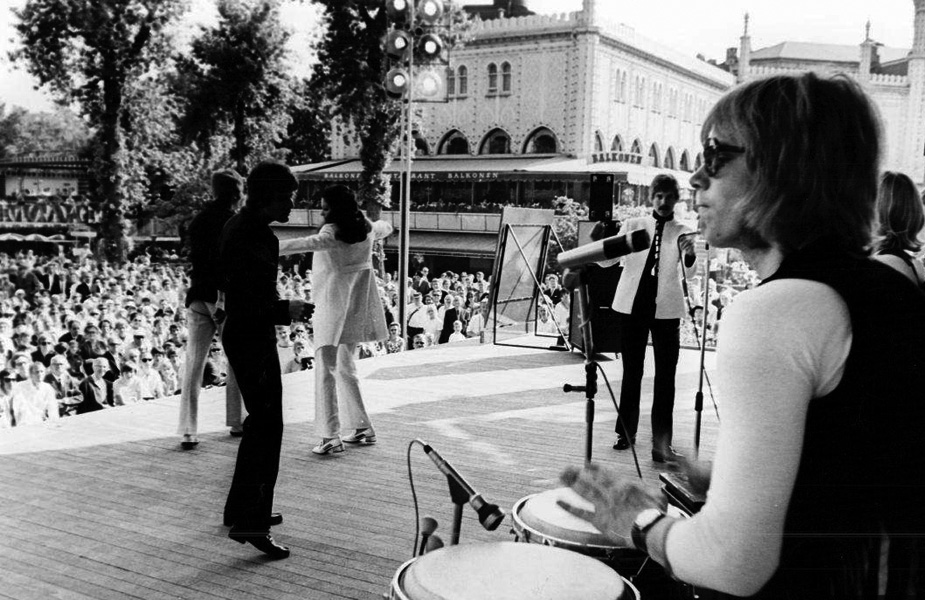
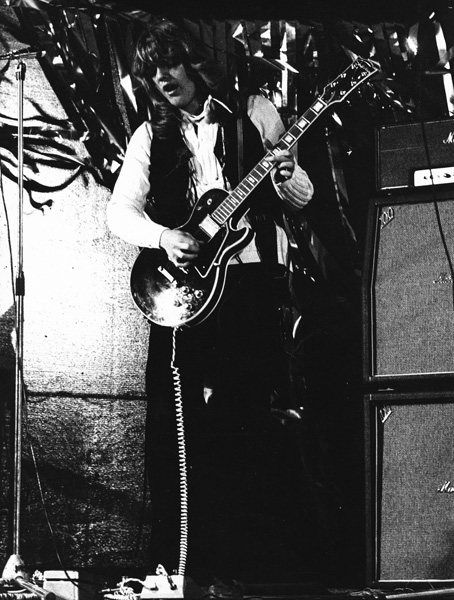
The gipsy- and hippie-inspired Magasin du Nord department store "Young Fashion" show in Tivoli,
on the "Plænen" stage, featuring ACHE, live, June 5-13, 1970.
Left, in the background: Musicians Finn Olafsson and Glenn Fischer. Center: Peter Mellin. Right: Finn Olafsson.
Left and right photos presented on the internet courtesy of Magasin du Nord Museum c/o kbhbilleder.dk
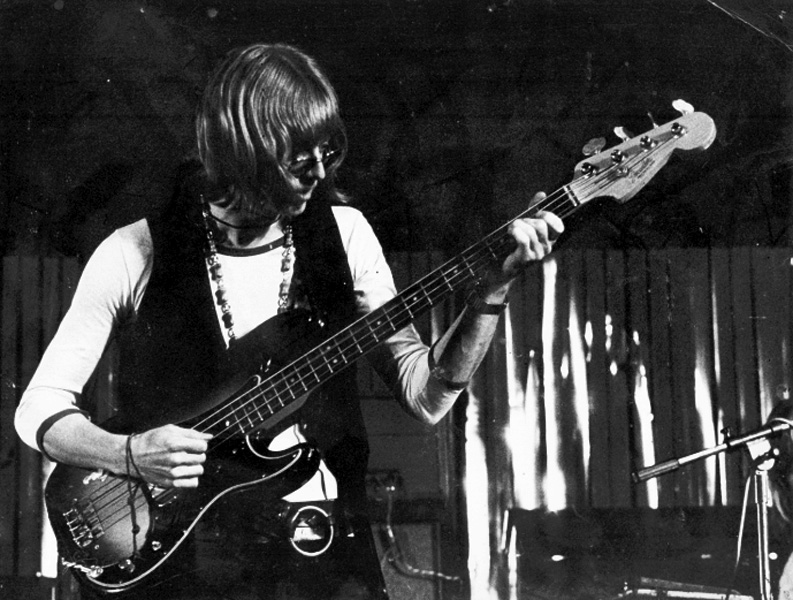
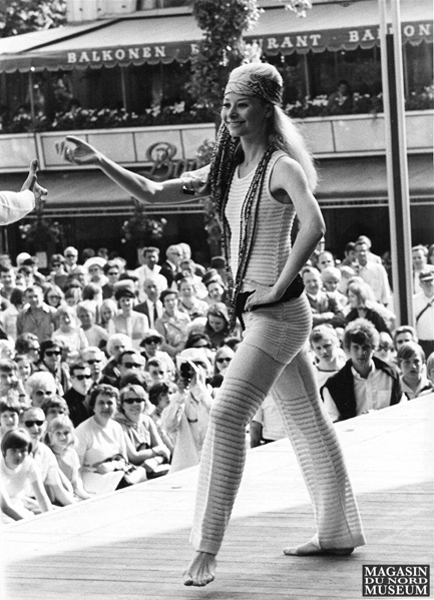
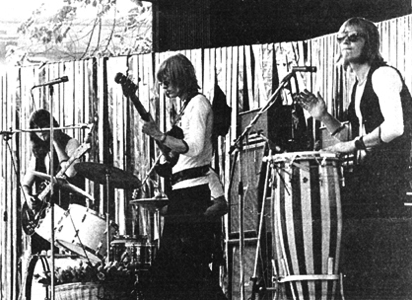
Left: Torsten Olafsson. Center: Magasin du Nord fashion model.
Right: Finn Olafsson, Glenn Fischer, Torsten Olafsson, Peter Mellin.
Center photo presented on the internet courtesy of Magasin du Nord Museum c/o kbhbilleder.dk
1970: CLASSICAL ACHE - THE BEAT BALLET "LITTLE THINGS", EARLY 1970
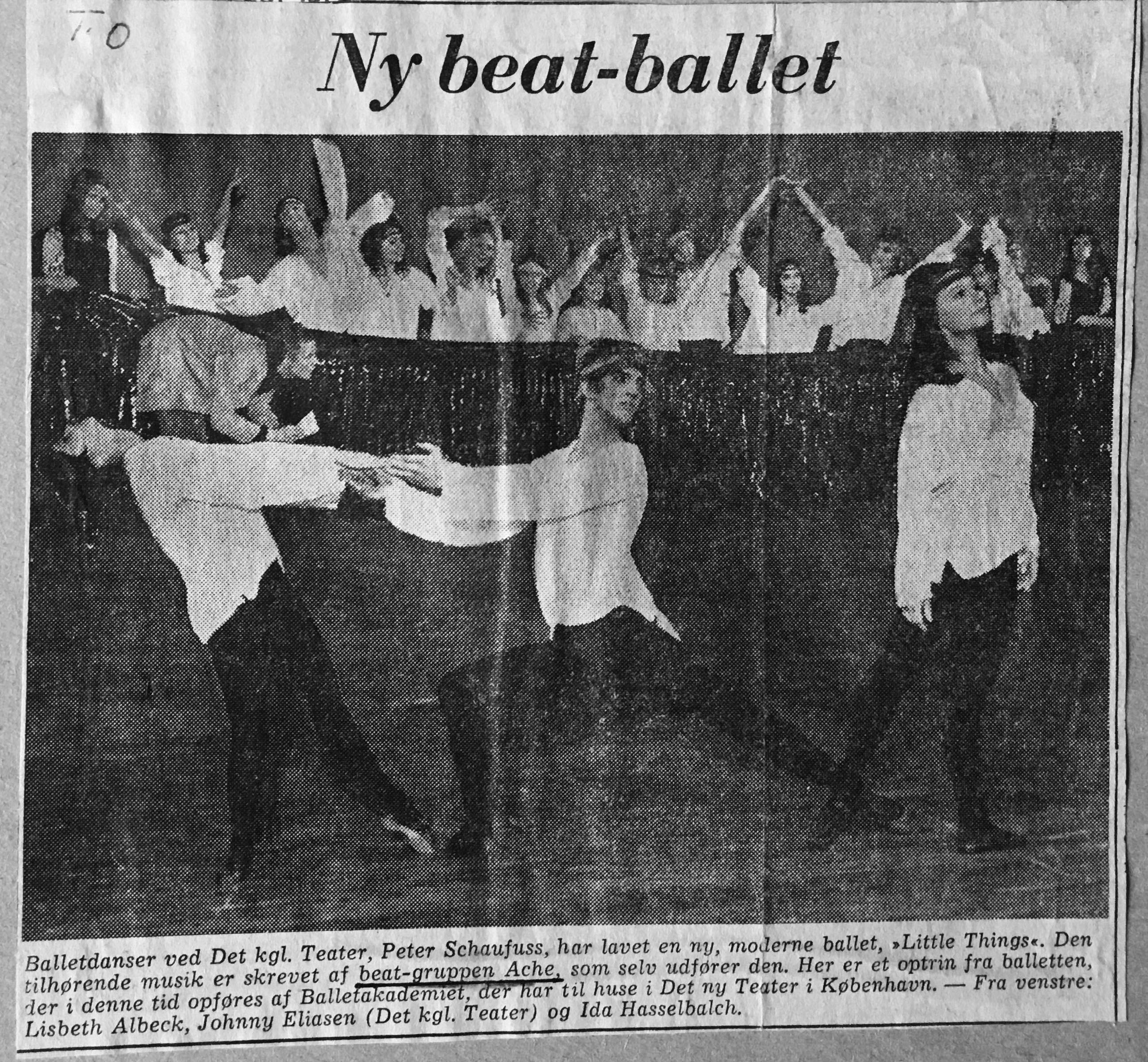
In the first week of January, 1970, the Peter Schaufuss/ACHE beat ballet "Homo"/"De Homine Urbano" had just premiered
at the Royal Theatre in Copenhagen, when Peter Schaufuss' father, world famous solo dancer Frank Schaufuss,
launched his alternative ballet company, titled "Balletakademiet"
(The Ballet Academy), at the capital's historic Det Ny Teater.
The company's first ballet show, ACHE'S late 1960s "Little Things" music choreographed by Peter Schaufuss,
was first staged in mid-February, 1970.
In this Balletakademiet's official press release that was distributed and printed in newspapers all over Denmark
you see the many excited young dancers in the top, and down in the front
the dancers Lisbeth Albeck, Johnny Eliasen (Royal Ballet solo dancer), and Ida Hasselbalch.
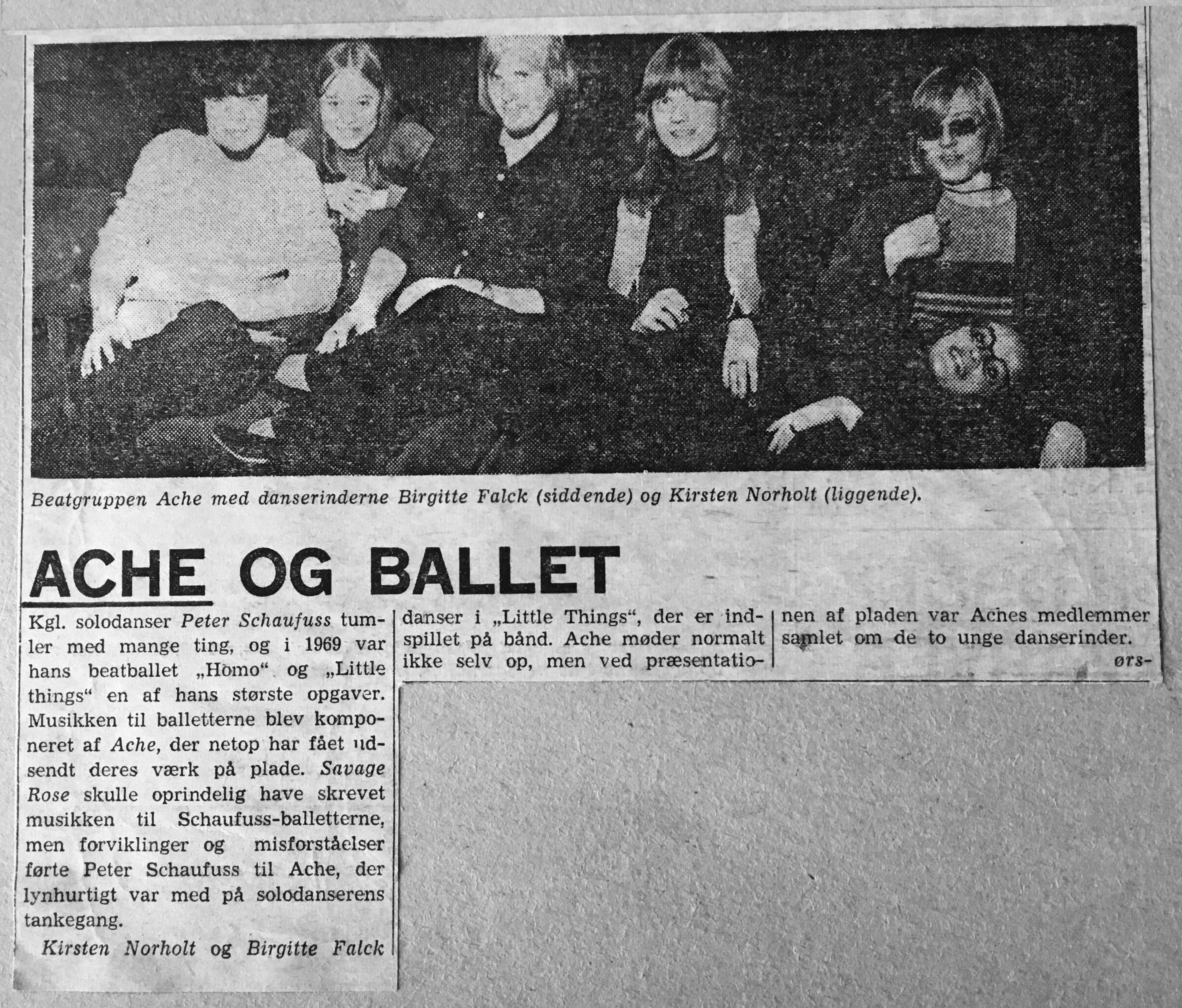
The four ACHE musicians and the two ballerinas Birgitte Falck-Hansen and Kirsten Norholt,
both Copenhagen Tivoli Pantomime Theatre and Frank Schaufuss Ballet Academy dancers,
together at a press conference in late February, 1970.
From the left: Glenn Fischer (dr), Birgitte Falck-Hansen, Peter Mellin (kb), Finn Olafsson (gt),
Torsten Olafsson (bs/vc), and lying down below in the front: Kirsten Norholt.
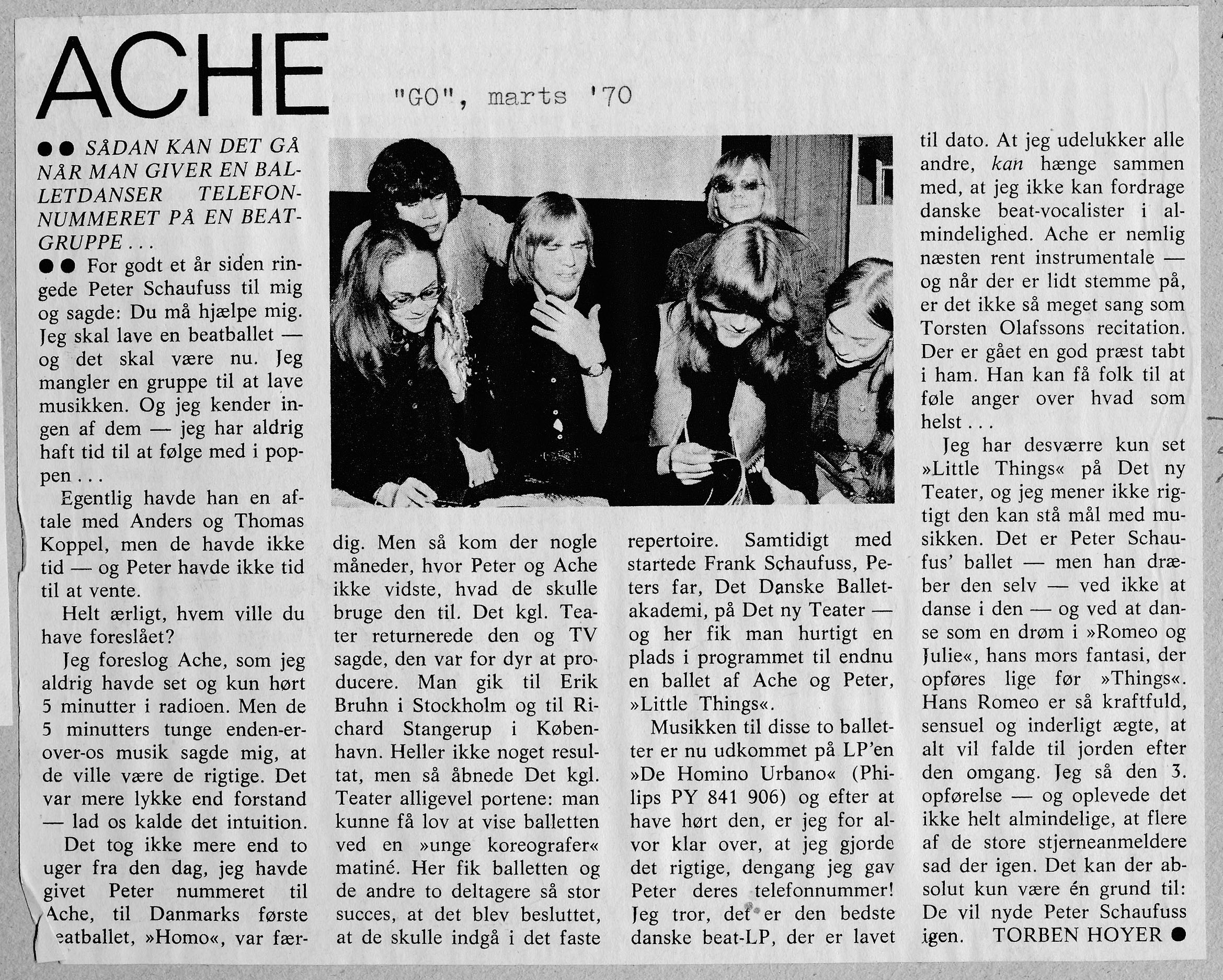
In mid-February, 1969, Danish journalist and "GO" music magazine chief editor, Torben Hoyer,
contributed as the "absolutely future-changing creative link" between Royal solo dancer Peter Schaufuss
and the four musicians in the "symphonic prog rock band" ACHE,
that soon resulted in the creation of the world's first "beat ballet"
with music composed and recorded by ACHE in Spring, 1969.
One year later, in February, 1970, Torben Hoyer attended the second Schaufuss/ACHE rock ballet, titled "Little Things",
when that was performed at Det Ny Teater in Copenhagen.
Reporting about his own very central and important role in enabling that joint venture in the March, 1970, issue
of his "GO" music magazine, Mr. Hoyer printed a photo featuring the ACHE band together with two
of the "Little Things" show's fine ballerinas, namely Kirsten Norholt and Birgitte Falck-Hansen.
In the picture you see at the top from the left: Glenn Fischer (dr), and Torsten Olafsson (bs/vc).
Down below, from the left: Kirsten Norholt, Peter Mellin (kb), Finn Olafsson (gt),
and Birgitte Falck-Hansen - now better known as just "Gitte".
1970: CLASSICAL ACHE - "DE HOMINE URBANO" REVIEW in SUPERLOVE, MARCH 1970
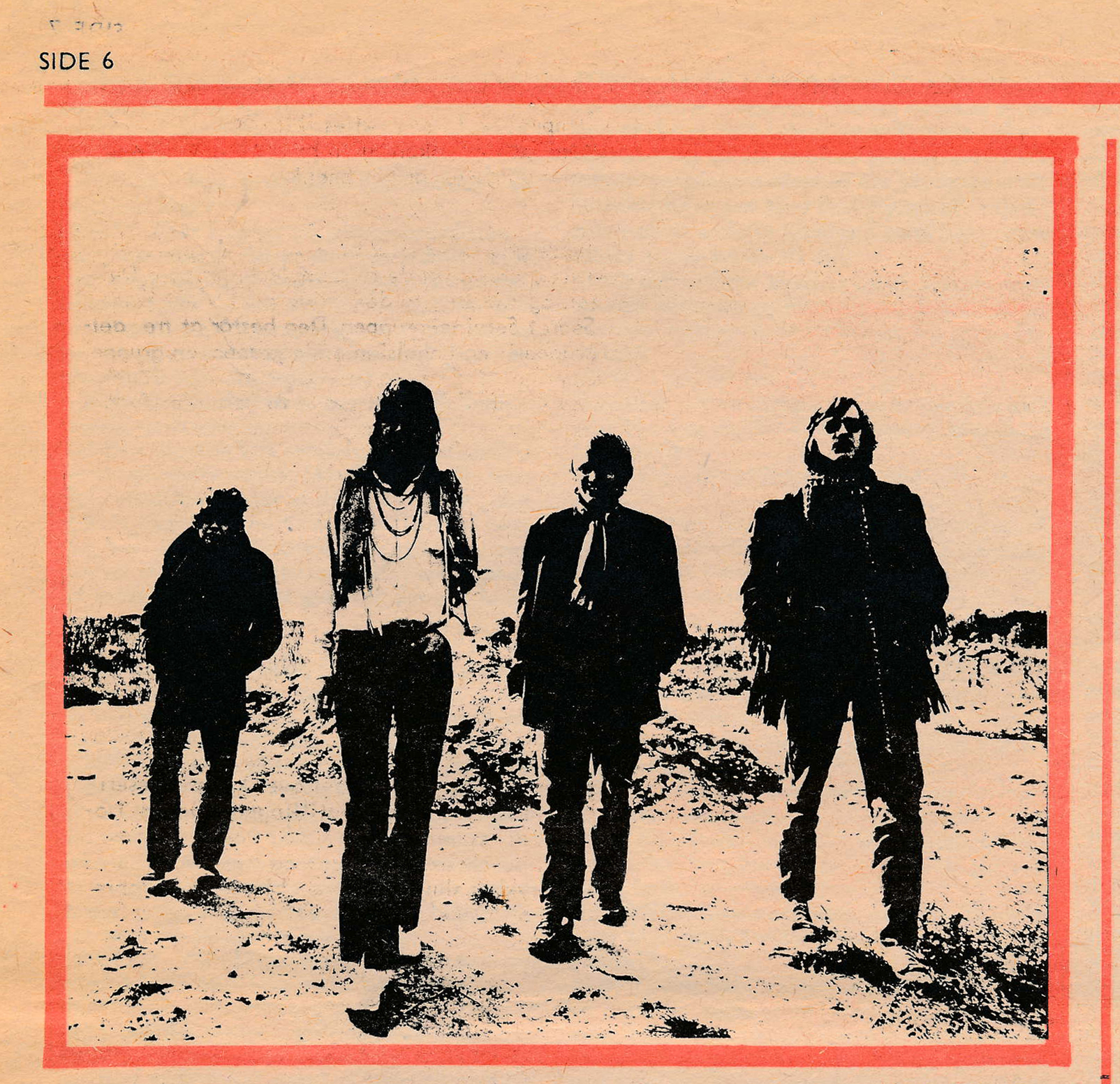
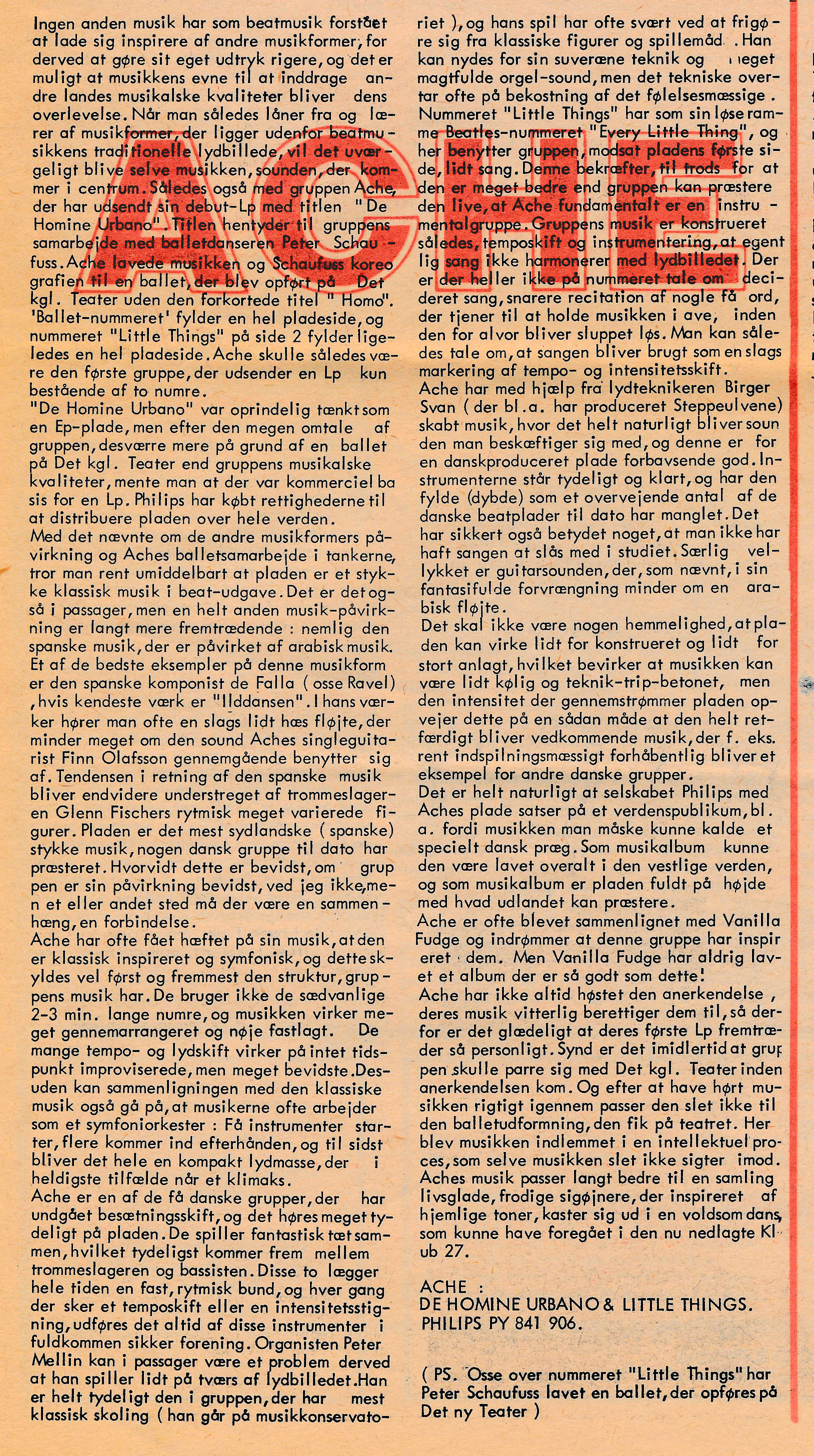
ACHE history: In March, 1970, the underground music magazine Superlove reviewed ACHE's debut album "De Homine Urbano".
Source: Peter Lehrmann's online collection of Danish youth culture magazines: https://peterlehrmann.dk/ungdomsblade-i-60erne/
1970: CLASSICAL ACHE - ACHE PERFORMS MUSIC BY ANDREW LLOYD WEBBER, MARCH 1970
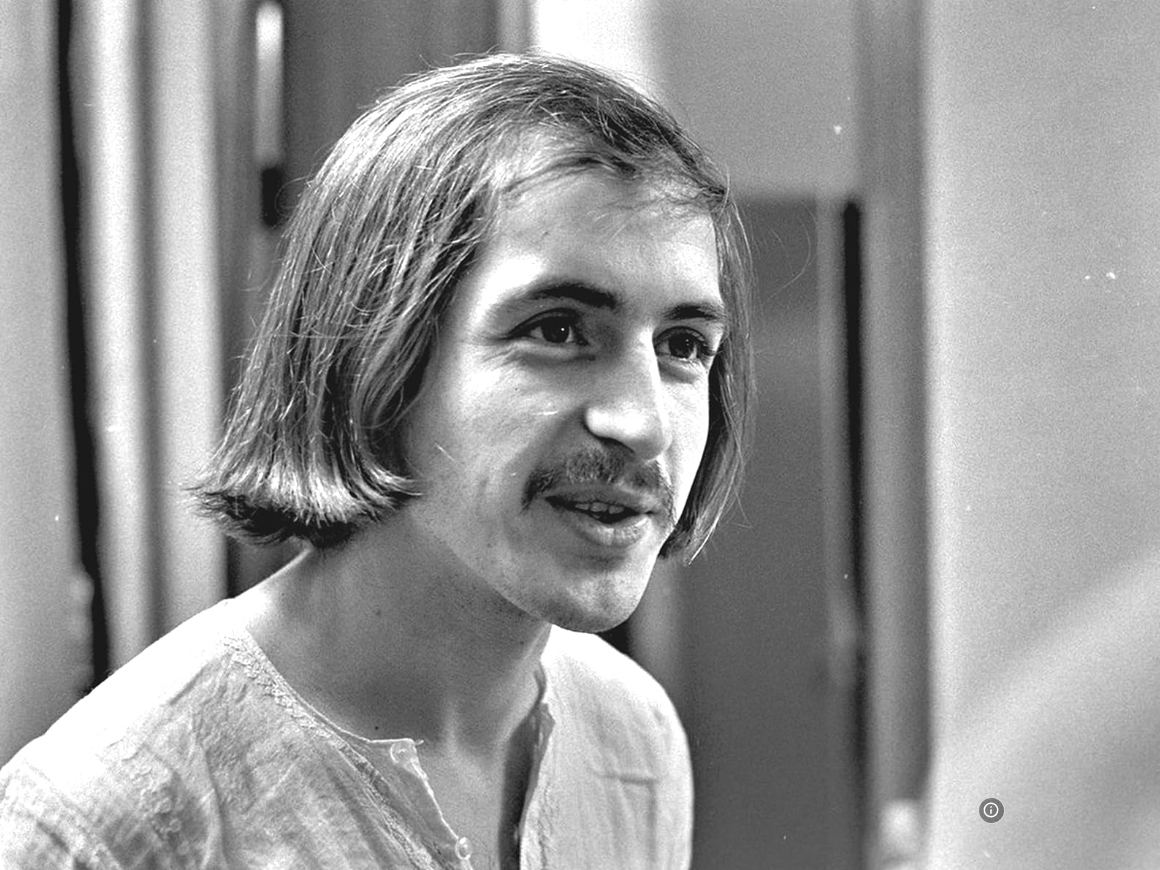
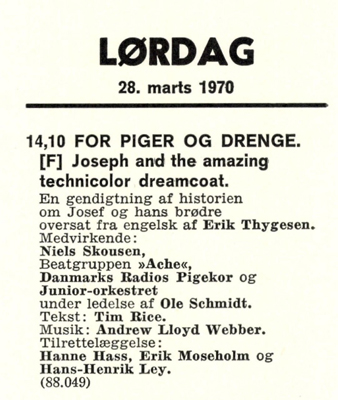
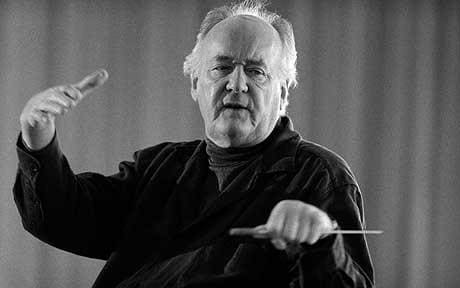
From March the 2nd through the 12th, ACHE recorded a Danish language DR Televison version
of Andrew Lloyd Webber & Tim Rice's "Joseph and the Amazing Technicolor Dreamcoat", 1967.
Conductor: Ole Schmidt. Lead vocalist: Niels Skousen. The DR Girls Choir. The DR Junior Orchestra.
Danish lyrics: Erik Thygesen. ACHE were assisted by The Harlows guitarist Jørgen Schaarup.
No movie clips nor photos from the color TV show seem to be available on the internet.
The show was presented on March 28, 1970, on the National Danish Television Channel.
Links to IMDB: https://www.imdb.com/title/tt15698720/fullcredits/?ref_=tt_cst_sm
https://www.imdb.com/title/tt15698720/?ref_=ls_t_20
1970: CLASSICAL ACHE - The "DE HOMINE URBANO" ALBUM RELEASE, FEBRUARY 1970
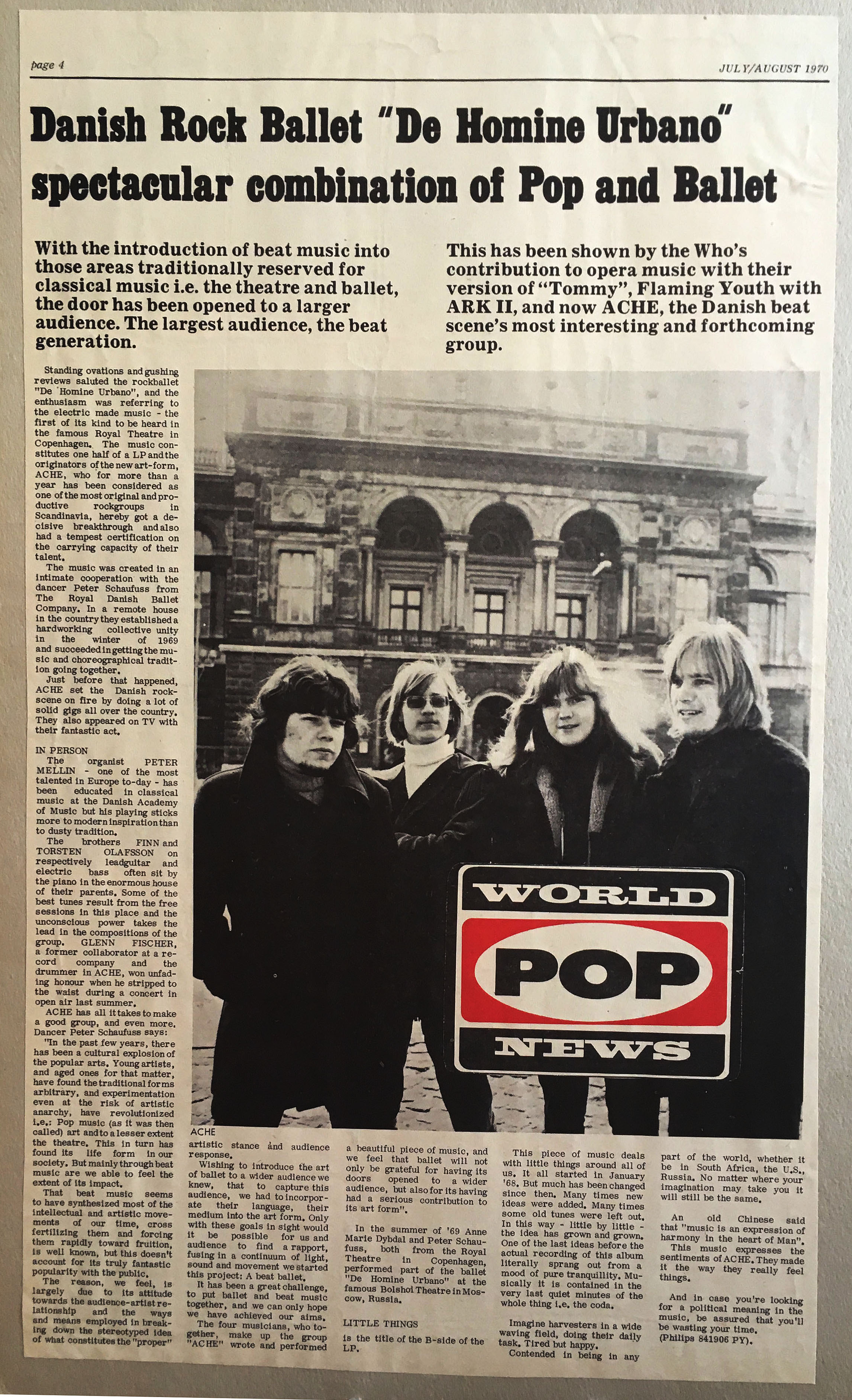
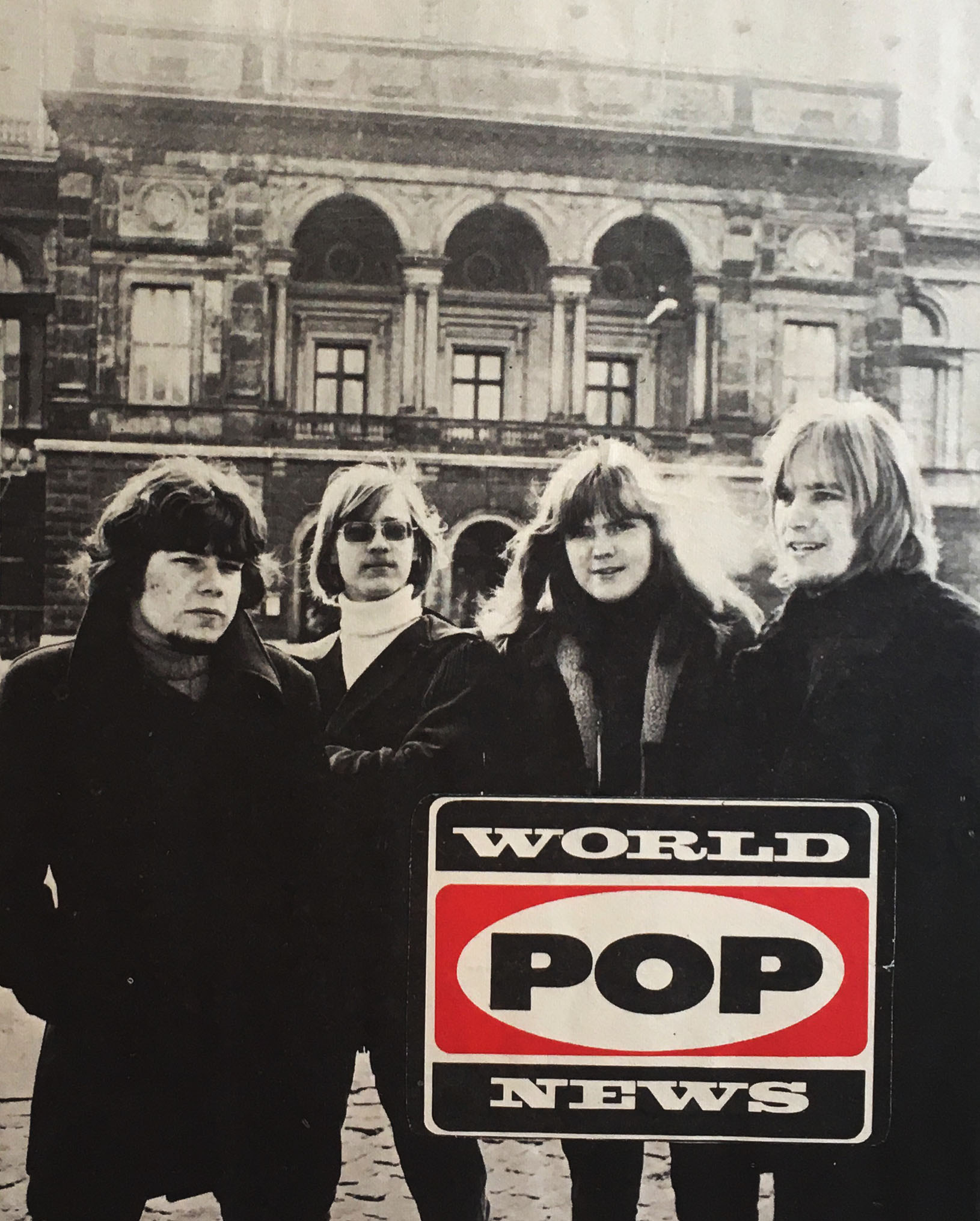
ACHE's "De Homine Urbano" album was released by PHILIPS in early February, 1970.
|
With the debut followed reviews in Denmark that expressed high appraisal for ACHE's work.
When progressive rock music websites began to appear on the internet since the early 2000s, the esteem for ACHE's music as representative of unique "classical rock" became further more outspokenly positive, 30-40+ years later. The above page from the international music magazine World Pop News was published in their July/August edition, 1970. You can click and save the page photo and study the text in more detail, as you please. SELECTED RECENT ONLINE REVIEW/REACTION: One quite recent Youtube listener has commented on "De Homine Urbano" like this: By Powerplant Planet Universe, 2018, un-edited quotation "One of the best records of the seventies...scandinavian progressive classic rock with soaring organs and guitars...a masterwork ! Its so fucking melodic i get chicken skin,haha ! Is comparable with Rare Bird,but more eclecistic and psychedelic... a little Vanilla Fudge maybe too,but without their pathetic appeal... this really deserves to be known,because its good as the best bands we know, and even a little better ! Love it...if you see this,take it,dont hesitate as i did in the record shop, i still regret,i didnt buyed ! ;)" Source, a comment on Ken Shabby's YouTube channel, URL: https://www.youtube.com/watch?v=W3fYakBr6lM&ab_channel=KenShabby |
ACHE's Debut LP Album: "DE HOMINE URBANO", 1969-1970,
featuring Glenn Fischer (dr), Torsten Olafsson (bs/voc),
Peter Mellin (Hammond org), Finn Olafsson (gt)
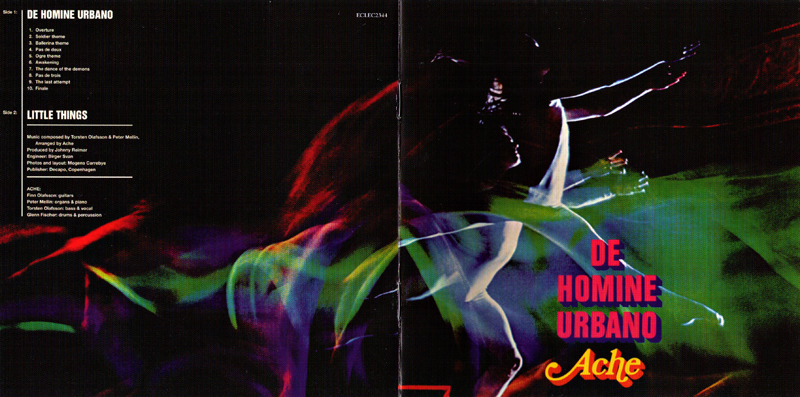
"De Homine Urbano, 1970, 2012 Esoteric Recordings, UK, re-issue
|
In early 1969, ACHE's Glenn Fischer, Torsten Olafsson, Peter Mellin, and Finn Olafsson,
co-composed/co-arranged/recorded the music for Danish Royal Ballet dancer Peter Schaufuss' first "beat ballet", now a.k.a. "the world's first ever genuine beat/rock ballet", titled "DE HOMINE URBANO", or, in other words: "About Urban Man". The ballet itself, though, when performed in early 1970 at the Royal Theatre in Copenhagen, its program title was given as "HOMO" ... 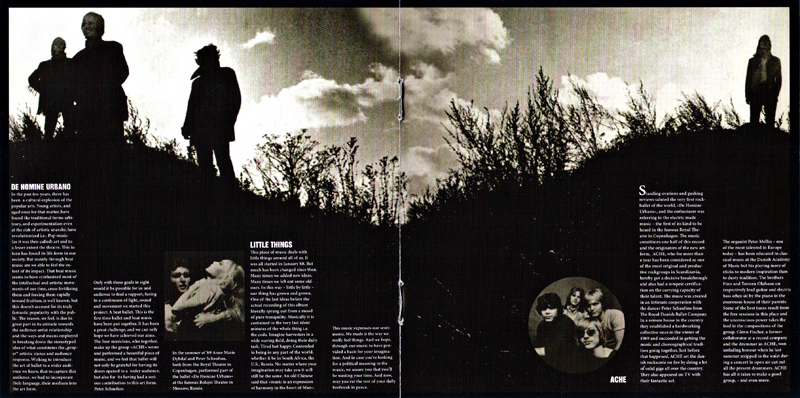
First released by PHILIPS in early 1970, in Denmark and France, the "De Homine Urbano" LP album was re-released internationally by PHILIPS in 1976. Then, in the fall of 2000, Universal Music, Denmark, put out the world's first digitally remastered "De Homine Urbano/Little Things" LP album on CD. The same digital versions of those two first, classical ACHE albums were also included in Universal Music's 2010 multiple CDs box set "Dansk Rock Historie 1965-1978", on CD number 7 in Box number 2, the socalled "Violet Box". In 2011, both vinyl records were re-issued on license by Lucky Pigs Records in Germany. In 2012, British Esoteric Recordings remastered and produced both "De Homine Urbano" and "Green Man" on two separate CDs with each their own new printed cover art designs, closely resembling the original LP covers. Come 2017, and 2018, respectively, Universal Music, Denmark, contributed with yet again new remastered vinyl reissues of both the "De Homine Urbano" and "Green Man" symphonic prog rock ACHE music albums. And, in Spring, 2020, Japanese international vintage rock label "Belle Antique" c/o the Marquee Co. contributed with their own special Japanese language CD versions of both of these classical and historic ACHE symphonic prog rock albums. Active link to achesite.dk: |
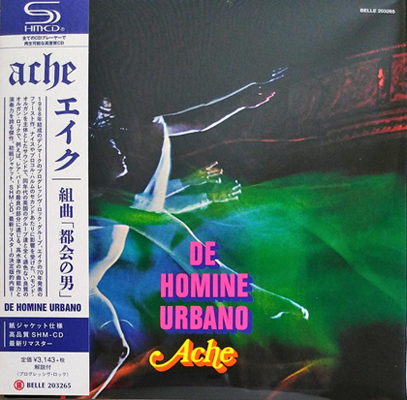
"De Homine Urbano", ACHE's very first LP album, 1970
Belle Antique, Japan, version. Released on March 25, 2020.
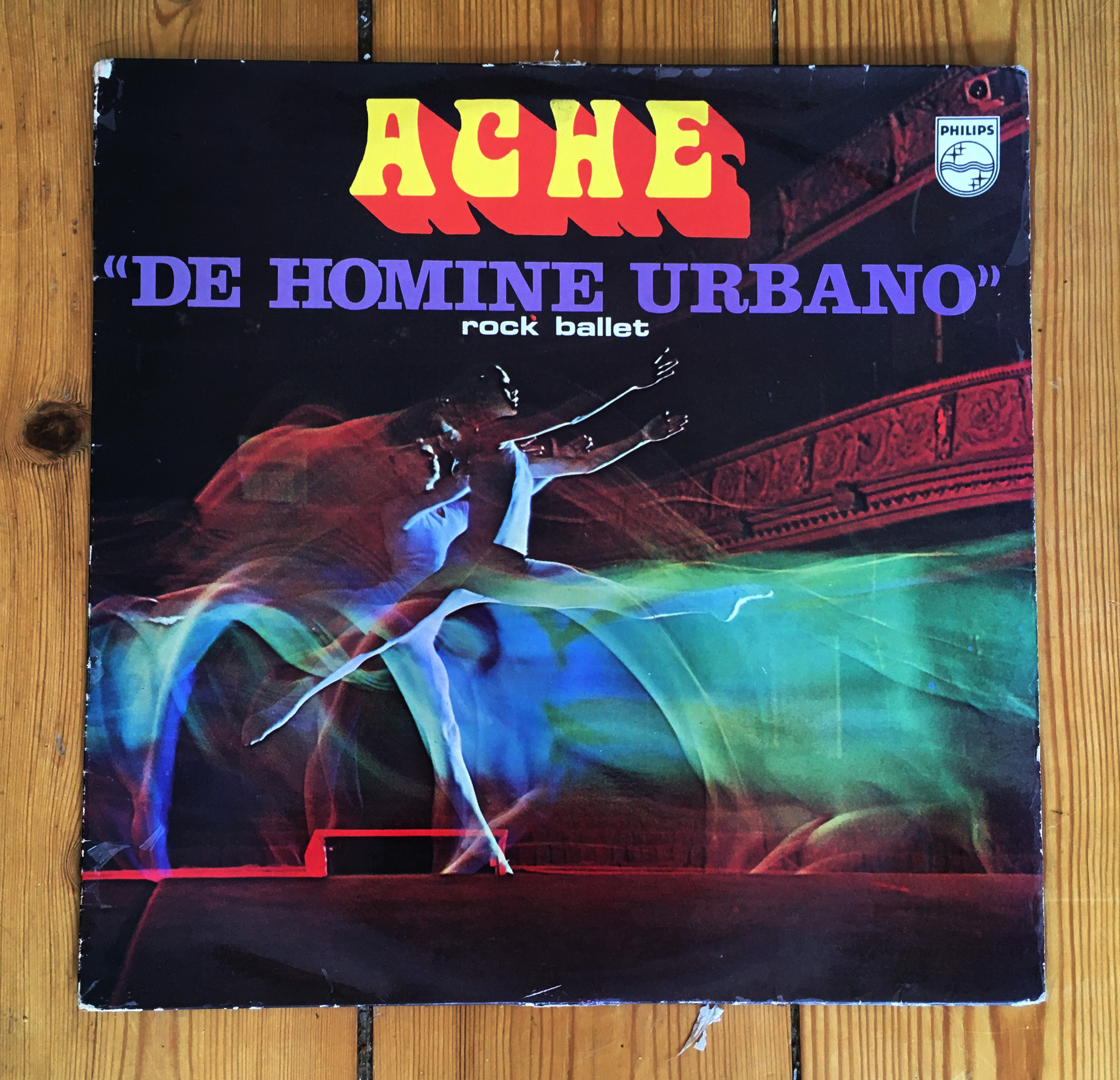

Left: "De Homine Urbano", ACHE's first LP album, 1970, was also released with an alternative front cover in France, sometime during 1970.
Right: In 2024, the French "De Homine Urbano" album cover was discovered as possibly framed in gold by a Russian record collector?
1970, January 4 - THE WORLD's FIRST TRUE ROCK BALLET "HOMO"/"DE HOMINE URBANO"
HAS its PREMIERE at The ROYAL THEATRE in COPENHAGEN, Denmark

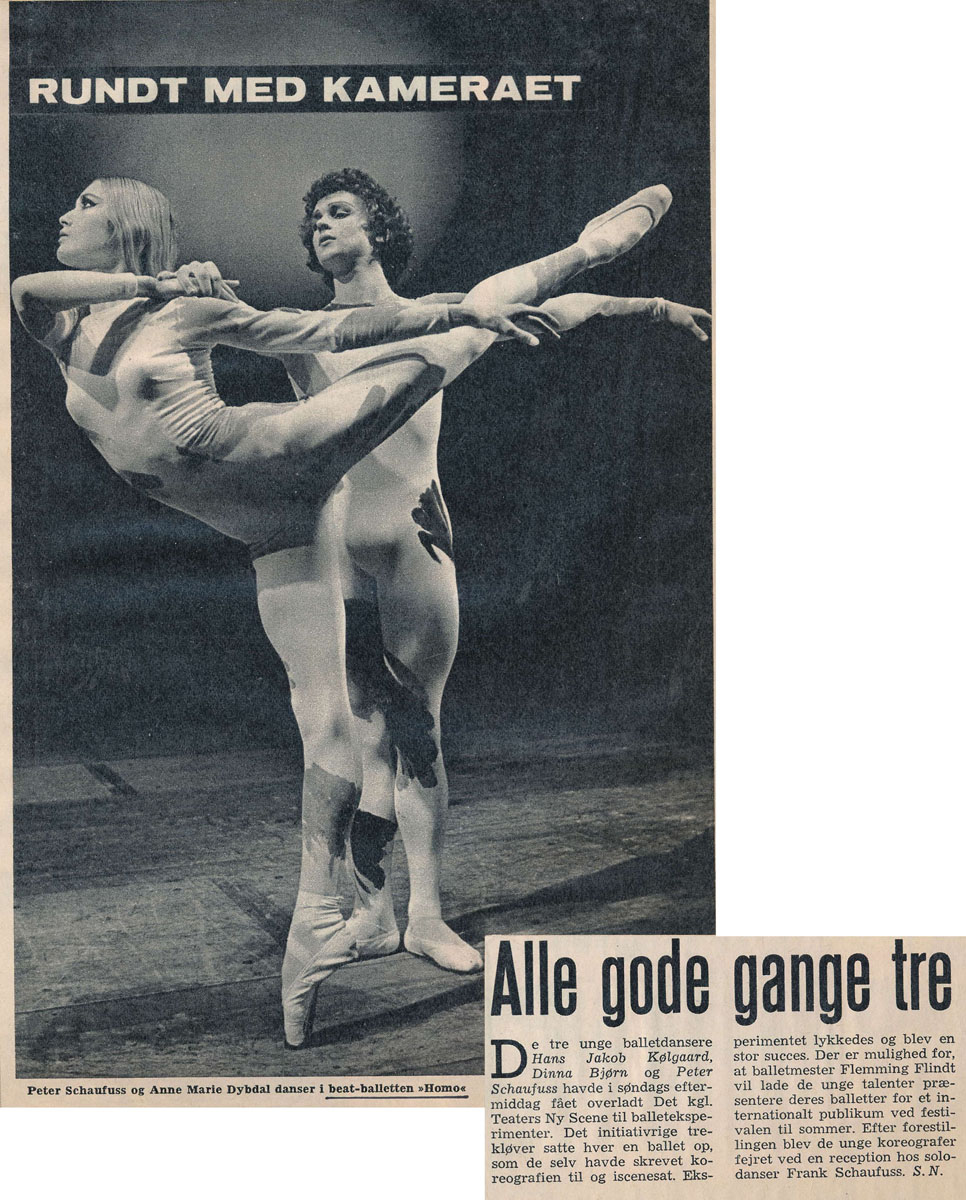
Left: Peter Schaufuss & Anne Marie Dybdal, Royal Danish Ballet, Denmark. Photo: Mogens Carrebye.
Right: Anne Marie Dybdal and Peter Schaufuss in the beat ballet "Homo"/"De Homine Urbano", 1970.
Press photo, The Royal Theatre, Copenhagen. Scanned from ACHE's scrap book.
January 1970: "DE HOMINE URBANO" and The WHO's "TOMMY" at Denmark's ROYAL THEATRE:
A FINE ACADEMIC INVESTIGATION by Dr. Phil. PALLE SCHANTZ LAURIDSEN, Univ. of Copenhagen, 2020


In 2020, in the October issue of Danish Musicology Online, Dr. Phil. Ph.D. Palle Schantz Lauridsen of the University of Copenhagen, Amager,
published a fine, comprehensive study of how, in January, 1970, for the very first time the Royal Theatre of Denmark staged not only one but several rock music shows:
ACHE & Peter Schaufuss's rock ballet "Homo"/"De Homine Urbano", and The WHO's rock "opera", "Tommy".
The Danish title of the study is:
"Beatopera og beatballet. Rockmusikken og Det Kongelige Teater i årene omkring 1970."
Title in English:
"Beat opera and beat ballet. Rock music and the Royal Theater in the years around 1970."
Palle Schantz Lauridsen himself was a youngster back then who eagerly took part in remarkable events and happenings taking place on the music scene at the time.
The article, in the Danish language, can be downloadet here.
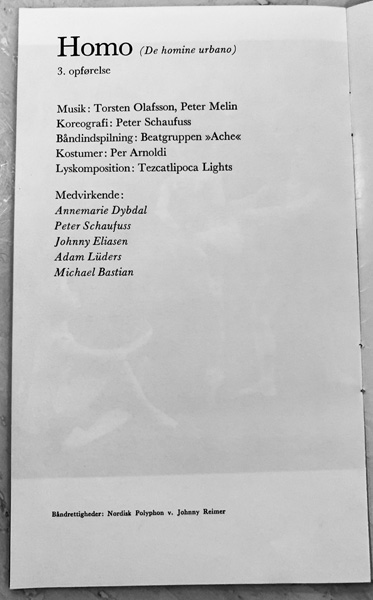
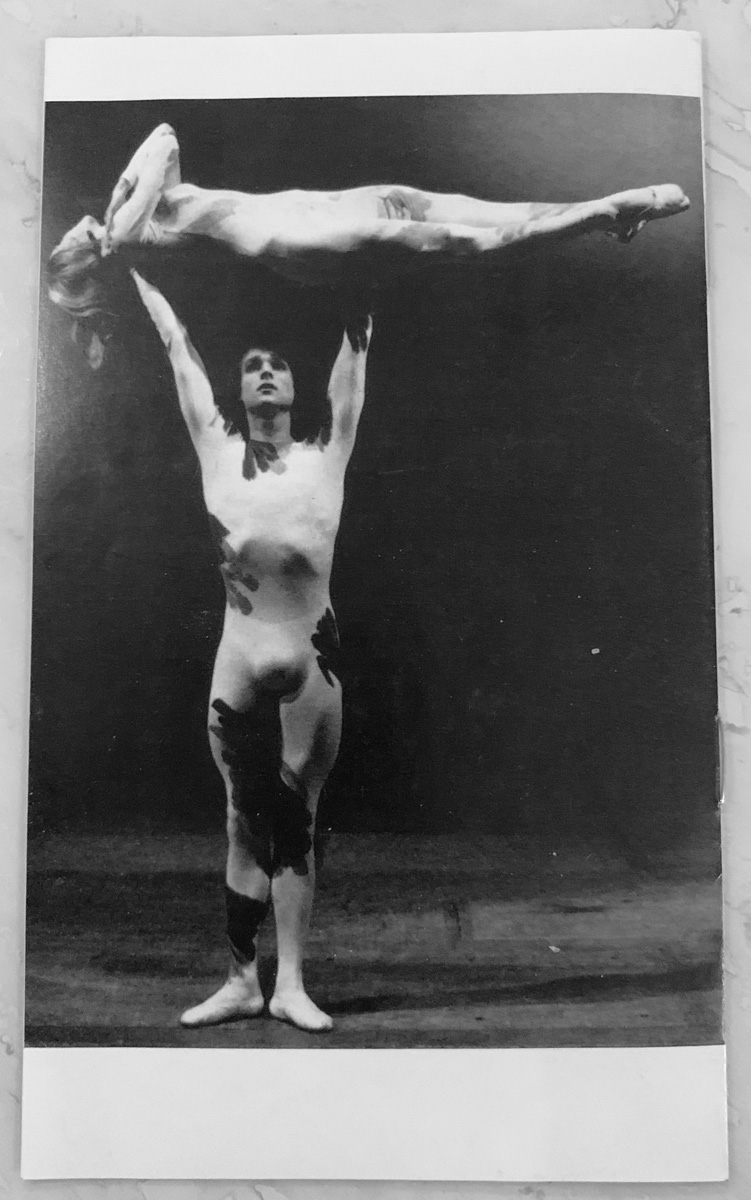
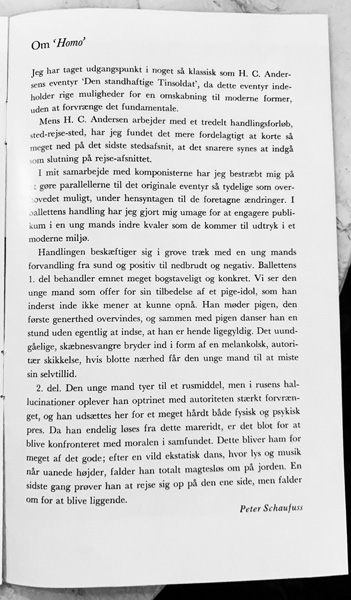
Ballet program (in Danish) presenting "Homo" on the third performance day: January 18, 1970.
Press photo, The Royal Theatre, Copenhagen.
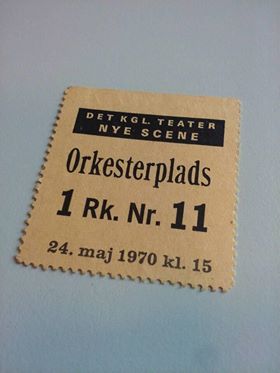
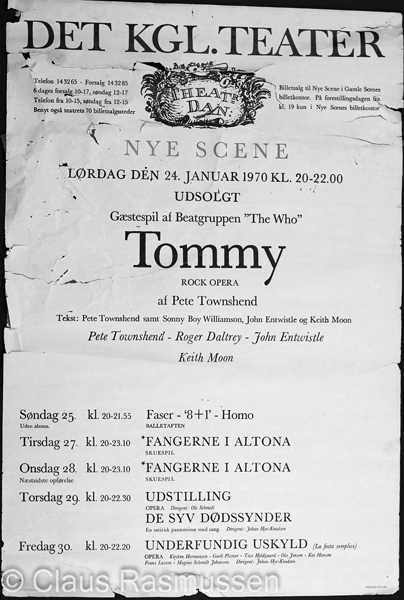
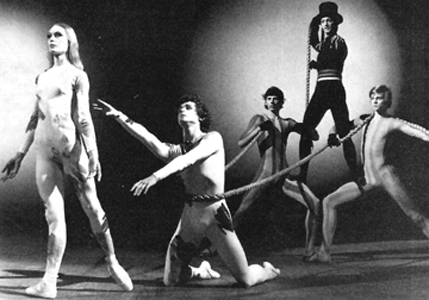
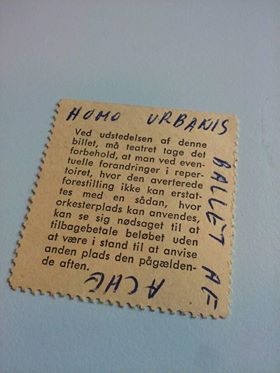
Royal Theatre "Homo" ballet ticket May 25, 1970, and Royal Theatre poster for January 24, 1970.
January 24: The WHO'S "TOMMY". January 25: ACHE's "De Homine Urbano". Source: Claus Rasmussen.
Center right: "Dance of the Demons" group dance from "Homo"/"De Homine Urbano", 1970.
Dancers from the left: Anne Marie Dybdal, Peter Schaufuss, Adam Lüders, Johnny Eliasen & Michael Bastiansen.
Press photo, Royal Theatre, Copenhagen.
1969-1970: THREE NOTEWORTHY Danish PERSONALITIES who DID BELIEVE in ACHE:
JOHNNY REIMAR, PETER SCHAUFUSS & WALTHER KLÆBEL
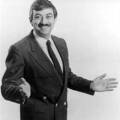

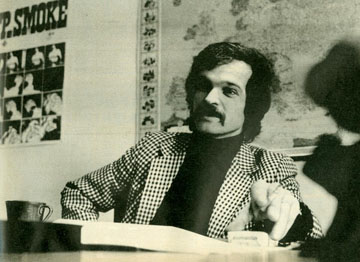
Left: Johnny Reimar. Photo: DR/Danish Broadcasting Company - Center: Peter Schaufuss, 1969 - Right: Walther Klæbel.
|
Just around January 1st, 1969, band manager/impressario Walther Klæbel had "discovered" ACHE when the band performed at a late night concert in central Copenhagen titled "Electric X-Mas".
A management contract was signed, and for two years, ACHE enjoyed - and strongly matured from musically - being sent out by Klæbel's concert management firm DMC/Danish Mudic Center to perform at many a variety of rock music venues all over Denmark. Then, in February, 1969, Royal Danish solo ballet dancer Peter Schaufuss got notice of ACHE's Danish National Radio studio recording and mid-February broadcast of their prog rock composition "Tne Funeral of Donald Duck", and in no time, joining forces, Peter and ACHE succeeded in creating the plot, music and choreography for the world's very first genuine "beat ballet" titled "De Homine Urbano"/"Homo": "About Urban Man". Not long afterwards, come early Spring, 1969, hearing rumours about that extraordinary art project, renowned Danish musician/singer and Nordisk Polyphon/Philips record producer Johnny Reimar invited ACHE to record the music in the Metronome A Studio in Copenhagen. That was accomplished in but one single day, and the music was, eventually, released on Philips vinyl LP in early February, 1970. |
1969-1970: CLASSICAL ACHE - The CONCERTS
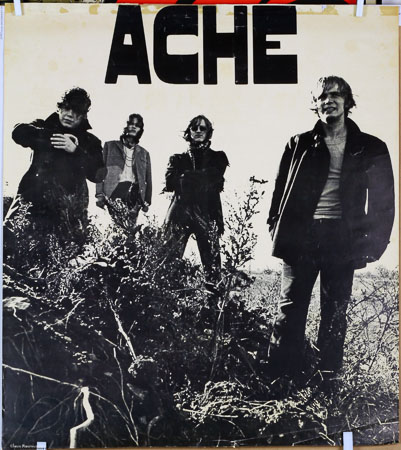
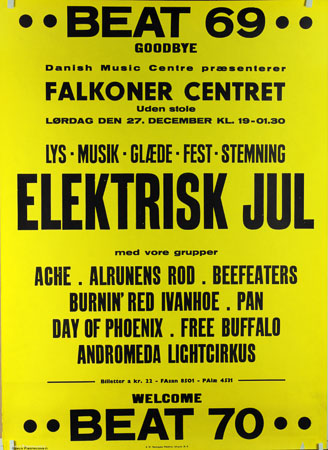
ACHE related concert posters: Mid-, and late 1969
Source, online poster collection by Claus Rasmussen, Denmark: https://koncertplakater.melipona.org/plakateralle/ &
http://koncertplakater.melipona.org/index2.html?fbclid=IwAR2ENz9uL5Ue1bIJF3AvHlv-S1EBfQTyTjomhnxQlD9jSLsY1iHu8wNYYcU
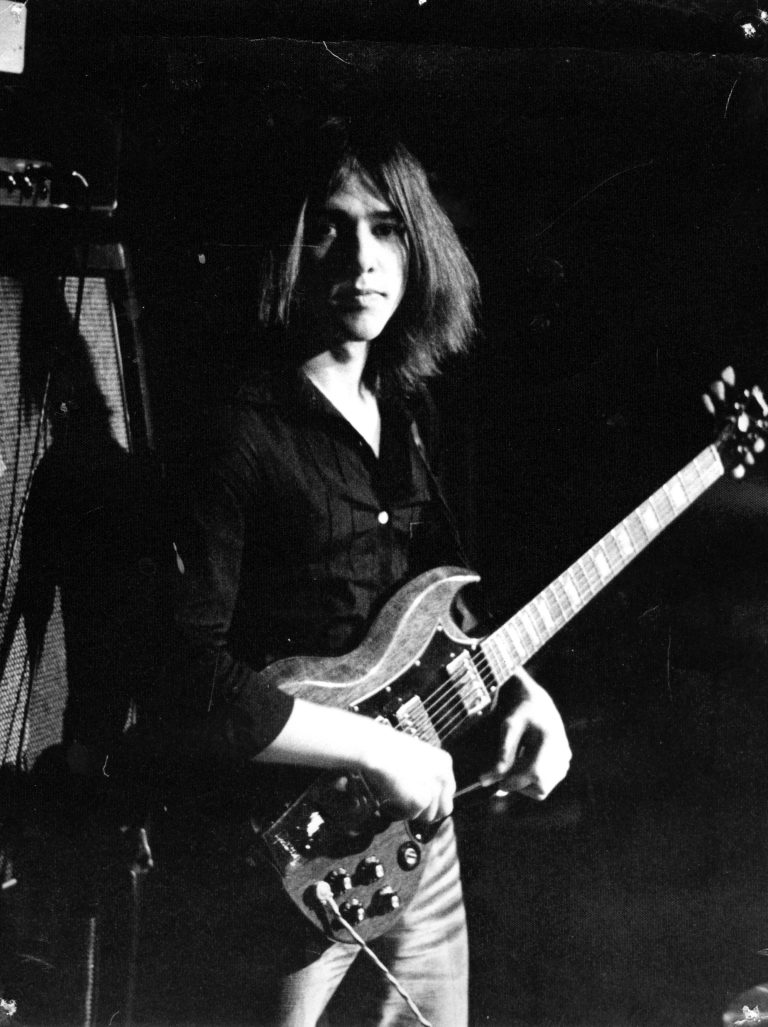
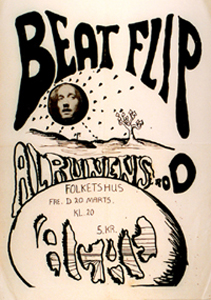
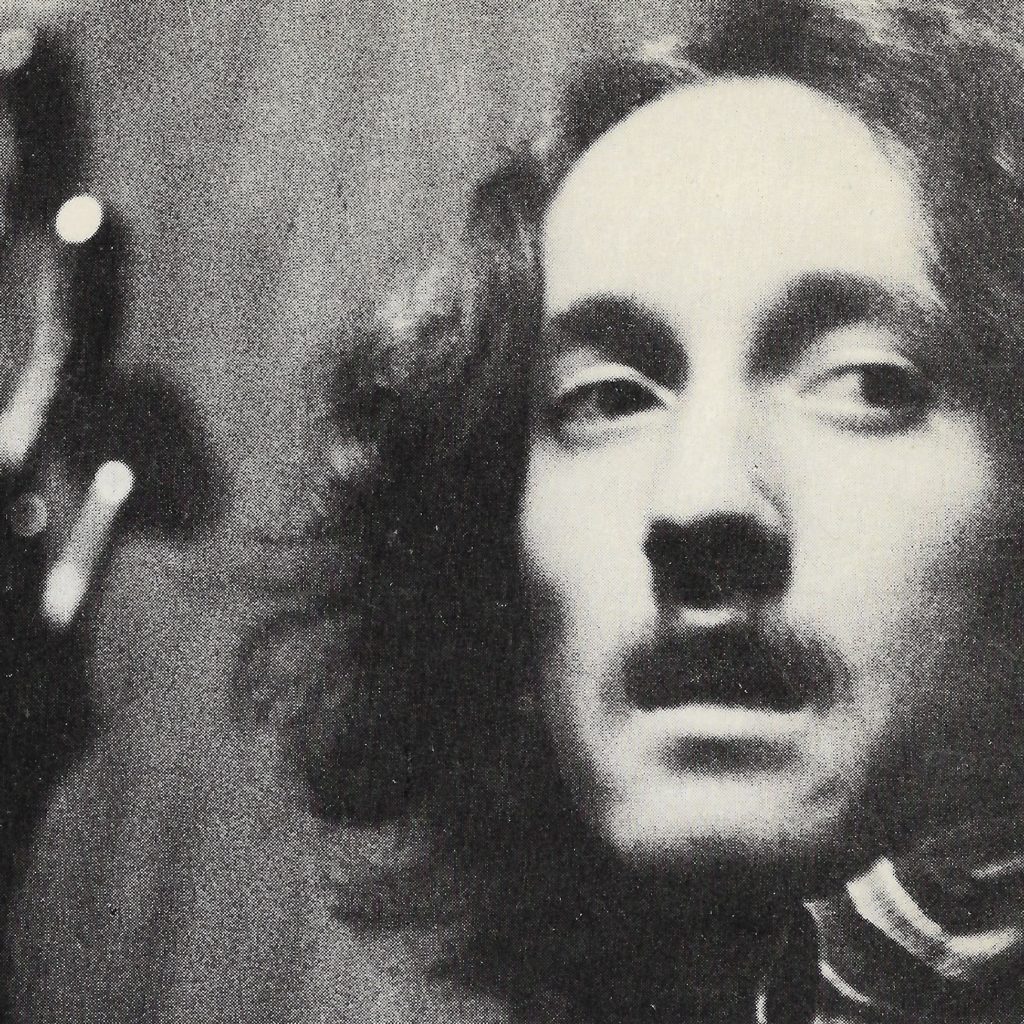
Quite frequently, in 1969 and 1970, ACHE performed progressive rock double concerts sharing stage with ALRUNE ROD.
Left: Alrune Rod guitarist Flemming Poul Giese, 1969. Source: side33.dk.
Center: Concert poster promoting a joint concert in Elsinore, March 20, 1970.
Right: Alrune Rod singer and bassist Leif Roden, 1969. Foto: Poul Bruun. Source: side33.dk.

Finn Olafsson, Glenn Fischer, Torsten Olafsson & Peter Mellin, Summer, 1969. Foto: Steen Møller Rasmussen.
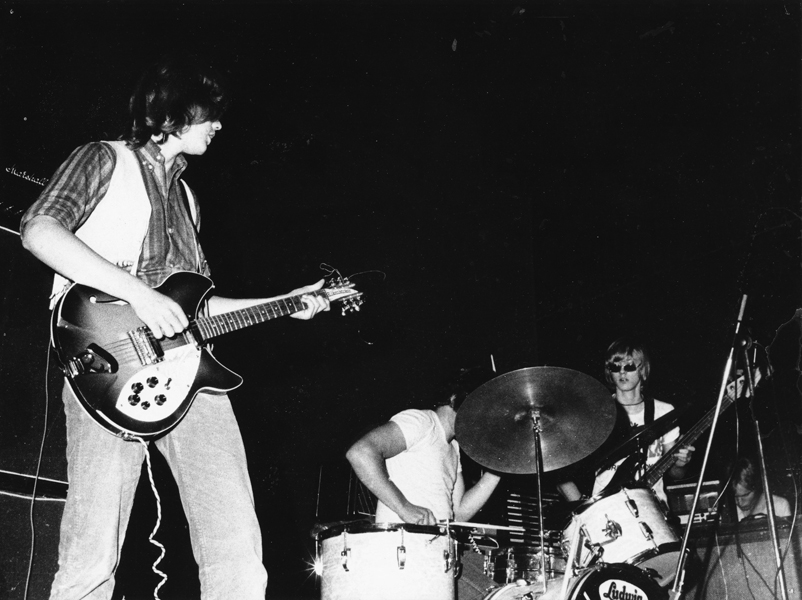
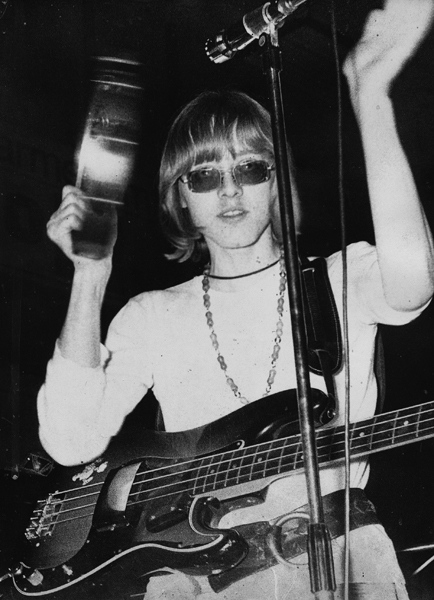
Finn Olafsson, Glenn Fischer, Torsten Olafsson, Peter Mellin, Summer, 1969 & Torsten Olafsson, 1969.
Fotos: Steen Møller Rasmussen & Jørgen Nielsen.
1969 - CLASSICAL ACHE - The "DE HOMINE URBANO" CREATION PERIOD 1969
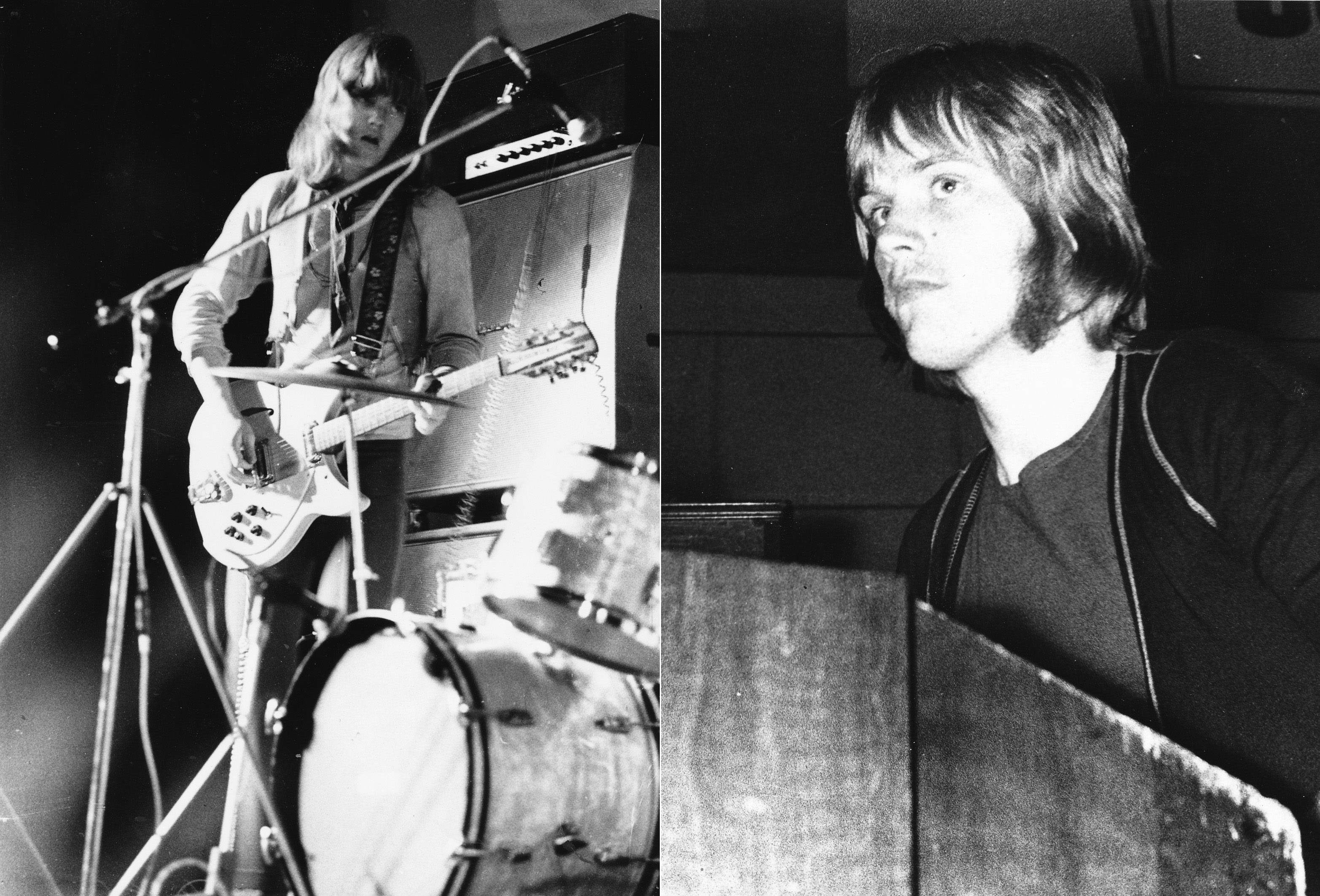
Finn Olafsson, Peter Mellin - October 19, 1969
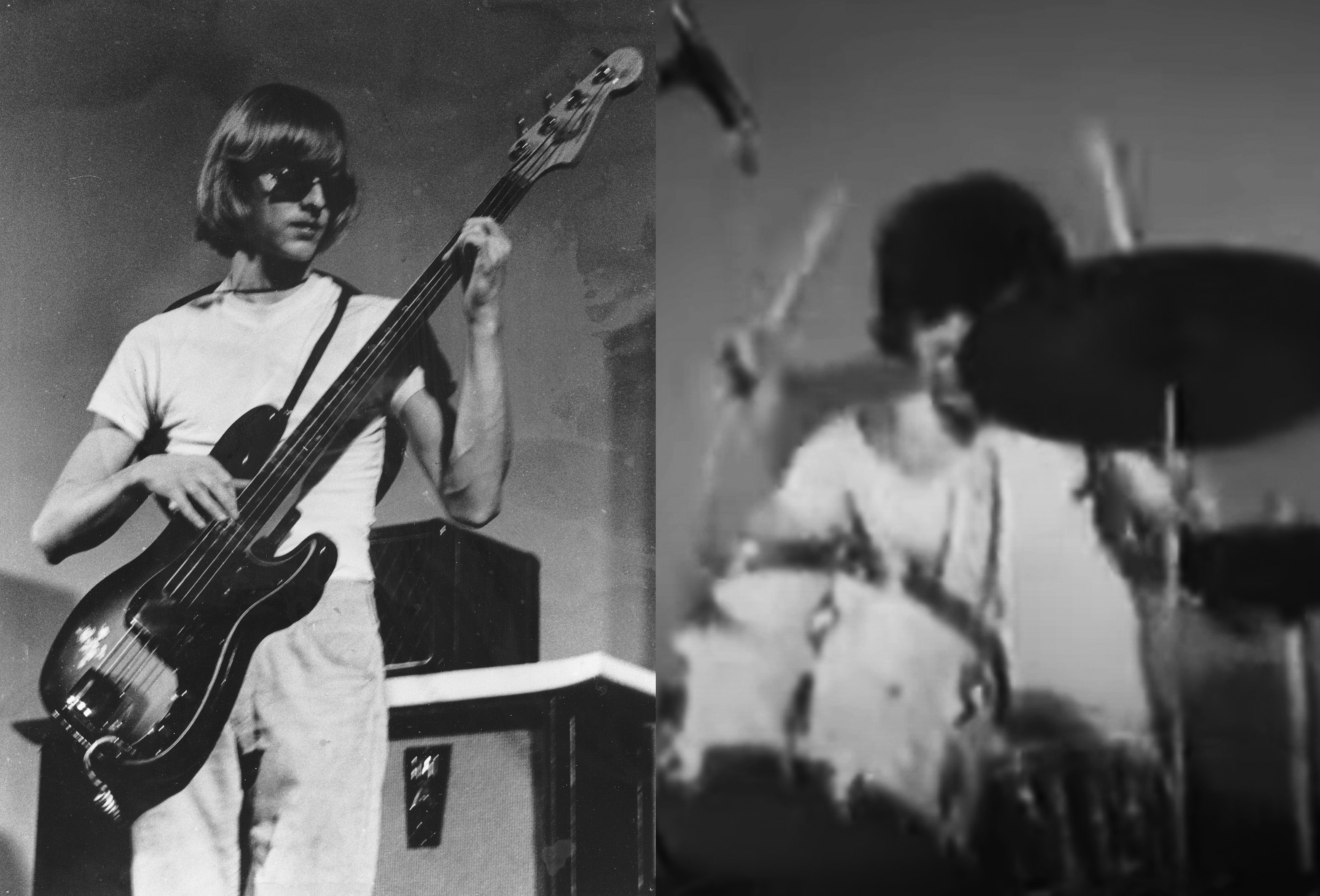
Torsten Olafsson, Glenn Fischer - October 19, 1969
|
The above 4 pictures: Passed midnight, quite early in the morning on October 19, 1969, ACHE performed a so called "midnight session" in the Dagmar movie theatre in the center of Copenhagen. A short video clip from the concert can be seen via this Youtube link - now more than 37.000 views - copy and paste the URL: https://www.youtube.com/watch?v=4C_sdp_4EMc&ab_channel=Danskpsykedeliskmusik |
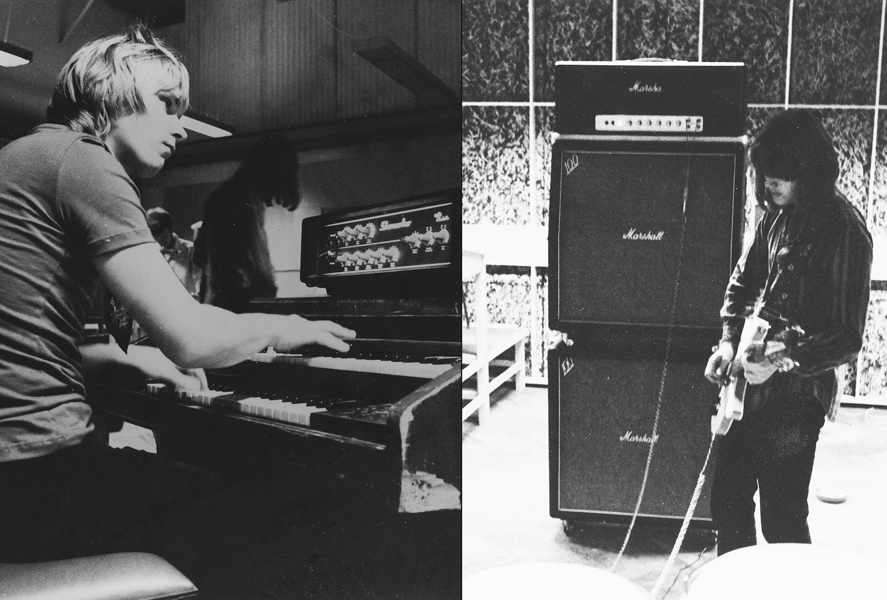
Peter Mellin, Finn Olafsson - Autumn, 1969
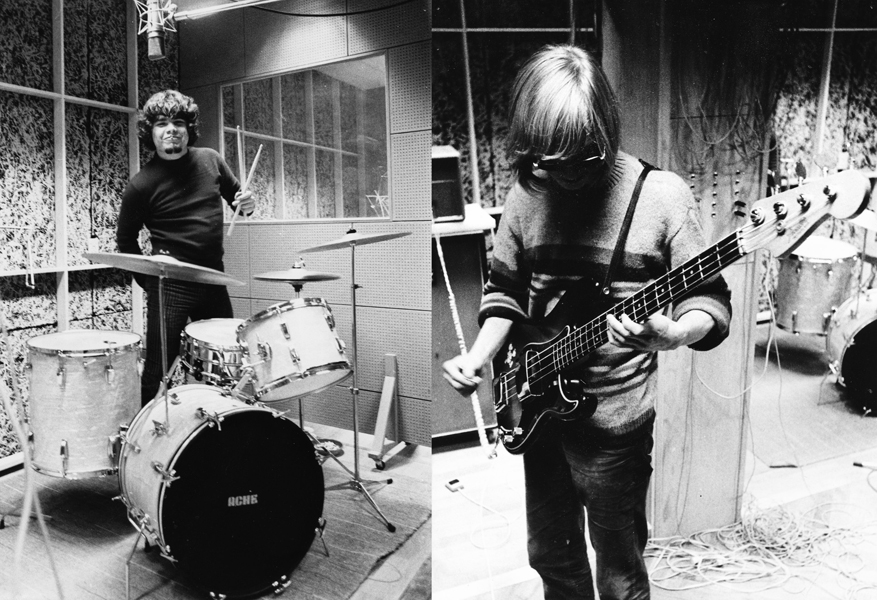
Glenn Fischer, Torsten Olafsson - Autumn, 1969
Late August, 1969 - ACHE LIVE during the DR TV ELECTRONICA '69 Exhibition at BELLA CENTER
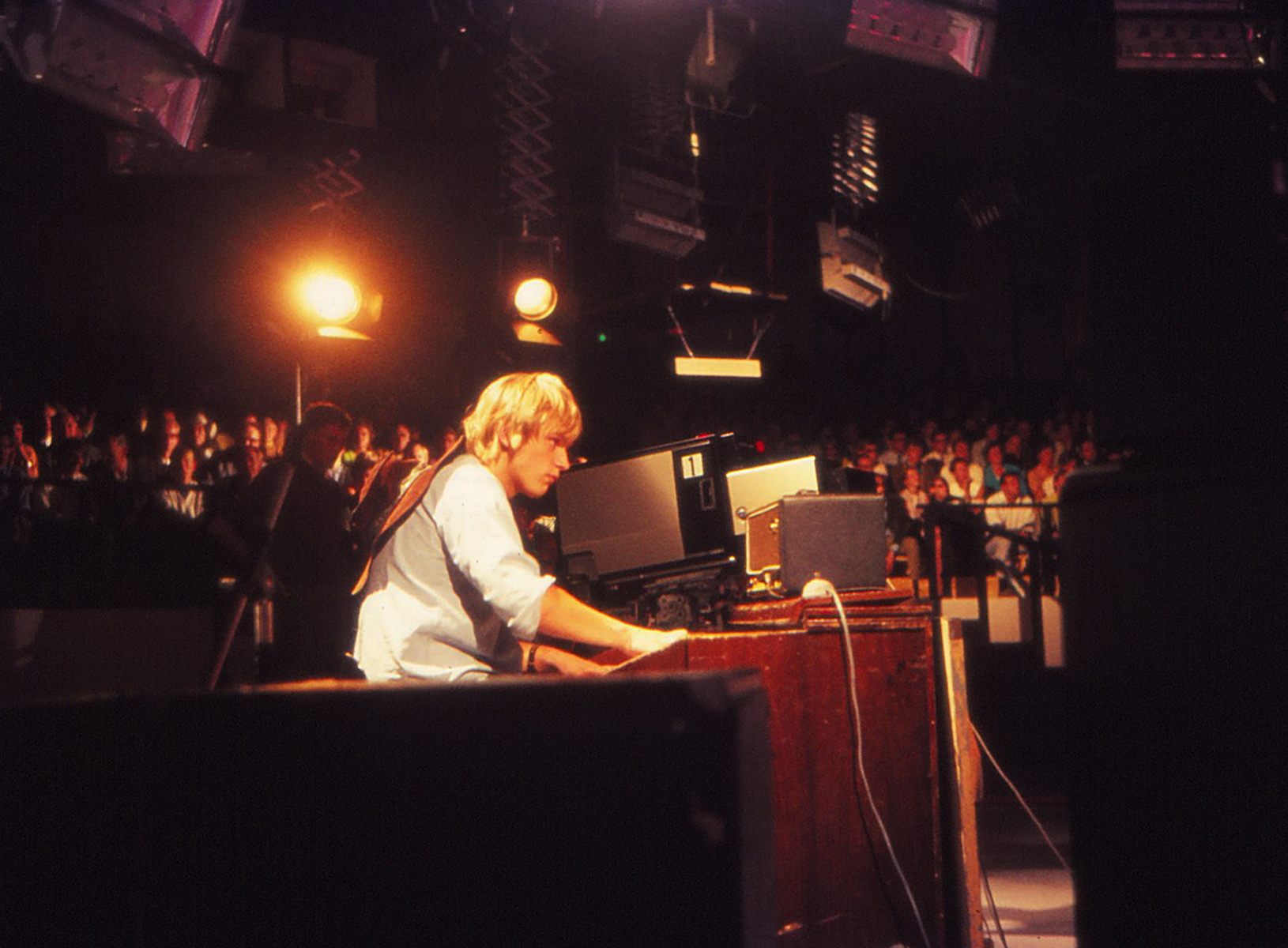
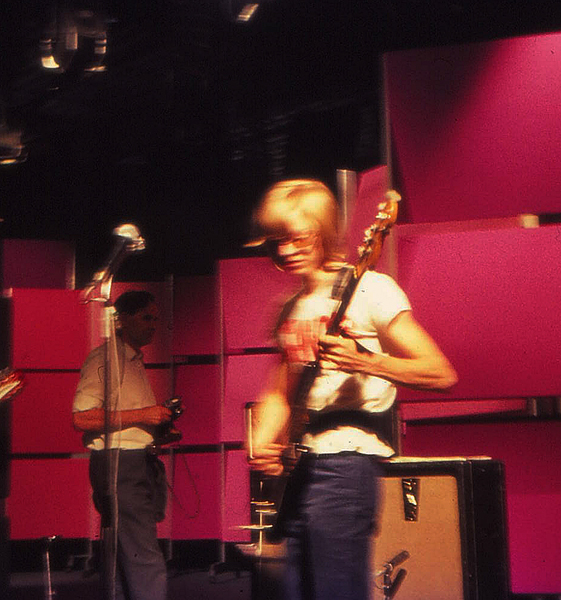
Peter Mellin and his fabulous Hammond M3 organ, together with ACHE at the "old" Bella Center, Copenhagen,
during the very first rock music show broadcasted live in colour in Denmark,
last weekend in August, 1969, in prime time Saturday evening.
Right: Torsten Olafsson. Photos by Dan Worbs Petersen.
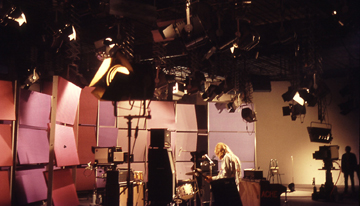
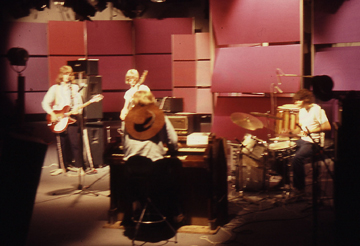
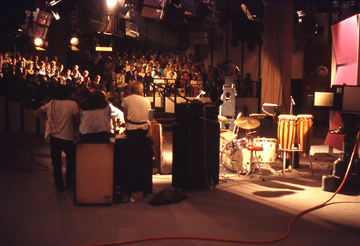
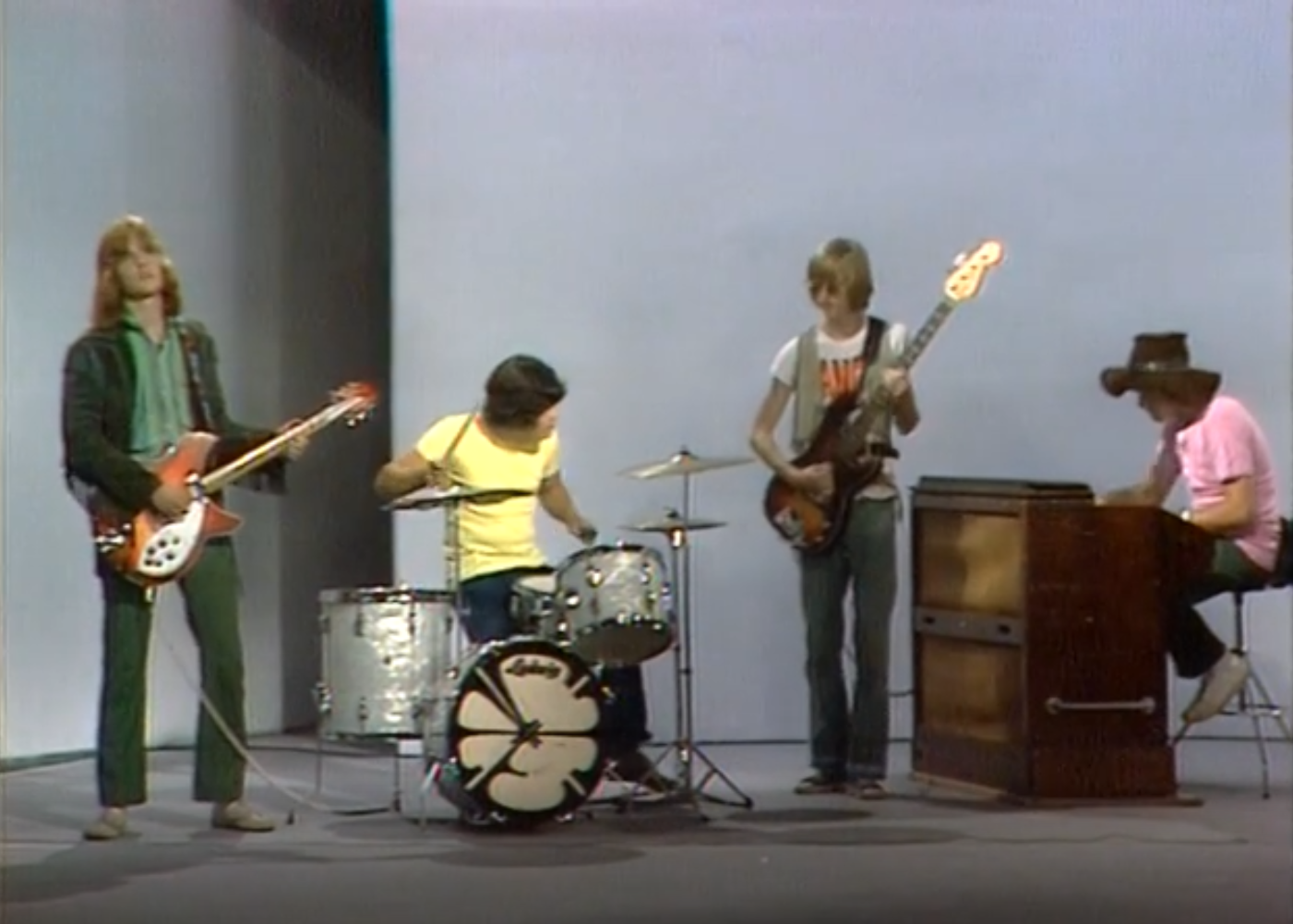
ACHE broadcasted live performing "Tranedans", "Crane Dance", during the Electronica '69 opening ceremony, a screen shot.
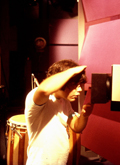
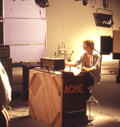
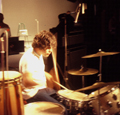
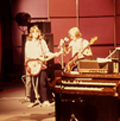
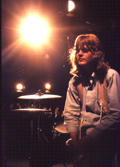
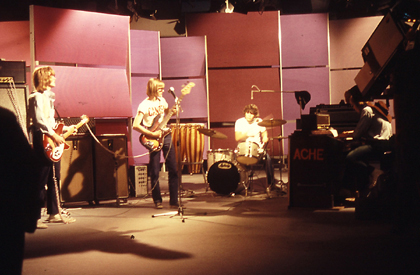
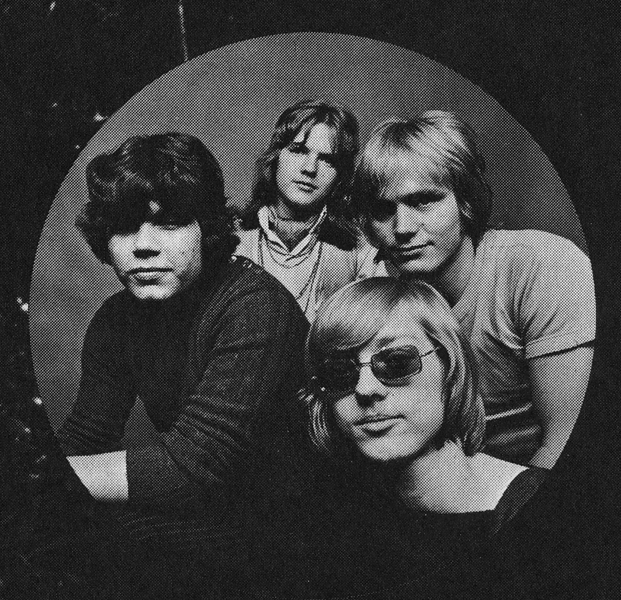
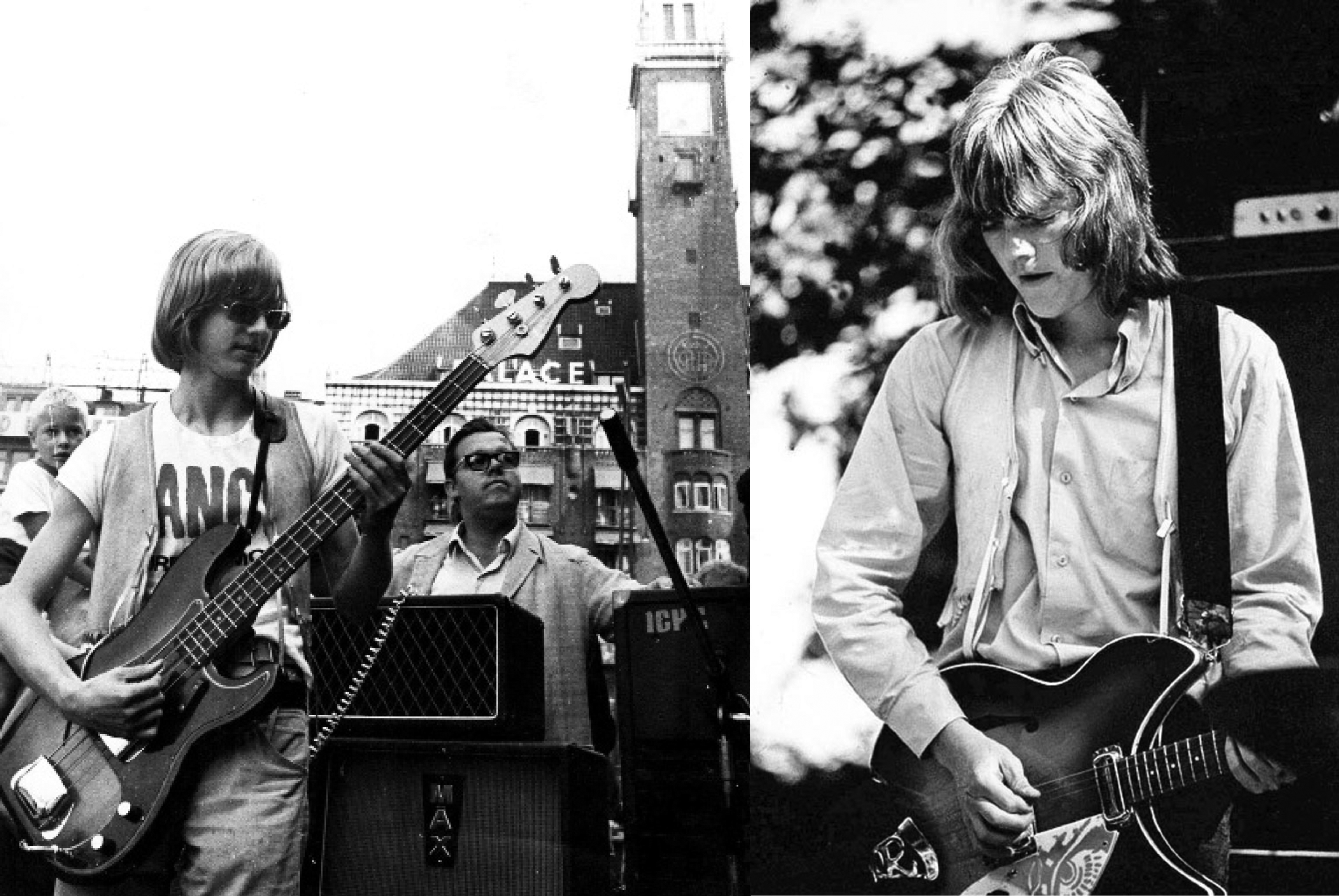
Torsten Olafsson with ACHE on the Copenhagen Town Hall Square & Finn Olafsson at a Nivaagaard Commune concert, both in Summer 1969.
1969 - EARLY through Mid-1969

ACHE live on stage at the Copenhagen Falkonér Scene venue, mid-1969.
Finn, Glenn, Torsten, Peter.
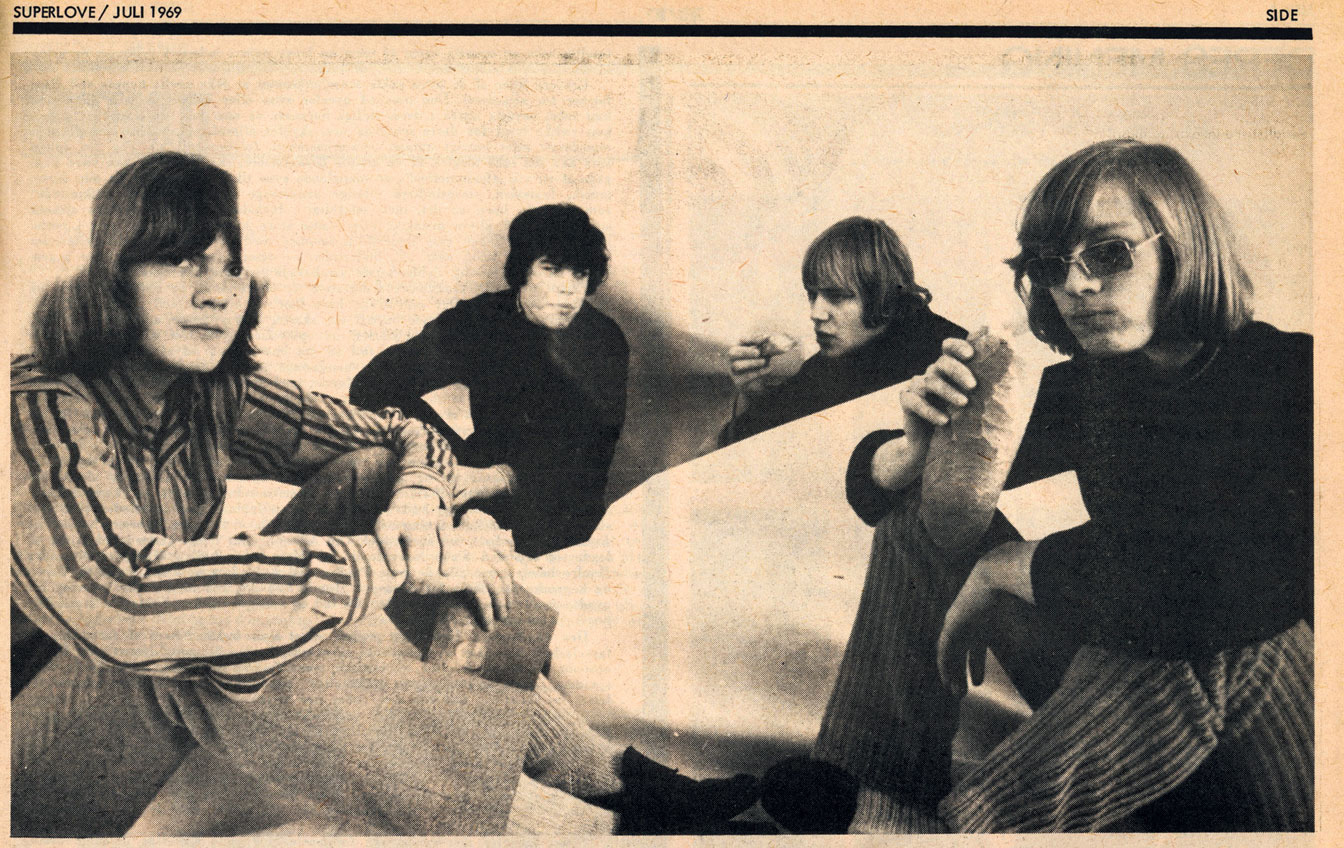
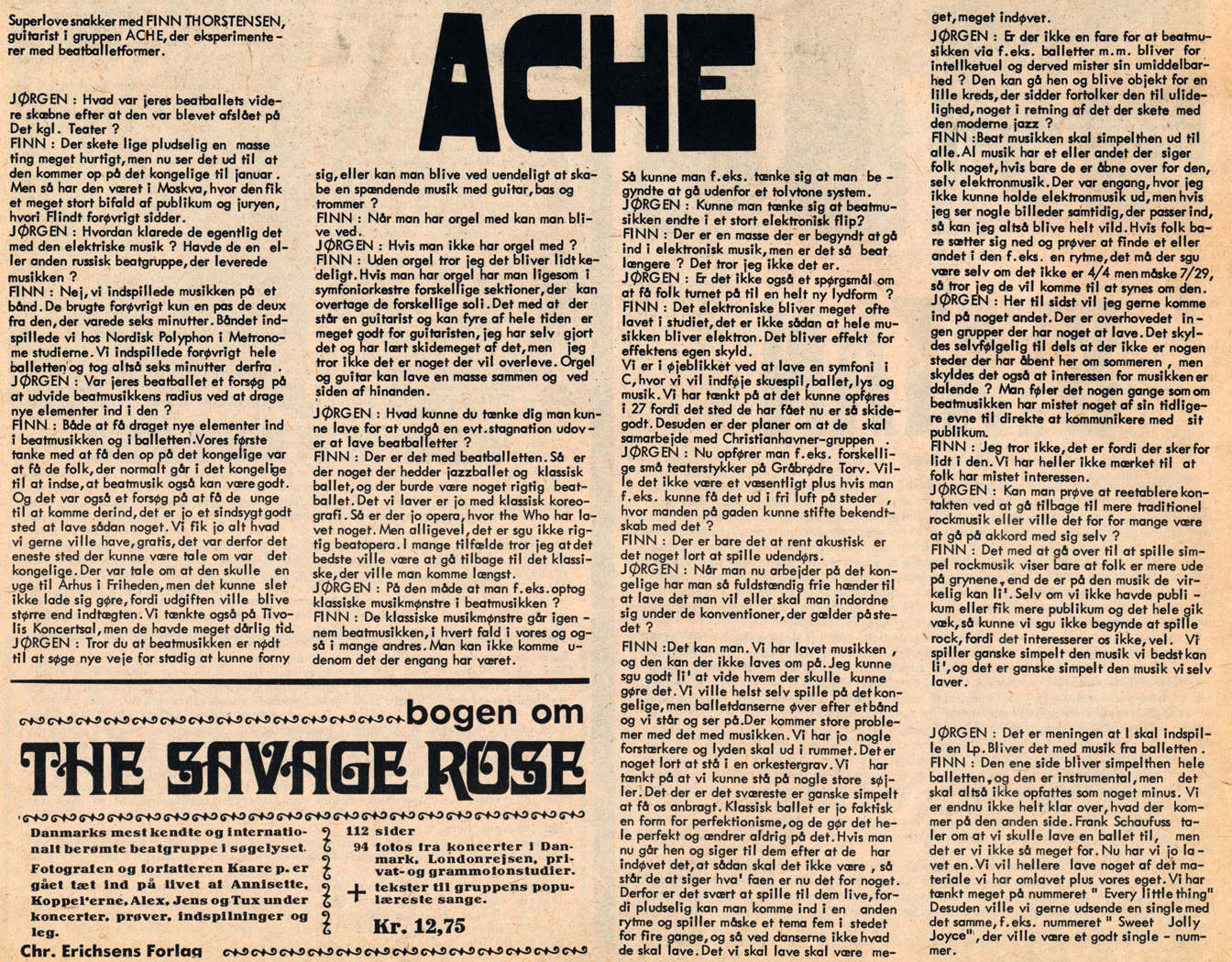
ACHE's beat ballet project with Peter Schaufuss certainly caught the attention of the media,
like for instance the then leading underground music scene magazine SUPERLOVE who began to follow up on the developments.
The picture shows a July 1969 interview with Finn Olafsson made by SUPERLOVE chief editor Jørgen Aurvig.
Source: Peter Lehrmann's online collection of Danish youth culture magazines: https://peterlehrmann.dk/ungdomsblade-i-60erne/
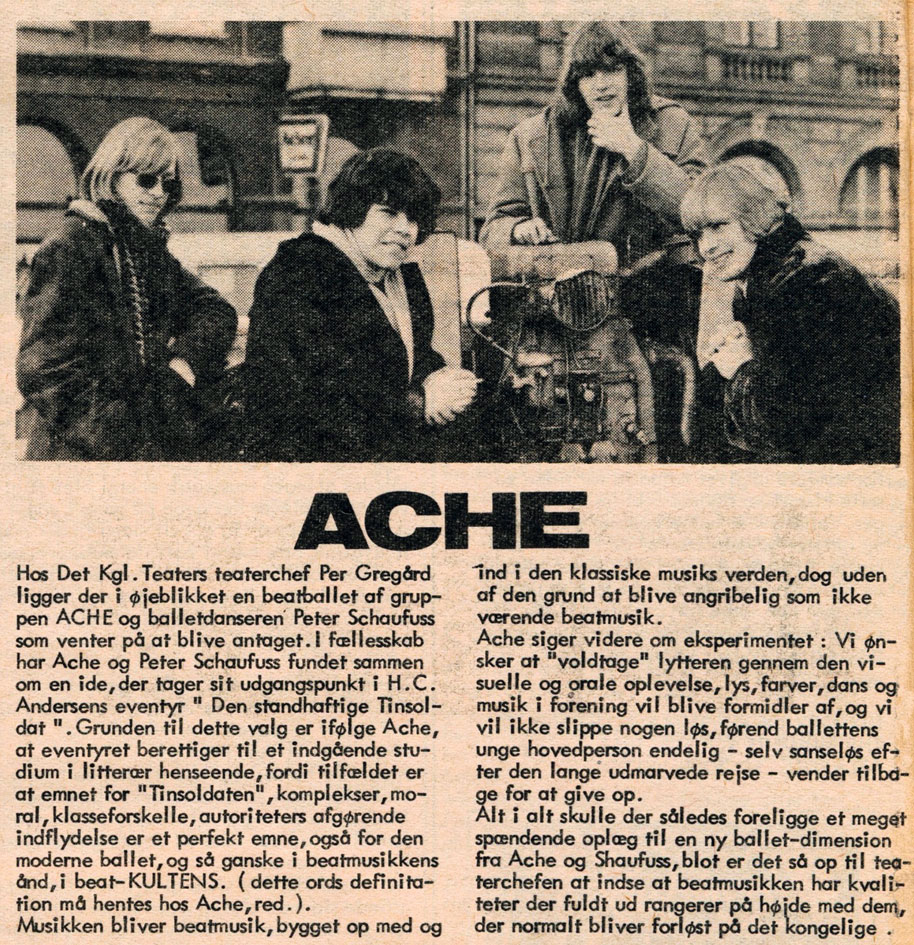
ACHE's beat ballet project in the underground culture media, early 1969.
The picture shows an April 1969 ACHE story by SUPERLOVE chief editor Jørgen Aurvig.
Source: Peter Lehrmann's online collection of Danish youth culture magazines: https://peterlehrmann.dk/ungdomsblade-i-60erne/
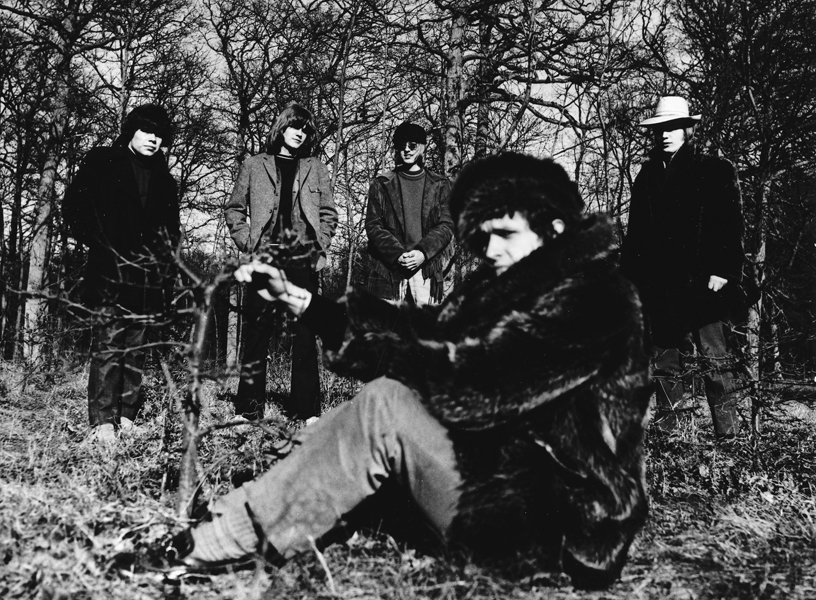
ACHE with Royal Danish Solo Ballet dancer Peter Schaufuss, who choreographed
the world's very first "beat ballet" titled "De Homine Urbano" with music composed by ACHE.
Top, from the left: Glenn Fischer, Finn Olafsson, Torsten Olafsson, Peter Mellin - Quite early 1969.

February, 1969: Short article about ACHE in the underground music magazin "Superlove"
written by the magazine's owner and chief editor, Jørgen Aurvig.
Finn O: el. guitar - Peter M: Hammond organ - Glenn F: drums - Torsten: el. bass.
Photo possibly by ACHE's friend and roadie, Dan "Wobber" Worbs?,
taken in Summer, 1968, in Peter Mellin's family house on the S. Copenhagen island Amager.
Image/scan kindly supplied by Danish prog rock memorabilia collector Poul Thaarup, Næstved, SW Sealand, Denmark.
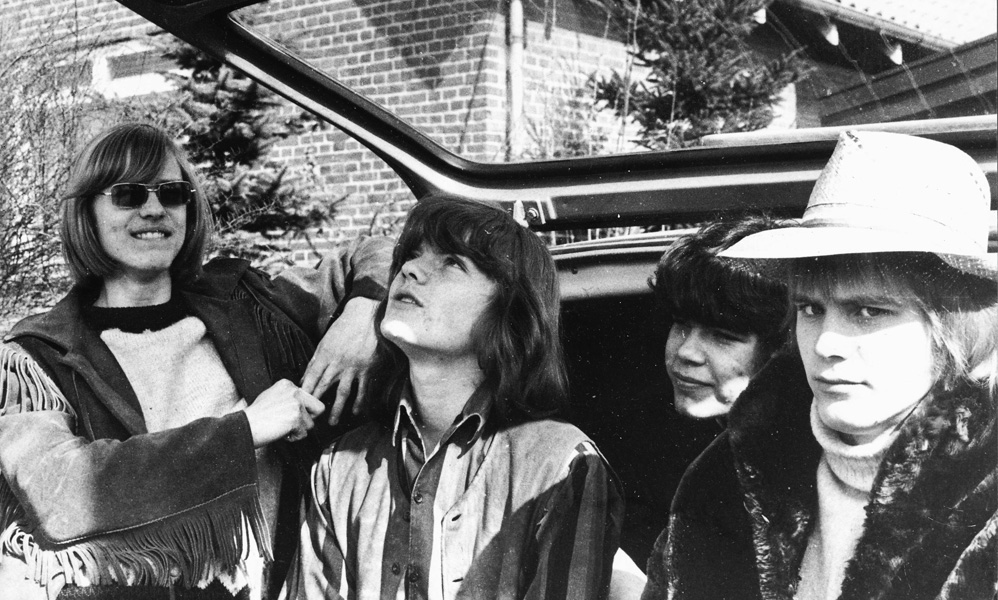
Torsten Olafsson, Finn Olafsson, Glenn Fischer, Peter Mellin - Early Spring, 1969.
1968 - CLASSICAL ACHE - The BEGINNINGS
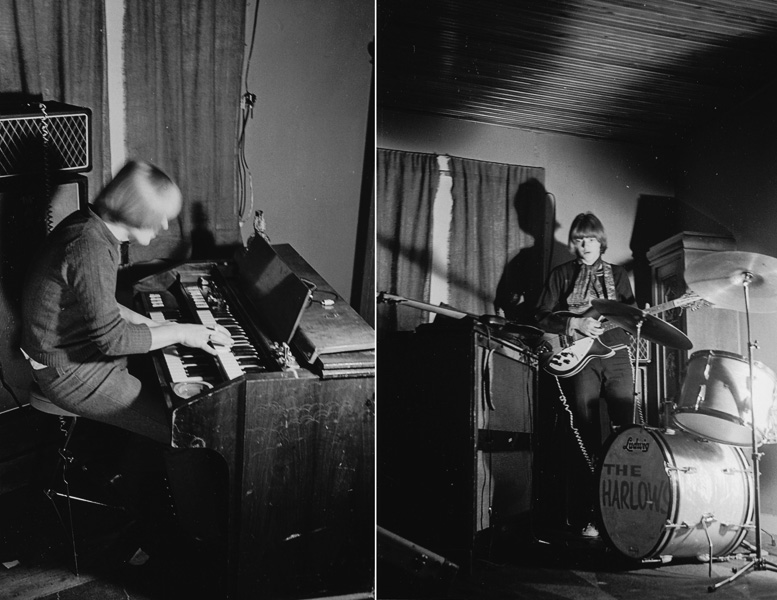
ACHE, Summer 1968:
Peter Mellin & Finn Olafsson - chords, themes & solos
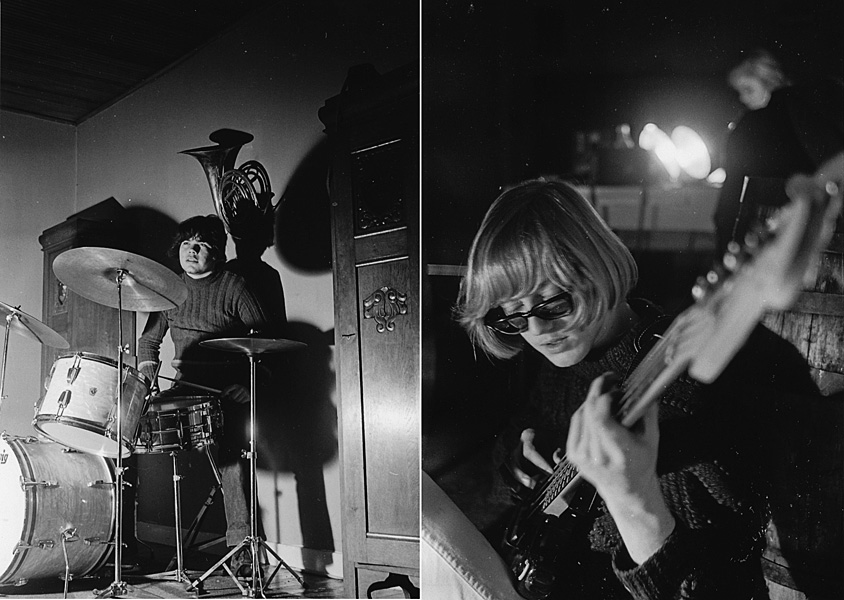
ACHE, Summer 1968:
Glenn Fischer & Torsten Olafsson - rhythm, drive & dynamics
1964 - ACHE HISTORY Chapter 00: The pre-ACHE EARLY BEGINNINGS
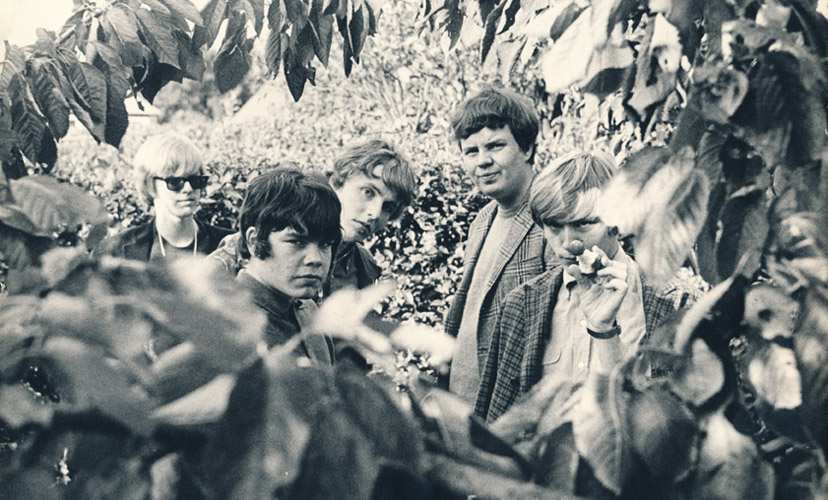
The pre-ACHE beginnings: The HARLOWS, late Summer 1967:
Torsten (bs), Glenn (dr), Kelvin (voc), Jørgen "Rup" (gt), Peter (Hammond M3 organ)
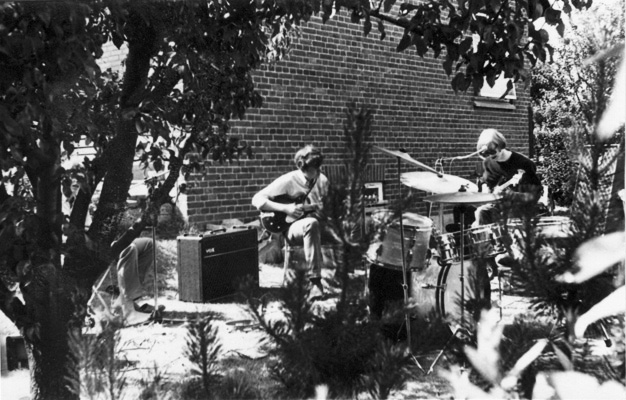
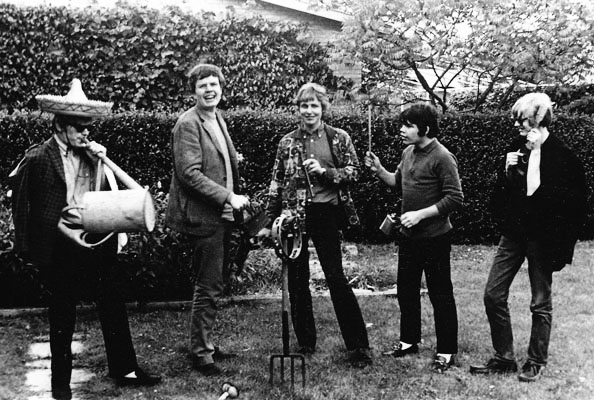
The pre-ACHE beginnings: The HARLOWS, 1967:
Left: Jørgen Schaarup-Jensen & Torsten Olafsson, mid-Summer
Right: Peter, Jøgen, Kelvin, Glenn, Torsten, late Summmer
The Pre-ACHE The HARLOWS RHYTHM GROUP MUSICIANS: GLENN FISCHER, dr, & TORSTEN OLAFSSON, bs
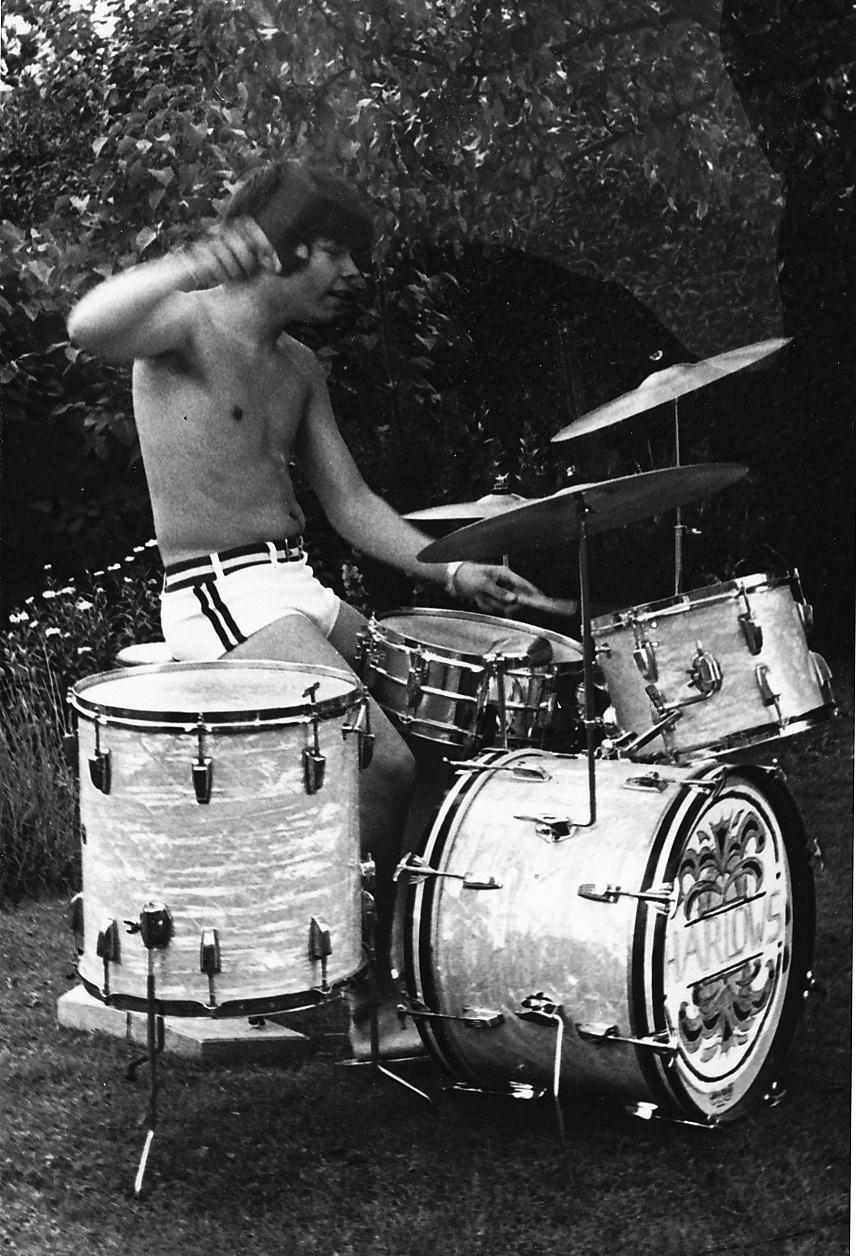
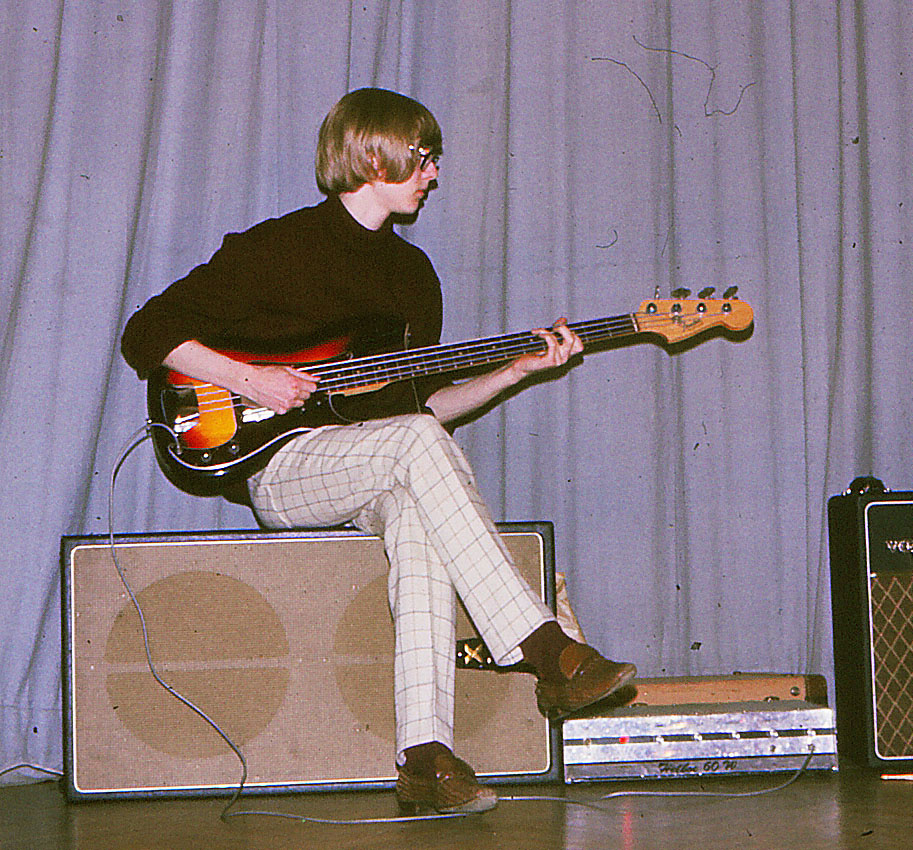
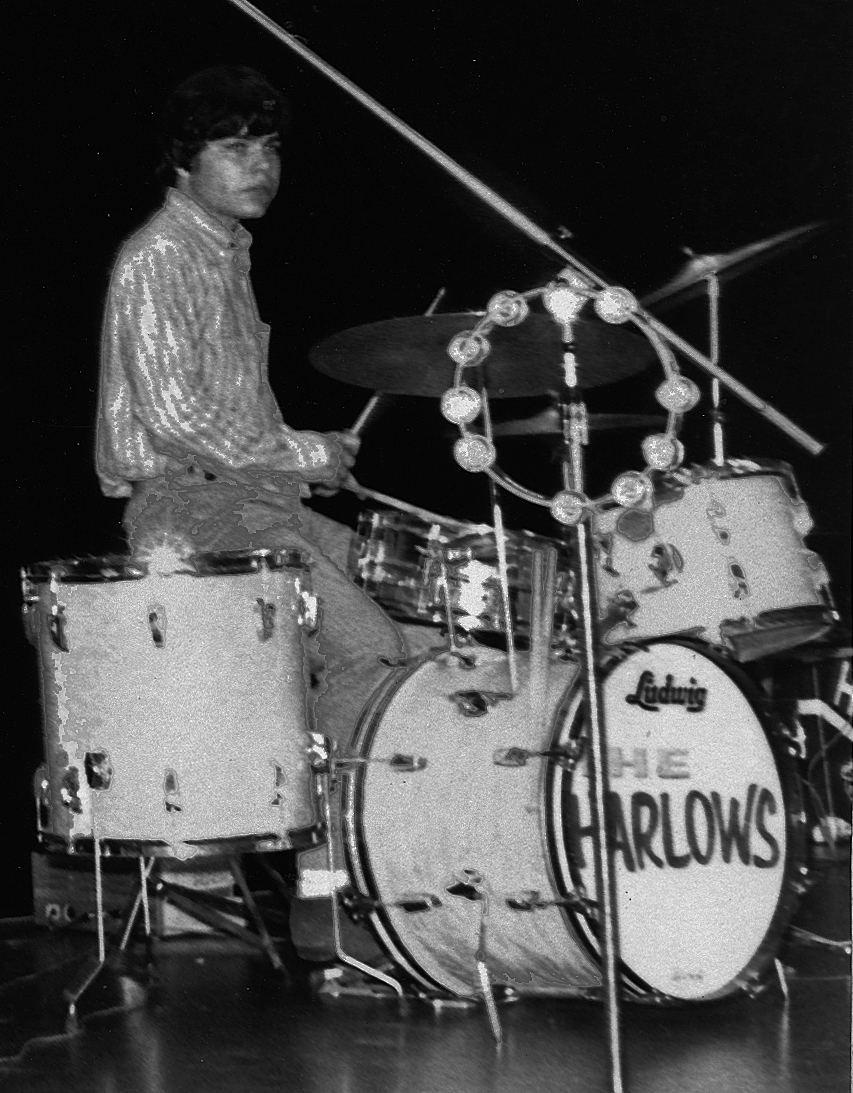
|
In February 1967, Torsten Olafsson, who had since 1964 already eagerly been playing the drums, was kind of "inspired", if not actually "invited",
to replace Peter Mellin on his Fender Precision bass in the popular, well-playing South Copenhagen, Amager Island band: THE HARLOWS.
Torsten, already knowing that no less than absolutely formidable THE HARLOWS drummer Glenn Fischer pretty well already, did not hesitate, when responding as he did: "Yes, I can do that!" During all of 1967, Torsten and Glenn worked out that tight and really closely knitted backing rhythm group play that became the very solid dynamic foundation of ACHE's symphonic prog rock that developed after Glenn and Torsten together with now miraculously turned Hammond organ player, in late Summer 1967, Peter Mellin, and guitarist Finn Olafsson during the course of 1968 established their extraordinarily creative music group collective named "ACHE". |
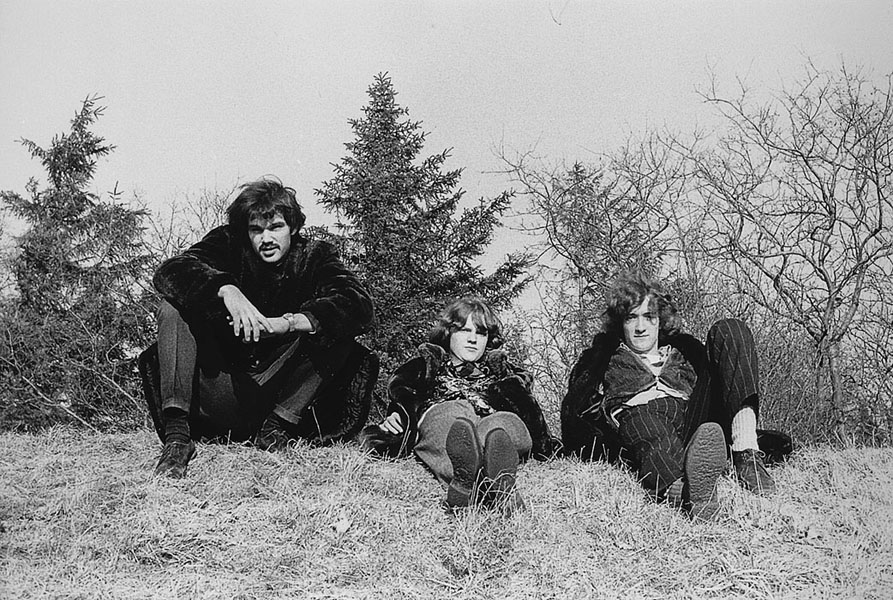
The pre-ACHE beginnings: McKENZIE SET, Winter 1967-68:
Rogert (b), Finn (g/v), Kjeld (dr)
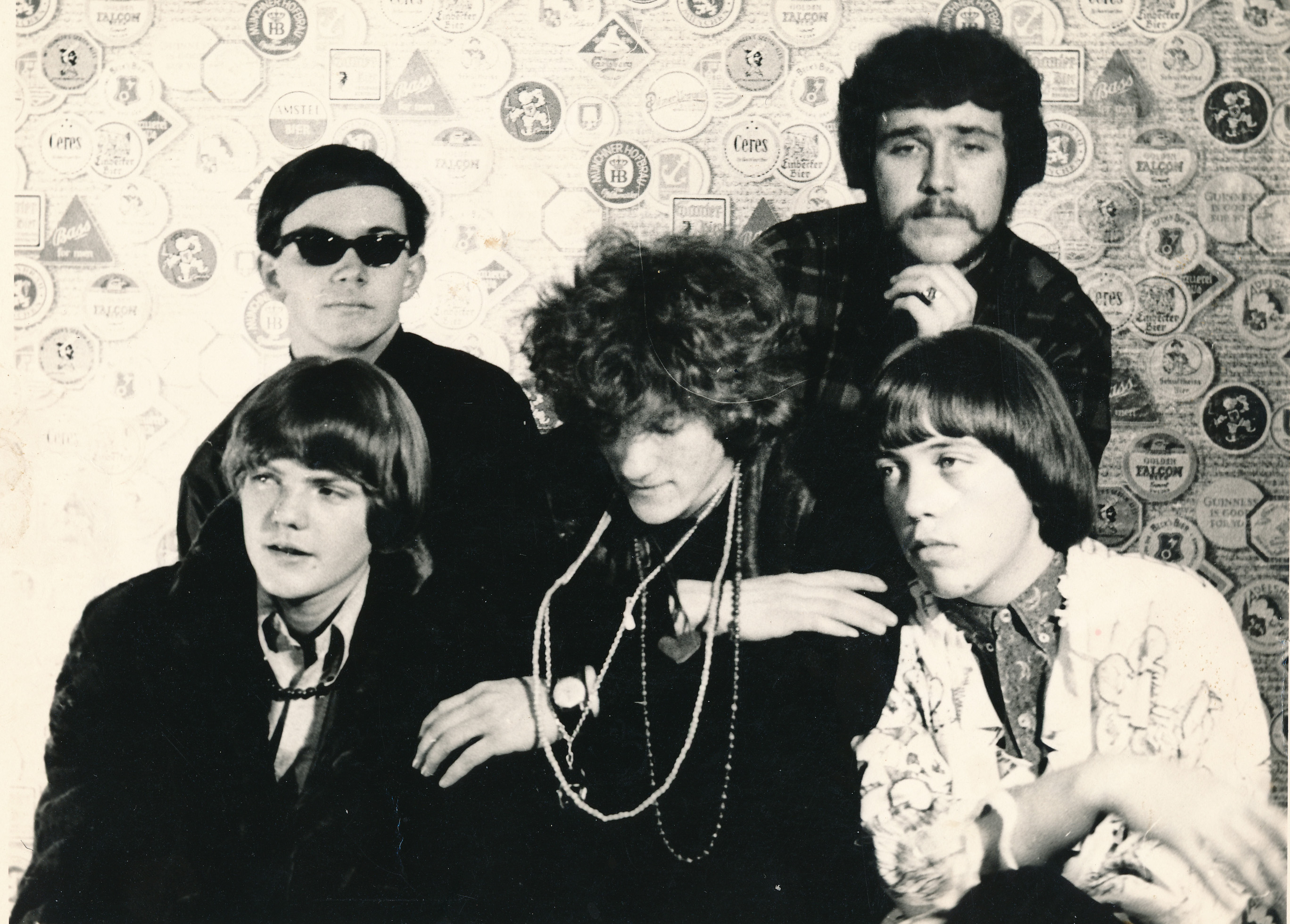
The pre-ACHE beginnings: McKENZIE SET, mid-1967
Photo by Torsten Olafsson, from the top left and down:
Jesper (bs), Gert (voc/rg) & Finn (lg/voc), Kjeld (dr), Torben (el. piano)
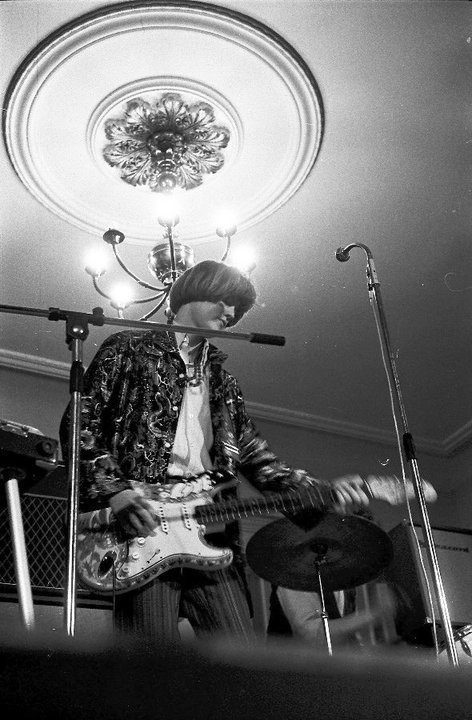
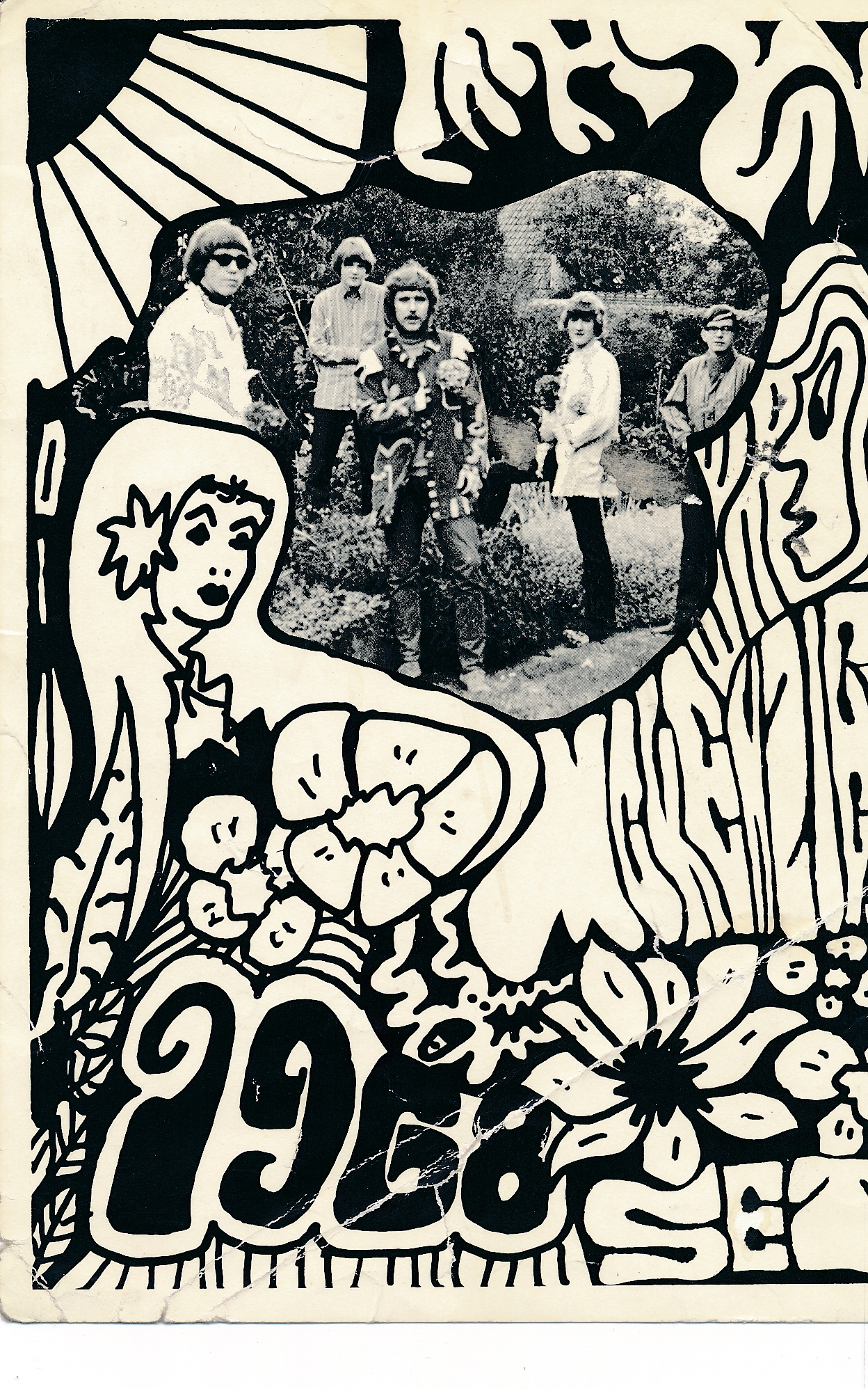
The pre-ACHE beginnings: McKENZIE SET, 1967 to very early 1968
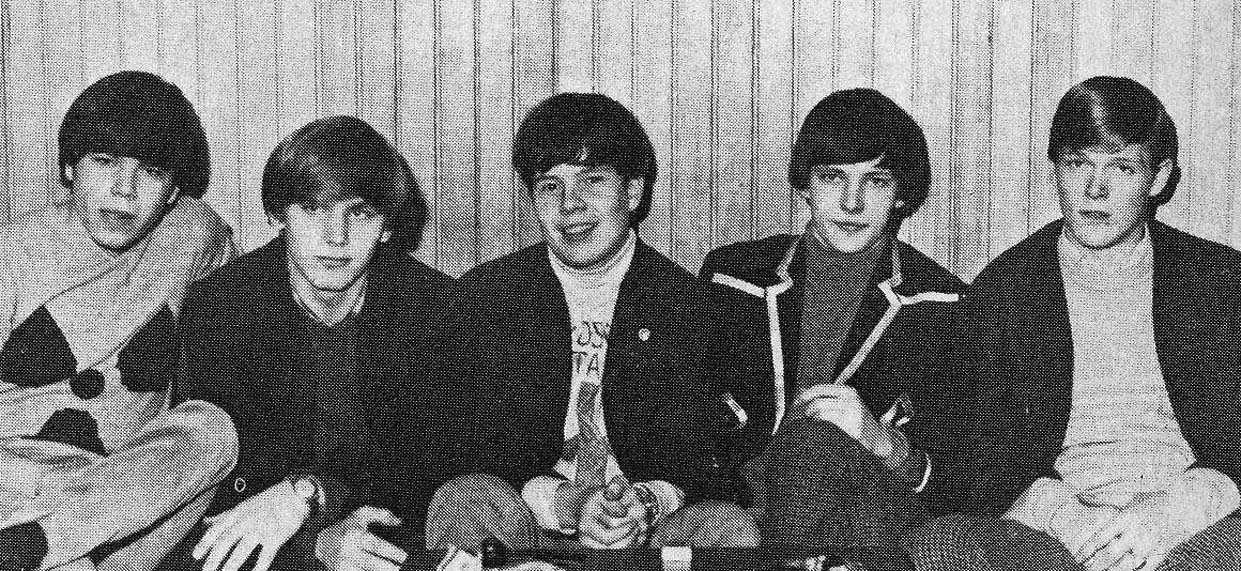
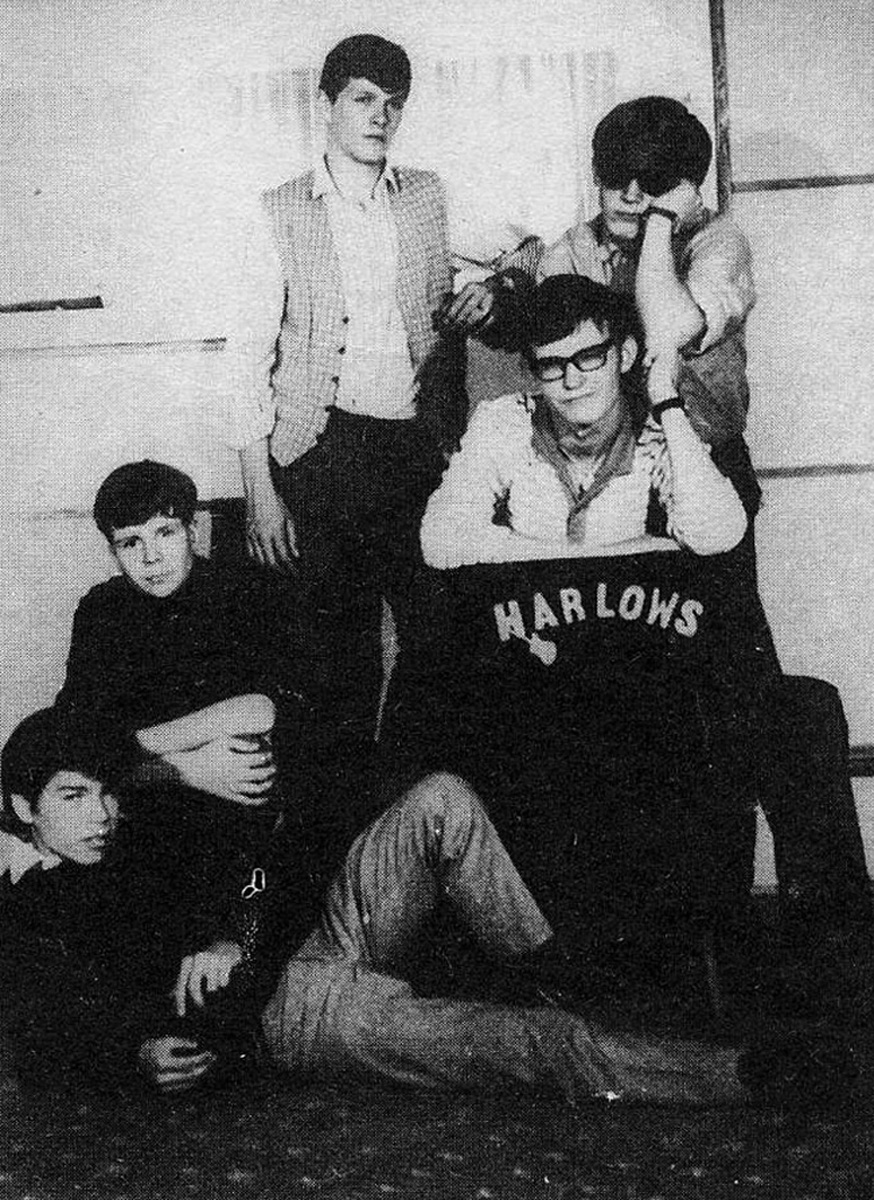
The pre-ACHE beginnings: The HARLOWS, 1965 & 1966:
Left, from the left, 1965: Glenn (dr), Peter (bs), Jørgen "Rup"(lg), Jørgen (rg), Dan (voc)
Right, from the top, left, 1966: Dan (voc), Peter (bs), Jørgen (rg), Jørgen "Rup" (lg), Glenn (dr)
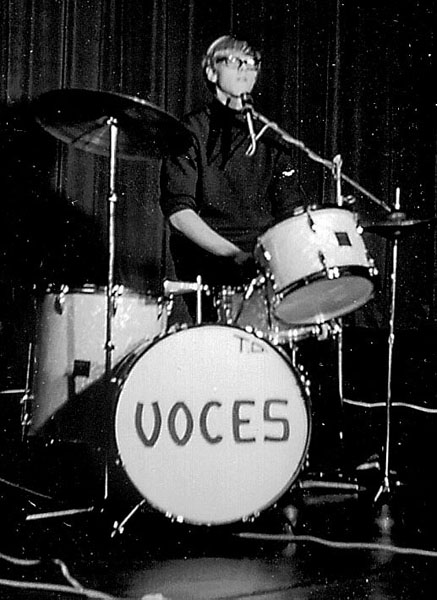
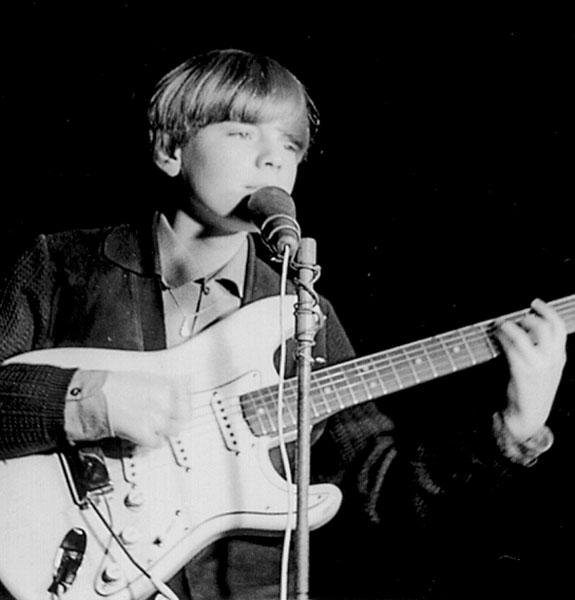
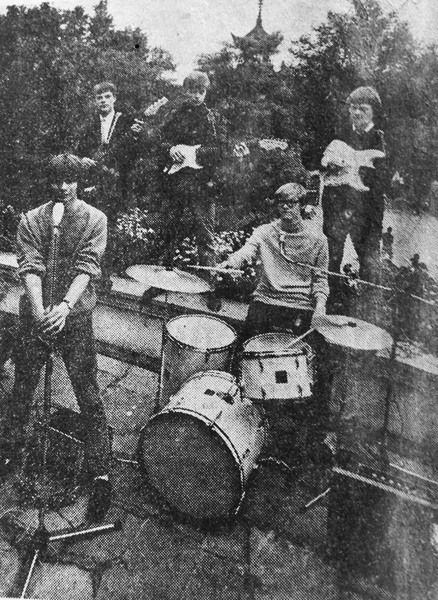
The pre-ACHE beginnings: Drummer Torsten Olafsson, left, and guitarist Finn Olafsson, center,
rehearsing with their very first music group named VOCES on the concert hall stage in Tivoli, Copenhagen.
Right: VOCES band photo shoot in the Tivoli Garden in Summer, 1966.
From the top, left: Jimmy (bs), Leif (rg), Finn (lg/voc), Bengt (lead voc), Torsten (dr/voc)
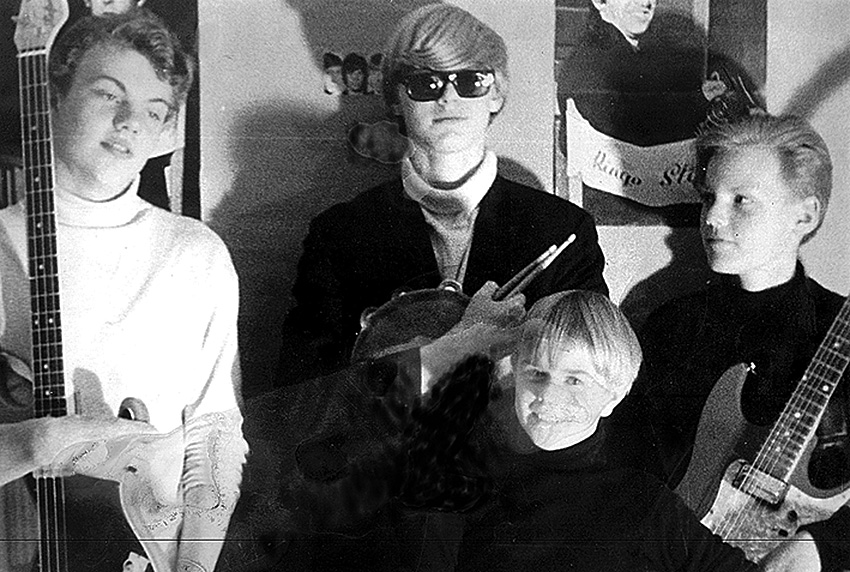
The pre-ACHE beginnings: VOCES, 1965:
Jimmy (bs), Torsten (dr/voc), Frank (rg), Finn (lg)
Photo by Mikkel Scharff
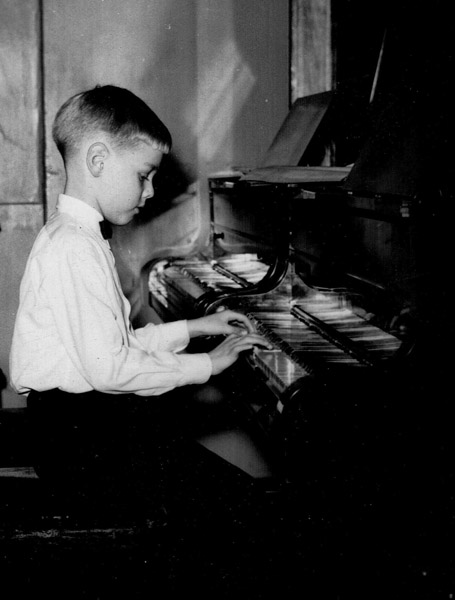
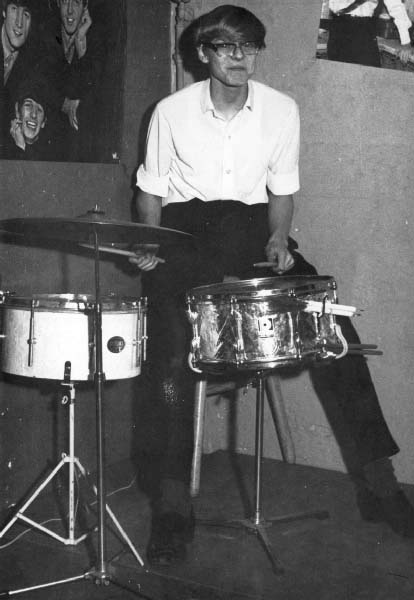
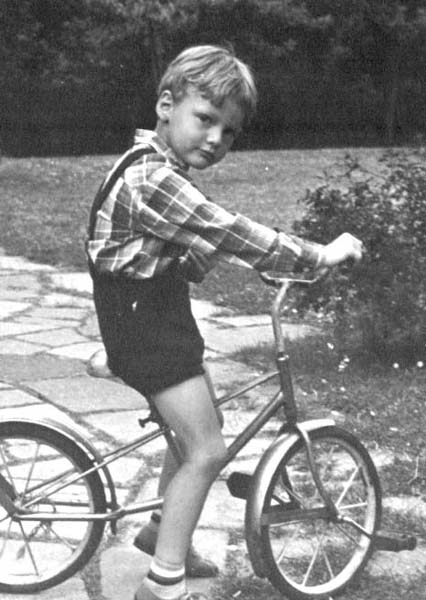
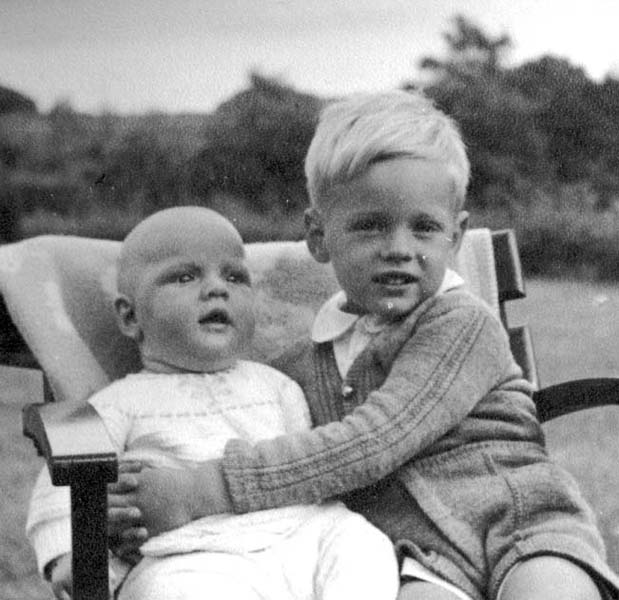
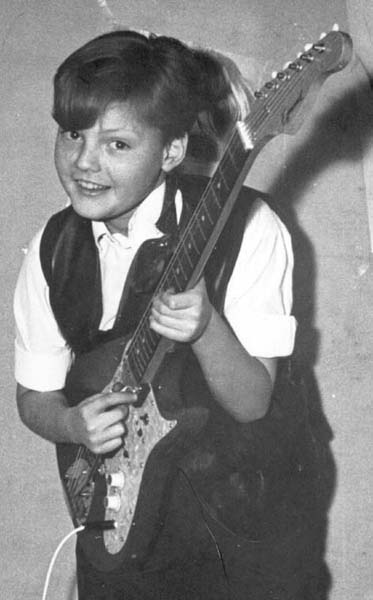
The pre-ACHE beginnings, 1964 and even before: Brothers Torsten Olafsson, born 1950, and Finn Olafsson, bborn 1953
From the left: Torsten, 1957 - Torsten, 1964 - Finn, 1959 - Finn & Torsten, 1955 - Finn, 1964.
ACHE PICTURE GALLERIES 1964 and On ... - LINKS
ACHE HISTORICAL PICTURE GALLERY 1964 to 1976:

ACHE HISTORICAL PICTURE GALLERY 1975 to 1981:
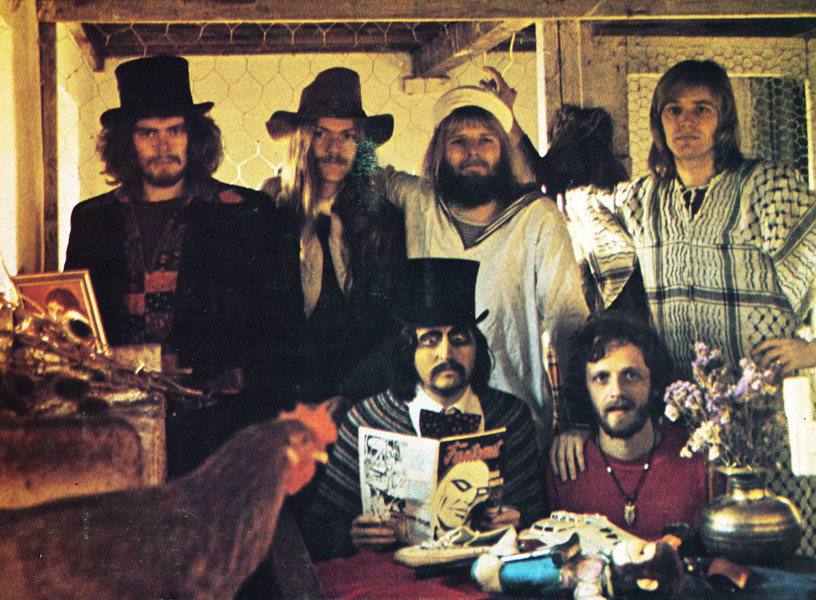
ACHE HISTORICAL PICTURE GALLERY 1981 to 2019:
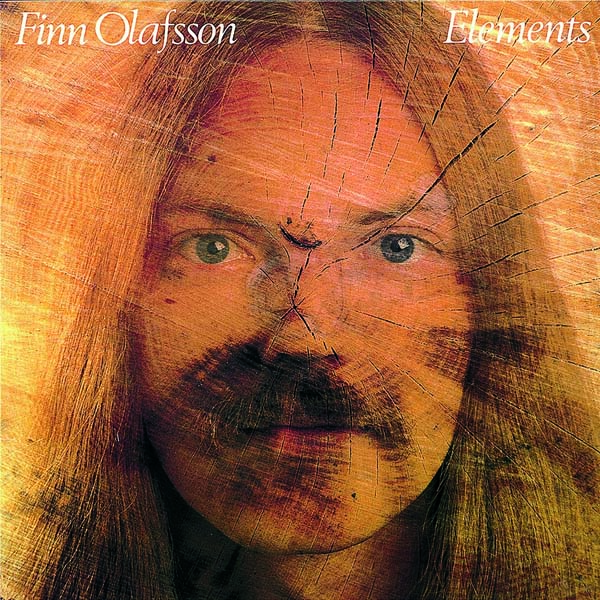
ACHE HISTORICAL PICTURE GALLERY 2019 to 2022:
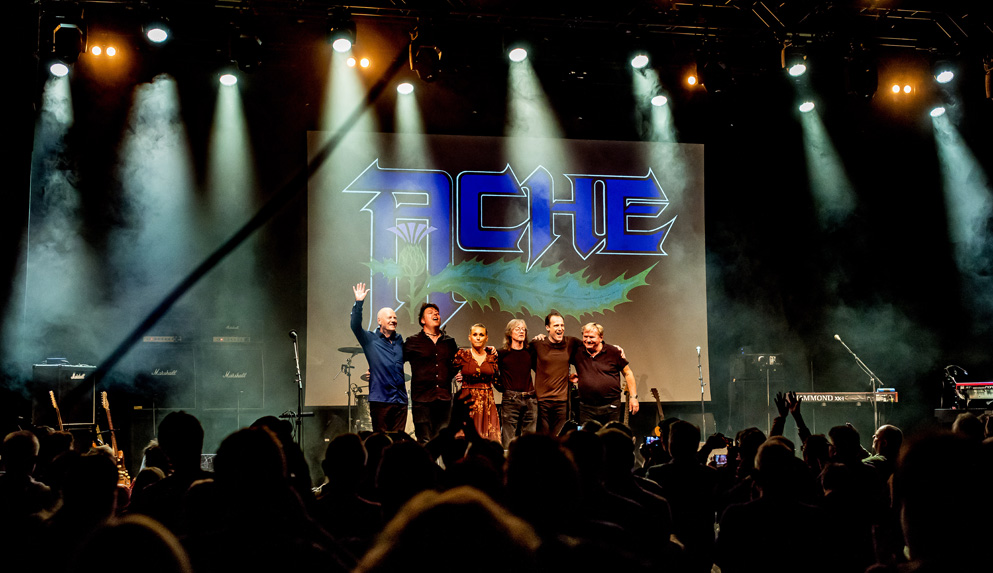
ACHE HISTORICAL PICTURE GALLERY 2023 and on ...:
